
Bomb Defusal Manual
Expanded Mod Version
Road To Centurion (section 10)
www.keeptalkinggame.com
ktane.timwi.de
lotsofs.github.io/KTANE

www.keeptalkinggame.com
ktane.timwi.de
lotsofs.github.io/KTANE
Welcome to the dangerous and challenging world of bomb defusing.
Study this manual carefully; you are the expert. In these pages you will find everything you need to know to defuse even the most insidious of bombs.
And remember — One small oversight and it could all be over!
A bomb will explode when its countdown timer reaches 0:00 or when too many strikes have been recorded. The only way to defuse a bomb is to disarm all of its modules before its countdown timer expires.
Front |
Side |
Each bomb will include a certain number of modules that must be disarmed. With a few exceptions, each module is discrete and can be disarmed in any order.
Instructions for disarming modules can be found in Section 1. "Needy" modules present a special case and are described in Section 2. Translation help for translated modules can be found in Section 3.
When the Defuser makes a mistake, the bomb will record a strike which will be displayed on the indicator above the countdown timer. Bombs with a strike indicator will typically explode upon the third strike. The timer will begin to count down faster after a strike has been recorded.
If no strike indicator is present above the countdown timer, the bomb will explode upon the first strike, leaving no room for error.
The strike indicator will only display up to two strikes. Any additional strikes will not be displayed, even if the bomb allows more than two strikes.
Some disarming instructions will require specific information about the bomb, such as the serial number or other widgets. This type of information can typically be found on the top, bottom, or sides of the bomb casing.
Many modules will require information about Indicators, Batteries, or Ports. See Appendix A, B, and C for identification instructions. Manual pages of certain modules requiring this information may not always refer to these appendices.
Further appendices provide elaboration on other widgets, as well as concepts that will be useful in disarming certain modules.
Modules can be identified by an LED in the corner, usually the top right. When this LED is lit green, the module has been disarmed.
All modules must be disarmed to defuse the bomb.
Wires are the lifeblood of electronics! Wait, no, electricity is the lifeblood. Wires are more like the arteries. The veins? No matter…
| 3 wires:
If there are no red wires, cut the second wire. Otherwise, if the last wire is white, cut the last wire. Otherwise, if there is more than one blue wire, cut the last blue wire. Otherwise, cut the last wire. |
| 4 wires:
If there is more than one red wire and the last digit of the serial number is odd, cut the last red wire. Otherwise, if the last wire is yellow and there are no red wires, cut the first wire. Otherwise, if there is exactly one blue wire, cut the first wire. Otherwise, if there is more than one yellow wire, cut the last wire. Otherwise, cut the second wire. |
| 5 wires:
If the last wire is black and the last digit of the serial number is odd, cut the fourth wire. Otherwise, if there is exactly one red wire and there is more than one yellow wire, cut the first wire. Otherwise, if there are no black wires, cut the second wire. Otherwise, cut the first wire. |
| 6 wires:
If there are no yellow wires and the last digit of the serial number is odd, cut the third wire. Otherwise, if there is exactly one yellow wire and there is more than one white wire, cut the fourth wire. Otherwise, if there are no red wires, cut the last wire. Otherwise, cut the fourth wire. |
You might think that a button telling you to press it is pretty straightforward. That’s the kind of thinking that gets people exploded.
See Appendix A for indicator identification reference.
See Appendix B for battery identification reference.
Follow these rules in the order they are listed. Perform the first action that applies:
If you start holding the button down, a colored strip will light up on the right side of the module. Based on its color, you must release the button at a specific point in time:
I'm not sure what these symbols are, but I suspect they have something to do with occult.
 |
 |
 |
 |
 |
 |
|||||
 |
 |
 |
 |
 |
 |
|||||
 |
 |
 |
 |
 |
 |
|||||
 |
 |
 |
 |
 |
 |
|||||
 |
 |
 |
 |
 |
 |
|||||
 |
 |
 |
 |
 |
 |
|||||
 |
 |
 |
 |
 |
 |
This is like one of those toys you played with as a kid where you have to match the pattern that appears, except this one is a knockoff that was probably purchased at a dollar store.
If the serial number contains a vowel:
| Red Flash | Blue Flash | Green Flash | Yellow Flash | ||
|---|---|---|---|---|---|
| Button to press: | No Strikes | Blue | Red | Yellow | Green |
| 1 Strike | Yellow | Green | Blue | Red | |
| 2 Strikes | Green | Red | Yellow | Blue | |
If the serial number does not contain a vowel:
| Red Flash | Blue Flash | Green Flash | Yellow Flash | ||
|---|---|---|---|---|---|
| Button to press: | No Strikes | Blue | Yellow | Green | Red |
| 1 Strike | Red | Blue | Yellow | Green | |
| 2 Strikes | Yellow | Green | Blue | Red | |
This contraption is like something out of a sketch comedy routine, which might be funny if it wasn't connected to a bomb. I’ll keep this brief, as words only complicate matters.
Based on the display, read the label of a particular button and proceed to step 2:
|
|
|
|
|
|
||||||||||||||||||||||||||||||||||||||||||||||||
|
|
|
|
|
|
||||||||||||||||||||||||||||||||||||||||||||||||
|
|
|
|
|
|
||||||||||||||||||||||||||||||||||||||||||||||||
|
|
|
|
|
|
||||||||||||||||||||||||||||||||||||||||||||||||
|
|
|
|
||||||||||||||||||||||||||||||||||||||||||||||||||
Using the label from step 1, push the first button that appears in its corresponding list:
READY: |
YES, OKAY, WHAT, MIDDLE, LEFT, PRESS, RIGHT, BLANK, READY, NO, FIRST, UHHH, NOTHING, WAIT |
|---|---|
FIRST: |
LEFT, OKAY, YES, MIDDLE, NO, RIGHT, NOTHING, UHHH, WAIT, READY, BLANK, WHAT, PRESS, FIRST |
NO: |
BLANK, UHHH, WAIT, FIRST, WHAT, READY, RIGHT, YES, NOTHING, LEFT, PRESS, OKAY, NO, MIDDLE |
BLANK: |
WAIT, RIGHT, OKAY, MIDDLE, BLANK, PRESS, READY, NOTHING, NO, WHAT, LEFT, UHHH, YES, FIRST |
NOTHING: |
UHHH, RIGHT, OKAY, MIDDLE, YES, BLANK, NO, PRESS, LEFT, WHAT, WAIT, FIRST, NOTHING, READY |
YES: |
OKAY, RIGHT, UHHH, MIDDLE, FIRST, WHAT, PRESS, READY, NOTHING, YES, LEFT, BLANK, NO, WAIT |
WHAT: |
UHHH, WHAT, LEFT, NOTHING, READY, BLANK, MIDDLE, NO, OKAY, FIRST, WAIT, YES, PRESS, RIGHT |
UHHH: |
READY, NOTHING, LEFT, WHAT, OKAY, YES, RIGHT, NO, PRESS, BLANK, UHHH, MIDDLE, WAIT, FIRST |
LEFT: |
RIGHT, LEFT, FIRST, NO, MIDDLE, YES, BLANK, WHAT, UHHH, WAIT, PRESS, READY, OKAY, NOTHING |
RIGHT: |
YES, NOTHING, READY, PRESS, NO, WAIT, WHAT, RIGHT, MIDDLE, LEFT, UHHH, BLANK, OKAY, FIRST |
MIDDLE: |
BLANK, READY, OKAY, WHAT, NOTHING, PRESS, NO, WAIT, LEFT, MIDDLE, RIGHT, FIRST, UHHH, YES |
OKAY: |
MIDDLE, NO, FIRST, YES, UHHH, NOTHING, WAIT, OKAY, LEFT, READY, BLANK, PRESS, WHAT, RIGHT |
WAIT: |
UHHH, NO, BLANK, OKAY, YES, LEFT, FIRST, PRESS, WHAT, WAIT, NOTHING, READY, RIGHT, MIDDLE |
PRESS: |
RIGHT, MIDDLE, YES, READY, PRESS, OKAY, NOTHING, UHHH, BLANK, LEFT, FIRST, WHAT, NO, WAIT |
YOU: |
SURE, YOU ARE, YOUR, YOU'RE, NEXT, UH HUH, UR, HOLD, WHAT?, YOU, UH UH, LIKE, DONE, U |
YOU ARE: |
YOUR, NEXT, LIKE, UH HUH, WHAT?, DONE, UH UH, HOLD, YOU, U, YOU'RE, SURE, UR, YOU ARE |
YOUR: |
UH UH, YOU ARE, UH HUH, YOUR, NEXT, UR, SURE, U, YOU'RE, YOU, WHAT?, HOLD, LIKE, DONE |
YOU'RE: |
YOU, YOU'RE, UR, NEXT, UH UH, YOU ARE, U, YOUR, WHAT?, UH HUH, SURE, DONE, LIKE, HOLD |
UR: |
DONE, U, UR, UH HUH, WHAT?, SURE, YOUR, HOLD, YOU'RE, LIKE, NEXT, UH UH, YOU ARE, YOU |
U: |
UH HUH, SURE, NEXT, WHAT?, YOU'RE, UR, UH UH, DONE, U, YOU, LIKE, HOLD, YOU ARE, YOUR |
UH HUH: |
UH HUH, YOUR, YOU ARE, YOU, DONE, HOLD, UH UH, NEXT, SURE, LIKE, YOU'RE, UR, U, WHAT? |
UH UH: |
UR, U, YOU ARE, YOU'RE, NEXT, UH UH, DONE, YOU, UH HUH, LIKE, YOUR, SURE, HOLD, WHAT? |
WHAT?: |
YOU, HOLD, YOU'RE, YOUR, U, DONE, UH UH, LIKE, YOU ARE, UH HUH, UR, NEXT, WHAT?, SURE |
DONE: |
SURE, UH HUH, NEXT, WHAT?, YOUR, UR, YOU'RE, HOLD, LIKE, YOU, U, YOU ARE, UH UH, DONE |
NEXT: |
WHAT?, UH HUH, UH UH, YOUR, HOLD, SURE, NEXT, LIKE, DONE, YOU ARE, UR, YOU'RE, U, YOU |
HOLD: |
YOU ARE, U, DONE, UH UH, YOU, UR, SURE, WHAT?, YOU'RE, NEXT, HOLD, UH HUH, YOUR, LIKE |
SURE: |
YOU ARE, DONE, LIKE, YOU'RE, YOU, HOLD, UH HUH, UR, SURE, U, WHAT?, NEXT, YOUR, UH UH |
LIKE: |
YOU'RE, NEXT, U, UR, HOLD, DONE, UH UH, WHAT?, UH HUH, YOU, LIKE, SURE, YOU ARE, YOUR |
Memory is a fragile thing but so is everything else when a bomb goes off, so pay attention!
If the display is 1, press the button in the second position.
If the display is 2, press the button in the second position.
If the display is 3, press the button in the third position.
If the display is 4, press the button in the fourth position.
If the display is 1, press the button labeled "4".
If the display is 2, press the button in the same position as you pressed in stage 1.
If the display is 3, press the button in the first position.
If the display is 4, press the button in the same position as you pressed in stage 1.
If the display is 1, press the button with the same label you pressed in stage 2.
If the display is 2, press the button with the same label you pressed in stage 1.
If the display is 3, press the button in the third position.
If the display is 4, press the button labeled "4".
If the display is 1, press the button in the same position as you pressed in stage 1.
If the display is 2, press the button in the first position.
If the display is 3, press the button in the same position as you pressed in stage 2.
If the display is 4, press the button in the same position as you pressed in stage 2.
If the display is 1, press the button with the same label you pressed in stage 1.
If the display is 2, press the button with the same label you pressed in stage 2.
If the display is 3, press the button with the same label you pressed in stage 4.
If the display is 4, press the button with the same label you pressed in stage 3.
An antiquated form of naval communication? What next? At least it's genuine Morse Code, so pay attention and you might just learn something.
| How to Interpret |
|---|
|
1. A short flash represents a dot. 2. A long flash represents a dash. 3. There is a long gap between letters. 4. There is a very long gap before the word repeats. |
| If the word is: | Respond at frequency: |
|---|---|
| shell | 3.505 MHz |
| halls | 3.515 MHz |
| slick | 3.522 MHz |
| trick | 3.532 MHz |
| boxes | 3.535 MHz |
| leaks | 3.542 MHz |
| strobe | 3.545 MHz |
| bistro | 3.552 MHz |
| flick | 3.555 MHz |
| bombs | 3.565 MHz |
| break | 3.572 MHz |
| brick | 3.575 MHz |
| steak | 3.582 MHz |
| sting | 3.592 MHz |
| vector | 3.595 MHz |
| beats | 3.600 MHz |
These wires aren't like the others. Some have stripes! That makes them completely different. The good news is that we've found a concise set of instructions on what to do about it! Maybe too concise...
| Wire has red coloring | |
| Wire has blue coloring | |
| Has ★ symbol | |
| LED is on |
| Letter | Instruction |
|---|---|
| C | Cut the wire |
| D | Do not cut the wire |
| S | Cut the wire if the last digit of the serial number is even |
| P | Cut the wire if the bomb has a parallel port |
| B | Cut the wire if the bomb has two or more batteries |
See Appendix B for battery identification reference.
See Appendix C for port identification reference.
Sometimes, the wire may look like a face, calming you down... and then you explode.
| Wire connected to C3 is | |||||
|---|---|---|---|---|---|
| Black | Blue | Red | White | Yellow | |
| Cut if color | is connected to: | ||||
| Yellow | D2 | D1 | D2 | A2 | D1 |
| Blue | A2 | C4 | A1 | C4 | D4 |
| White | D3 | D2 | D4 | B3 | B2 |
| White | B2 | C1 | B4 | A1 | C1 |
| Red | A1 | B3 | C4 | B2 | B3 |
| Blue | C3 | C2 | C1 | D3 | B1 |
| Black | B1 | D4 | A4 | D2 | B4 |
| Red | C4 | D3 | B1 | C1 | C2 |
| Yellow | A3 | C3 | A2 | A4 | A3 |
| Yellow | D1 | A1 | B2 | B4 | A4 |
It's hard to say how this mechanism works. The engineering is pretty impressive, but there must have been an easier way to manage nine wires.
| Red Wire Occurrences | |
|---|---|
| Wire Occurrence | Cut if connected to: |
| First red occurrence | C |
| Second red occurrence | B |
| Third red occurrence | A |
| Fourth red occurrence | A or C |
| Fifth red occurrence | B |
| Sixth red occurrence | A or C |
| Seventh red occurrence | A, B or C |
| Eighth red occurrence | A or B |
| Ninth red occurrence | B |
| Blue Wire Occurrences | |
|---|---|
| Wire Occurrence | Cut if connected to: |
| First blue occurrence | B |
| Second blue occurrence | A or C |
| Third blue occurrence | B |
| Fourth blue occurrence | A |
| Fifth blue occurrence | B |
| Sixth blue occurrence | B or C |
| Seventh blue occurrence | C |
| Eighth blue occurrence | A or C |
| Ninth blue occurrence | A |
| Black Wire Occurrences | |
|---|---|
| Wire Occurrence | Cut if connected to: |
| First black occurrence | A, B or C |
| Second black occurrence | A or C |
| Third black occurrence | B |
| Fourth black occurrence | A or C |
| Fifth black occurrence | B |
| Sixth black occurrence | B or C |
| Seventh black occurrence | A or B |
| Eighth black occurrence | C |
| Ninth black occurrence | C |
This seems to be some kind of maze, probably stolen off of a restaurant placemat.
Fortunately this password doesn't seem to meet standard government security requirements: 22 characters, mixed case, numbers in random order without any palindromes above length 3.
| about | after | again | below | could |
| every | first | found | great | house |
| large | learn | never | other | place |
| plant | point | right | small | sound |
| spell | still | study | their | there |
| these | thing | think | three | water |
| where | which | world | would | write |
It’s easy to identify colours. Red, Blue, Green, etc. Turns out it's a bit harder when you display a word colour in a different colour though...
|
The colour of the last word in the sequence is Red:
If Green is used as the word at least three times in the sequence, press Yes on the third time Green is used as either the word or the colour of the word in the sequence.
Otherwise, if Blue is used as the colour of the word exactly once, press No when the word Magenta is shown.
Otherwise, press Yes the last time White is either the word or the colour of the word in the sequence.
|
|
The colour of the last word in the sequence is Yellow:
If the word Blue is shown in Green colour, press Yes on the first time Green is used as the colour of the word.
Otherwise, if the word White is shown in either White or Red colour, press Yes on the second time in the sequence where the colour of the word does not match the word itself.
Otherwise, count the number of times Magenta is used as either the word or the colour of the word in the sequence (the word Magenta in Magenta colour only counts as one), and press No on the colour in the total's position (e.g. a total of 4 means the fourth colour in sequence).
|
Continuation of previous table...
|
The colour of the last word in the sequence is Green:
If a word occurs consecutively with different colours, press No on the fifth entry in the sequence.
If Magenta is used as the word as least three times in the sequence, press No on the first time Yellow is used as either the word or the colour of the word in the sequence.
Otherwise, press Yes on any colour where the colour of the word matches the word itself.
|
|
The colour of the last word in the sequence is Blue:
If the colour of the word does not match the word itself three times or more in the sequence, press Yes on the first time in the sequence where the colour of the word does not match the word itself.
If the word Red is shown in Yellow colour, or the word Yellow is shown in White colour, press No when the word White is shown in Red colour.
Otherwise, press Yes the last time Green is either the word or the colour of the word in the sequence.
|
|
The colour of the last word in the sequence is Magenta:
If a colour occurs consecutively with different words, press Yes on the third entry in the sequence.
If the number of times the word Yellow appears is greater than the number of times that the colour of the word is Blue, press No the last time the word Yellow is in the sequence.
Otherwise, press No on the first time in the sequence where the colour of the word matches the word of the seventh entry in the sequence.
|
|
The colour of the last word in the sequence is White:
If the colour of the third word matches the word of the fourth word or fifth word, press No the first time that Blue is used as the word or the colour of the word in the sequence.
If the word Yellow is shown in Red colour, press Yes on the last time Blue is used as the colour of the word.
Otherwise, press No.
|
What do you get when you drop a piano down a mine shaft? A flat minor.
See Appendix A for indicator identification reference.
See Appendix B for battery identification reference.
See Appendix C for port identification reference.
See Appendix Piano for piano/keyboard reference.
| Required Symbol(s) | Further Requirements | Note Sequence |
| b | Last digit of serial number is even | Bb Bb Bb Bb Gb Ab Bb Ab Bb |
| c or # | 2 or more battery holders | Eb Eb D D Eb Eb D Eb Eb D D Eb |
| n and U | (No other requirements) | E F# F# F# F# E E E |
| C or T | RCA port is present | Bb A Bb F Eb Bb A Bb F Eb |
| B | SND indicator is present and lit | E E E C E G G |
| m or U or c | 3 or more batteries | C# D E F C# D E F Bb A |
| b and # | (No other requirements) | G G C G G C G C |
| C or m | Serial number contains a 3, 7 or 8 | A E F G F E D D F A |
| n or T or B | (No other requirements) | G G G Eb Bb G Eb Bb G |
| (No requirement) | (No other requirements) | B D A G A B D A |
This module demands attention from the sea - unlucky for you the bomb's bone dry.
See the next page for semaphore reference.
Numbers are signalled by first signalling 'Numerals', then the numbers. Similarly, letters are signalled by first signalling 'Letters', then the letters.
Use the following graphics as a reference to how to interpret semaphore characters.
Rest / Space |
Numerals |
Error / Attention |
A or 1 |
B or 2 |
C or 3 |
D or 4 |
E or 5 |
F or 6 |
G or 7 |
H or 8 |
I or 9 |
J or Letters |
K or 0 |
L |
M |
N |
O |
P |
Q |
R |
S |
T |
U |
V |
W |
X |
Y |
Z |
Cancel / Annul |
Math is easy. But is it easy when the numbers are in another language? Let’s find out.
Decipher the characters on the display into numbers and solve the answer to the question. Enter the answer with the keypad and press ‘=’ to submit it. Use ‘-’ to toggle the negative sign for negative answers. There’s no delete button so press those buttons carefully!
For example: =(+=( translates to 1+1
The answer to enter is 2.
| Character | Number |
|---|---|
| :) | 0 |
| =( | 1 |
| (: | 2 |
| )= | 3 |
| :( | 4 |
| ): | 5 |
| =) | 6 |
| (= | 7 |
| :| | 8 |
| |: | 9 |
A yes or no choice isn't too bad. Unfortunately you have to make five of them and any of them could be your last.
Switches need to be flipped to match the lit indicators either above or below them.
Avoid the following switch states:
This poorly programmed lookup device is as maddening with its slow responses as it is unforgiving with ill-timed inputs. Patience required.
Query a series of two-letter codes to track down the correct answer before submitting it. This primitive lookup machine is intolerant to incomplete and excessive inputs, as well as any input while it is busy.
If the serial number contains a letter, use the leftmost letter's numeric position in the alphabet as your base value (e.g. A=1, B=2). For no letters, use 0.
Add the last digit of the serial number multiplied by the number of batteries present.
If there is a Stereo RCA port present, double the current value.*
This value** is now the current code.
* Note: Skip this step if there is also an RJ45 port present.
** Note: Use the last two digits if the value is greater than 99. Prepend with a zero if less than 10.
Using the current code, look up the character pair. Enter that pair into the device and press "Query".
| -0 | -1 | -2 | -3 | -4 | -5 | -6 | -7 | -8 | -9 | |
|---|---|---|---|---|---|---|---|---|---|---|
| 0- | kb | dk | gv | tk | pv | kp | bv | vt | pz | dt |
| 1- | ee | zk | ke | ck | zp | pp | tp | tg | pd | pt |
| 2- | tz | eb | ec | cc | cz | zv | cv | gc | bt | gt |
| 3- | bz | pk | kz | kg | vd | ce | vb | kd | gg | dg |
| 4- | pb | vv | ge | kv | dz | pe | db | cd | td | cb |
| 5- | gb | tv | kk | bg | bp | vp | ep | tt | ed | zg |
| 6- | de | dd | ev | te | zd | bb | pc | bd | kc | zb |
| 7- | eg | bc | tc | ze | zc | gp | et | vc | tb | vz |
| 8- | ez | ek | dv | cg | ve | dp | bk | pg | gk | gz |
| 9- | kt | ct | zz | vg | gd | cp | be | zt | vk | dc |
The response code from the device from the query in Step 2 is now your current code. Perform Step 2 an additional 2 times, using the new code each time.
After receiving the response code from the final query, look up the corresponding character pair, enter the pair into the device and press "Submit".
Randomly punching in the letters will eventually give me another word. One of the arrangements must work, right?
The display shows a word. Rearrange the letters to form another word. It's got to work. It just has to. Note that the status light is on the top left of the module.
See Appendix 1819 for an anagrams table reference.
These letters are confusing. I think they're in the wrong order.
The display shows a scrambled word. Decipher the word and punch it in to solve this module.
See Appendix 1819 for an anagrams table reference.
This looks like a combination lock. I thought I was disarming this bomb, not unlocking it.
See Appendix B for battery identification reference.
See Appendix Two Factor for two factor identification reference.
Like a typical combination lock, this requires 3 numbers to unlock. Turn the dial to the right to the first number. Then turn it to the left for the second number. Finally, turn it to the right for the last number. That will unlock it!
If sequential numbers in the code are the same, perform a full revolution back to
the same number.
How to decode the combination:
Each number ranges from 0-19. Refer to the table to determine each number. Be
careful if there are two factor codes present because they change periodically!
First number:
|
Second number:
|
Third number:
|
I think someone tried to make this module look really cool, but failed.
 |
 |
 |
 |
 |
 |
|||||
 |
 |
 |
 |
 |
 |
|||||
 |
 |
 |
 |
 |
 |
|||||
 |
 |
 |
 |
 |
 |
|||||
 |
 |
 |
 |
 |
 |
|||||
 |
 |
 |
 |
 |
 |
|||||
 |
 |
 |
 |
 |
 |
If bombs were stock brokers...
Defusing this module requires the expert to have a device that can connect to the World Wide Web.
This module has the ability to connect to the internet and query the state of foreign exchange rates. There should be a three times three grid of keys, each with a light emitting diode. DO NOT PRESS ANY KEY ON THIS MODULE WHILE THE LIGHT EMITTING DIODES ARE FLASHING IN SEQUENCE.
The keys are grouped by rows:
| Top row: ISO 4217 alphabetic code for the base currency.[1][2] |
| Middle row: ISO 4217 alphabetic code for the target currency.[1][2] |
| Bottom row: Value of currency to convert. |
Enter the following uniform resource locator into your internet capable device:
http://api.exchangeratesapi.io/latest?base=XXX&symbols=YYY
Replace XXX with the ISO 4217 alphabetic code for the base currency.
Replace YYY with the ISO 4217 alphabetic code for the target currency.
You will receive data in a Javascript object notation format, look for {"YYY": NUMBER}, where NUMBER will be the exchange rate. Using the exchange rate,
convert the number in the bottom row to the target currency, round that number
down and take note of the 2nd digit from the left[4]. Press the Nth key where N is
the noted number (count keys from left to right, top to bottom)[5].
In this case the module failed to query today's currency rates. Get the ISO 4217 numeric code for the target currency's country and take note the 2nd digit from the right. Press the Nth key where N is the noted number (count keys from left to right, top to bottom)[5].
[1]: If there is more than one battery on the bomb, the base currency code and target currency code is swapped.
[2]: This may instead be the ISO 4217 numeric code.
[3]: Note the currency rates are updated around 4PM CET.
[4]: In the case the converted currency is less than 10, the noted number is 0.
[5]: In the case the noted number is 0, press the top left key.
See Appendix ISO 4217 for currency codes reference.
“Why did we send a deaf person to defuse a bomb?” — Person who is no longer alive.
Press the play button to play a sound clip through the speaker. Each sound clip has a corresponding code that contains any of the four symbols $ * & #. Match the sound clip to the table below and enter the code via the four button keypad.
| Taxi Dispatch | &&&** | Dial-up Internet | *#&*& |
| Cow | &$#$& | Police Radio Scanner | **### |
| Extractor Fan | $#$*& | Censorship Bleep | &&$&* |
| Train Station | #$$** | Medieval Weapons | &$**& |
| Arcade | $#$#* | Door Closing | #$#&$ |
| Casino | **$*# | Chainsaw | &#&&# |
| Supermarket | #$$&* | Compressed Air | $$*$* |
| Soccer Match | ##*$* | Servo Motor | $&#$$ |
| Tawny Owl | $#*$& | Waterfall | &**$$ |
| Sewing Machine | #&&*# | Tearing Fabric | $&&*& |
| Thrush Nightingale | **#** | Zipper | &$&## |
| Car Engine | &#**& | Vacuum Cleaner | #&$*& |
| Reloading Glock 19 | $&**# | Ballpoint Pen Writing | $*$** |
| Oboe | &#$$# | Rattling Iron Chain | *#$&& |
| Saxophone | $&&** | Book Page Turning | ###&$ |
| Tuba | #&$## | Table Tennis | *$$&$ |
| Marimba | &*$*$ | Squeaky Toy | $*&## |
| Phone Ringing | &$$&* | Helicopter | #&$&& |
| Tibetan Nuns | #&&&& | Firework Exploding | $&$$* |
| Throat Singing | **$$$ | Glass Shattering | *$*$* |
| Beach | *&*&& |
Note: pressing play also clears whatever code you have entered.
Get it? Because it uses morse and maths! I'll see myself out...
Transmitted morse is interpreted based on gaps between button holds.
Holding for more than double the length of the average gap is considered to be a dash, and anything shorter is considered a dot.
When transmitting, E and T are considered equal, as they are indistinguishable.
Take the 4th and 5th character of the serial number, this is your character pair.
Perform each step below in sequence, modifying your character pair progressively:
After performing all steps, perform whatever rule applies below:
See Appendix Alphabet for alternative alphabet encoding reference.
If the bomb doesn’t kill us a brain haemorrhage will.
In order to defuse this part of the bomb you will need good 3D orientation skills. A virtual cube needs to be rotated into a specific orientation using the four keys along the bottom. Unfortunately there is no display to indicate the current orientation of the virtual cube so you will have to imagine the state of the cube yourself.
The two keys in the bottom left will yaw the cube clockwise or anti-clockwise, respective to looking at the cube from the top.
The two keys in the bottom right will roll the cube clockwise or anti-clockwise, respective to the virtual observer. The virtual observer’s position is indicated on the module as an eye. NOTE: The virtual observer’s position may change.
For example, if the eye is at the bottom then it is facing the
‘FRONT’ face. Pressing ‘Roll clockwise’ will place the ‘LEFT’
face where the ‘TOP’ face is.
Rotate the cube so that the initial left face is in the same position as the initial top face, then press the SET button.
Rotate the cube so that the initial bottom face is in the same position as the initial right face, then press the SET button.
Rotate the cube so that the initial bottom face is in the same position as the initial front face and the initial left face is in the same position as the initial bottom face, then press the SET button.
Rotate the cube so that the initial right face is in the same position as the initial bottom face and the initial back face is in the same position as the initial front face, then press the SET button.
Rotate the cube so that the initial top face is in the same position as the initial bottom face, then press the SET button.
Rotate the cube so that the initial top face is in the same position as the initial left face, then press the SET button.
If you get strike then the virtual cube will be reset to the initial position. Be aware you may need to select a new rule if the observer is now in a different position.
What is this, some kind of circuit visualization? I don't even care anymore...
To determine the right chart on the next page you will need a character of the bomb’s serial number. Use the following rules to find out which character you need. Then, on the next page, search for that character in the codes that label the charts. The chart with a code containing your character is the chart you are looking for.
|
If the numbers on this module are all different, use the last character of the serial number.
Otherwise, if there is more than one ''1'' on the module, look at the first character of the serial number.
Otherwise, if there is more than one ''7'' on the module, look at the last character of the serial number.
Otherwise, if there are at least three ''2'' on the module, look at the second character of the serial number.
Otherwise, if there is no ''5'' on the module, look at the fifth character of the serial number.
Otherwise, if there are exactly two ''8''s on the module, look at the third character of the serial number.
Otherwise, if there are more than 6 batteries or no batteries on the bomb, look at the last character of the serial number.
Otherwise, count the number of batteries on the bomb. Use that number to decide which character of the serial number you should look at. E.g.: if there are 3 batteries, look at the third character of the serial number.
|
This one likes attention, but not too much attention.
First number:
|
Second number:
|
All other numbers:
|
Sometimes, the stars have it out for you. Is this bomb a good or a poor omen?

| 
| 
| 
| 
| 
| 
| 
| 
| 
| |
|---|---|---|---|---|---|---|---|---|---|---|
 | 0 | 0 | 1 | -1 | 0 | 1 | -2 | 2 | 0 | -1 |
 | -2 | 0 | -1 | 0 | 2 | 0 | -2 | 2 | 0 | 1 |
 | -1 | -1 | 0 | -1 | 1 | 2 | 0 | 2 | 1 | -2 |
 | -1 | 2 | -1 | 0 | -2 | -1 | 0 | 2 | -2 | 2 |

| 
| 
| 
| 
| 
| 
| 
| 
| 
| 
| 
| |
|---|---|---|---|---|---|---|---|---|---|---|---|---|
 | 1 | 0 | -1 | 0 | 0 | 2 | 2 | 0 | 1 | 0 | 1 | 0 |
 | 2 | 2 | -1 | 2 | -1 | -1 | -2 | 1 | 2 | 0 | 0 | 2 |
 | -2 | -1 | 0 | 0 | 1 | 0 | 1 | 2 | -1 | -2 | 1 | 1 |
 | 1 | 1 | -2 | -2 | 2 | 0 | -1 | 1 | 0 | 0 | -1 | -1 |

| 
| 
| 
| 
| 
| 
| 
| 
| 
| 
| 
| |
|---|---|---|---|---|---|---|---|---|---|---|---|---|
 | -1 | -1 | 2 | 0 | -1 | 0 | -1 | 1 | 0 | 0 | -2 | -2 |
 | -2 | 0 | 1 | 0 | 2 | 0 | -1 | 1 | 2 | 0 | 1 | 0 |
 | -2 | -2 | -1 | -1 | 1 | -1 | 0 | -2 | 0 | 0 | -1 | 1 |
 | -2 | 2 | -2 | 0 | 0 | 1 | -1 | 0 | 2 | -2 | -1 | 1 |
 | -2 | 0 | -1 | -2 | -2 | -2 | -1 | 1 | 1 | 1 | 0 | -1 |
 | -1 | -2 | 1 | -1 | 0 | 0 | 0 | 1 | 0 | -1 | 2 | 0 |
 | -1 | -1 | 0 | 0 | 1 | 1 | 0 | 0 | 0 | 0 | -1 | -1 |
 | -1 | 2 | 0 | 0 | 1 | -2 | 1 | 0 | 2 | -1 | 1 | 0 |
 | 1 | 0 | 2 | 1 | -1 | 1 | 1 | 1 | 0 | -2 | 2 | 0 |
 | -1 | 0 | 0 | -1 | -2 | 1 | 2 | 1 | 1 | 0 | 0 | -1 |
| Symbol | Element | Symbol | Planet | Symbol | Planet |
|---|---|---|---|---|---|
 | Fire |  | Sun |  | Jupiter |
 | Water |  | Moon |  | Saturn |
 | Earth |  | Mercury |  | Uranus |
 | Air |  | Venus |  | Neptune |
 | Mars |  | Pluto |
| Symbol | Zodiac | Symbol | Zodiac | Symbol | Zodiac |
|---|---|---|---|---|---|
 | Aries |  | Leo |  | Sagittarius |
 | Taurus |  | Virgo |  | Capricorn |
 | Gemini |  | Libra |  | Aquarius |
 | Cancer |  | Scorpio |  | Pisces |
Logic is easy, but logic AND bomb defusal might not.
See Appendix A for indicator identification reference.
See Appendix B for battery identification reference.
See Appendix C for port identification reference.
| Letter | Statement | Letter | Statement |
|---|---|---|---|
| A | Number of batteries = number of indicators | N | More than 2 battery holders |
| B | Serial number has more letters than digits | O | Has both lit and unlit indicators |
| C | Has IND indicator | P | Has parallel port |
| D | Has FRK indicator | Q | Exactly 2 ports |
| E | Exactly 1 unlit indicator | R | Has PS/2 port |
| F | More than 1 port type | S | Sum of digits in serial number > 10 |
| G | 2 batteries or more | T | Has MSA indicator |
| H | Less than 2 batteries | U | Exactly 1 battery holder |
| I | Last digit of serial number is odd | V | Serial number contains vowels |
| J | More than 4 batteries | W | No indicators |
| K | Exactly 1 lit indicator | X | Exactly 1 indicator |
| L | More than 2 indicators | Y | More than 5 ports |
| M | No duplicate ports | Z | Less than 2 ports |
| Logical Connective | Symbol | Logic Gate Equivalent | Meaning |
|---|---|---|---|
| Conjunction | ∧ | AND | Returns true if all inputs are true. Else returns false. |
| Disjunction | ∨ | OR | Returns true if any input is true. Else returns false. |
| Exclusive Disjunction | ⊻ | XOR | Returns true if exactly one input is true. Else returns false. |
| Alternative Denial | | | NAND | Returns false if all inputs are true. Else returns true. |
| Joint Denial | ↓ | NOR | Returns false if any input is true. Else returns true. |
| Biconditional | ↔ | XNOR | Returns false if exactly one input is true. Else returns true. |
| Implication (Left) | → | - | Returns false when left input is true and right input is false. Else returns true. |
| Implication (Right) | ← | - | Returns false when left input is false and right input is true. Else returns true. |
O knight in shining armour, deliver us from the evils of the skull!
| X | X | |
| X | ||
| X | X |
| last serial digit does not lie on the cross-parts of the module | ||||||||||
| number in the middle of the module | 1 | 2 | 3 | 4 | 5 | 6 | 7 | 8 | ||
|---|---|---|---|---|---|---|---|---|---|---|
| on the cross- part |
1 | 1 | 3 | 5 | 4 | 6 | 7 | 2 | 8 | |
| 2 | 2 | 5 | 7 | 3 | 8 | 1 | 4 | 6 | ||
| 3 | 6 | 4 | 8 | 1 | 7 | 3 | 5 | 2 | ||
| 4 | 8 | 1 | 2 | 5 | 3 | 4 | 6 | 7 | ||
| 5 | 3 | 2 | 6 | 8 | 4 | 5 | 7 | 1 | ||
| 6 | 7 | 6 | 1 | 2 | 5 | 8 | 3 | 4 | ||
| 7 | 4 | 7 | 3 | 6 | 1 | 2 | 8 | 5 | ||
| 8 | 5 | 8 | 4 | 7 | 2 | 6 | 1 | 3 | ||
“row”/“column” on this page always refers to the module.
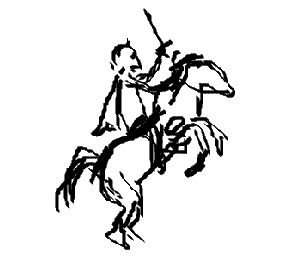
Determining the desired constellation:
Before moving any sliders, use the sum of the rows as R1, R2 and R3 and the sum of the columns as C1, C2 and C3 to look up the target constellation in the table below. The following constellation is also always acceptable.
| 1 | 2 | 3 |
| 4 | 5 | 6 |
| 7 | 8 |
| C1 > C2,C3 | C2 > C1,C3 | C3 > C1,C2 | else | |||||||||||||||||||||||||||||||||||||
|---|---|---|---|---|---|---|---|---|---|---|---|---|---|---|---|---|---|---|---|---|---|---|---|---|---|---|---|---|---|---|---|---|---|---|---|---|---|---|---|---|
| R1 > R2,R3 |
|
|
|
|
||||||||||||||||||||||||||||||||||||
| R2 > R1,R3 |
|
|
|
|
||||||||||||||||||||||||||||||||||||
| R3 > R1,R2 |
|
|
|
|
||||||||||||||||||||||||||||||||||||
| else |
|
|
|
|
Nothing. Literally nothing. Blank. Nada.
| Display | Action |
| ← ← → ← → → | 5/4 |
| 1 3 2 4 | 3/2 |
| LEFT ARROW LEFT WORD RIGHT ARROW LEFT WORD RIGHT ARROW RIGHT WORD | 5/8 |
| BLANK | 1/3 |
| LITERALLY BLANK | 1/5 |
| FOR THE LOVE OF ALL THAT IS GOOD AND HOLY PLEASE FULLSTOP FULLSTOP. | 9/0 |
| AN ACTUAL LEFT ARROW LITERAL PHRASE | 5/3 |
| FOR THE LOVE OF - THE DISPLAY JUST CHANGED, I DIDN'T KNOW THIS MOD COULD DO THAT. DOES IT MENTION THAT IN THE MANUAL? | 8/7 |
| ALL WORDS ONE THREE TO FOR FOR AS IN THIS IS FOR YOU | 4/0 |
| LITERALLY NOTHING | 1/4 |
| NO, LITERALLY NOTHING | 2/5 |
| THE WORD LEFT | 7/0 |
| HOLD ON IT'S BLANK | 1/9 |
| SEVEN WORDS FIVE WORDS THREE WORDS THE PUNCTUATION FULLSTOP | 0/5 |
| THE PHRASE THE WORD STOP TWICE | 9/1 |
| THE FOLLOWING SENTENCE THE WORD NOTHING | 2/7 |
| ONE THREE TO FOR | 3/9 |
| THREE WORDS THE WORD STOP | 7/3 |
| DISREGARD WHAT I JUST SAID. FOUR WORDS, NO PUNCTUATION. ONE THREE 2 4. | 3/1 |
| 1 3 2 FOR | 1/0 |
| DISREGARD WHAT I JUST SAID. TWO WORDS THEN TWO DIGITS. ONE THREE 2 4. | 0/8 |
| WE JUST BLEW UP | 4/2 |
| Display | Action |
| NO REALLY. | 5/2 |
| ← LEFT → LEFT → RIGHT | 5/6 |
| ONE AND THEN 3 TO 4 | 4/7 |
| STOP TWICE | 7/6 |
| LEFT | 6/9 |
| .. | 8/5 |
| PERIOD PERIOD | 8/2 |
| THERE ARE THREE WORDS NO PUNCTUATION READY? STOP DOT PERIOD | 5/0 |
| NOVEBMER OSCAR SPACE, LIMA INDIGO TANGO ECHO ROMEO ALPHA LIMA LIMA YANKEE SPACE NOVEMBER OSCAR TANGO HOTEL INDEGO NOVEMBER GOLF | 2/9 |
| FIVE WORDS THREE WORDS THE PUNCTUATION FULLSTOP | 1/9 |
| THE PHRASE: THE PUNCTUATION FULLSTOP | 9/3 |
| EMPTY SPACE | 1/6 |
| ONE THREE TWO FOUR | 3/7 |
| IT'S SHOWING NOTHING | 2/3 |
| LIMA ECHO FOXTROT TANGO SPACE ALPHA ROMEO ROMEO OSCAR RISKY SPACE SIERRA YANKEE MIKE BRAVO OSCAR LIMA | 1/2 |
| ONE 3 2 4 | 3/4 |
| STOP. | 7/4 |
| .PERIOD | 8/1 |
| NO REALLY STOP | 5/1 |
| 1 3 TOO 4 | 2/0 |
| PERIOD TWICE | 8/3 |
| Display | Action |
| 1 3 TOO WITH 2 OHS FOUR | 4/2 |
| 1 3 TO 4 | 3/0 |
| STOP DOT PERIOD | 5/0 |
| LEFT LEFT RIGHT LEFT RIGHT RIGHT | 6/7 |
| IT LITERALLY SAYS THE WORD ONE AND THEN THE NUMBERS 2 3 4 | 4/5 |
| ONE IN LETTERS 3 2 4 IN NUMBERS | 3/5 |
| WAIT FORGET EVERYTHING I JUST SAID, TWO WORDS THEN TWO SYMBOLS THEN TWO WORDS: ← ← RIGHT LEFT → → | 1/6 |
| 1 THREE TWO FOUR | 3/6 |
| PERIOD | 7/9 |
| .STOP | 7/8 |
| NOVEBMER OSCAR SPACE, LIMA INDIA TANGO ECHO ROMEO ALPHA LIMA LIMA YANKEE SPACE NOVEMBER OSCAR TANGO HOTEL INDIA NOVEMBER GOLF | 0/7 |
| LIMA ECHO FOXTROT TANGO SPACE ALPHA ROMEO ROMEO OSCAR WHISKEY SPACE SIERRA YANKEE MIKE BRAVO OSCAR LIMA | 6/5 |
| NOTHING | 1/2 |
| THERE'S NOTHING | 1/8 |
| STOP STOP | 7/5 |
| RIGHT ALL IN WORDS STARTING NOW ONE TWO THREE FOUR | 4/9 |
| THE PHRASE THE WORD LEFT | 7/1 |
| LEFT ARROW SYMBOL TWICE THEN THE WORDS RIGHT LEFT RIGHT THEN A RIGHT ARROW SYMBOL | 5/9 |
| LEFT LEFT RIGHT ← RIGHT → | 5/7 |
| NO COMMA LITERALLY NOTHING | 2/4 |
| HOLD ON CRAZY TALK WHILE I DO THIS NEEDY | 2/1 |
| Display | Action |
| THIS ONE IS ALL ARROW SYMBOLS NO WORDS | 2/8 |
| ← | 6/3 |
| THE WORD STOP TWICE | 9/4 |
| ← ← RIGHT LEFT → → | 6/1 |
| THE PUNCTUATION FULLSTOP | 9/2 |
| 1 3 TOO WITH TWO OS 4 | 4/1 |
| THREE WORDS THE PUNCTUATION FULLSTOP | 9/9 |
| OK WORD FOR WORD LEFT ARROW SYMBOL TWICE THEN THE WORDS RIGHT LEFT RIGHT THEN A RIGHT ARROW SYMBOL | 6/0 |
| DOT DOT | 8/6 |
| LEFT ARROW | 6/8 |
| AFTER I SAY BEEP FIND THIS PHRASE WORD FOR WORD BEEP AN ACTUAL LEFT ARROW | 7/2 |
| ONE THREE 2 WITH TWO OHS 4 | 4/3 |
| LEFT ARROW SYMBOL | 6/4 |
| AN ACTUAL LEFT ARROW | 6/2 |
| THAT'S WHAT IT'S SHOWING | 2/1 |
| THE PHRASE THE WORD NOTHING | 2/6 |
| THE WORD ONE AND THEN THE NUMBERS 3 2 4 | 4/8 |
| ONE 3 2 FOUR | 3/8 |
| ONE WORD THEN PUNCTUATION. STOP STOP. | 0/9 |
| THE WORD BLANK | 0/1 |
| FULLSTOP FULLSTOP | 8/4 |
This appears to be a strange interface for an old text adventure game. All of the inventory management puzzles you have come to know and love, but none of the story.
| Statistic | Description |
|---|---|
| 5 STR | Strength (STR) of player, used in combat |
| 5 DEX | Dexterity (DEX) of player, used in combat |
| 5 INT | Intelligence (INT) of player, used in combat |
| 5’ 5” | Height of player, in feet and inches |
| 15°C | Temperature, in degrees Celsius |
| 9.8 m/s² | Force of gravity, in meters per second squared |
| 101 kPa | Atmospheric pressure, in kilopascals |
| Item | Use if... |
|---|---|
| Balloon | Gravity is less than 9.3 m/s² or pressure is greater than 110 kPa, and not fighting an Eagle. |
| Battery | There is at most 1 battery on the bomb, and fighting an enemy other than a Golem or a Wizard. |
| Bellows | If fighting a Dragon or an Eagle, use if pressure is greater than 105 kPa. If fighting a different enemy, use if pressure is less than 95 kPa. |
| Cheat code | Cheaters never prosper! Don’t use these. |
| Crystal ball | INT is greater than the last digit of the serial number, and not fighting a Wizard. |
| Feather | DEX is greater than either STR or INT. |
| Hard drive | There are two or more of the same port on the bomb. |
| Lamp | Temperature is less than 12°C, and not fighting a Lizard. |
| Moonstone | There are at least two unlit indicators on the bomb. |
| Potion | Always use, but note that STR, DEX, and INT may change. |
| Small dog | Fighting an enemy other than a Demon, a Dragon, or a Troll. |
| Stepladder | The player is shorter than 4’, and fighting an enemy other than a Goblin or a Lizard. |
| Sunstone | There are at least two lit indicators on the bomb. |
| Symbol | Fighting a Demon or a Golem, or if the temperature is greater than 31°C. |
| Ticket | The player is 4’ 6” or taller, and gravity is at least 9.2 m/s², and at most 10.4 m/s². |
| Trophy | STR is greater than the first numeric digit of the serial number, or if fighting a Troll. |
| Enemy | STR | DEX | INT |
|---|---|---|---|
| Demon | 50 | 50 | 50 |
| Dragon | 10 | 11 | 13 |
| Eagle | 4 | 7 | 3 |
| Goblin | 3 | 6 | 5 |
| Golem | 9 | 4 | 7 |
| Troll | 8 | 5 | 4 |
| Lizard | 4 | 6 | 3 |
| Wizard | 4 | 3 | 8 |
| Weapon | Uses... | Bonus |
|---|---|---|
| Broadsword | STR | +0 |
| Caber | STR | +2 |
| Nasty Knife | DEX | +0 |
| Longbow | DEX | +2 |
| Magic orb | INT | +0 |
| Grimoire | INT | +2 |
How can something so simple be so infuriating?
Turn the key when the bomb's timer matches the time on the display, no sooner, no later.
I'd wash your hands after this one...
Red Input
| Yellow Input
|
Green Input
| Blue Input
|
Red Output
| Yellow Output
|
Green Output
| Blue Output
|
This safe either contains immense riches, or is empty.
| Dial | ||||||
| Top | Bottom | |||||
| Left | Middle | Right | Left | Middle | Right | |
| Serial | ||||||
| First | Second | Third | Fourth | Fifth | All | |
| A | 8 | 3 | 4 | 8 | 9 | 0 |
| B | 10 | 1 | 3 | 7 | 3 | 8 |
| C | 2 | 1 | 1 | 5 | 3 | 6 |
| D | 11 | 6 | 11 | 11 | 7 | 7 |
| E | 0 | 5 | 5 | 8 | 2 | 1 |
| F | 4 | 2 | 7 | 7 | 1 | 5 |
| G | 7 | 4 | 4 | 2 | 10 | 5 |
| H | 8 | 3 | 6 | 6 | 6 | 5 |
| I | 0 | 11 | 0 | 0 | 9 | 10 |
| J | 2 | 11 | 8 | 0 | 5 | 6 |
| K | 5 | 2 | 5 | 1 | 0 | 4 |
| L | 1 | 9 | 8 | 11 | 11 | 11 |
| M | 1 | 7 | 9 | 5 | 6 | 2 |
| N | 9 | 5 | 1 | 4 | 4 | 9 |
| O | 5 | 9 | 8 | 10 | 2 | 8 |
| P | 3 | 10 | 9 | 1 | 9 | 7 |
| Q | 4 | 10 | 6 | 1 | 4 | 8 |
| R | 8 | 0 | 4 | 0 | 6 | 11 |
| S | 9 | 4 | 0 | 6 | 3 | 10 |
| T | 7 | 6 | 7 | 11 | 5 | 3 |
| U | 11 | 9 | 6 | 3 | 11 | 1 |
| V | 11 | 11 | 2 | 8 | 1 | 0 |
| W | 6 | 0 | 11 | 6 | 11 | 2 |
| X | 4 | 2 | 7 | 2 | 8 | 10 |
| Y | 10 | 7 | 10 | 10 | 8 | 9 |
| Z | 3 | 7 | 1 | 10 | 0 | 4 |
| 0 | 7 | 0 | 3 | 5 | 8 | 6 |
| 1 | 9 | 10 | 10 | 9 | 1 | 2 |
| 2 | 2 | 5 | 11 | 7 | 7 | 3 |
| 3 | 10 | 8 | 10 | 4 | 10 | 4 |
| 4 | 6 | 8 | 0 | 3 | 5 | 0 |
| 5 | 6 | 3 | 3 | 3 | 0 | 11 |
| 6 | 1 | 1 | 5 | 2 | 7 | 3 |
| 7 | 0 | 6 | 2 | 4 | 2 | 1 |
| 8 | 5 | 4 | 9 | 9 | 10 | 7 |
| 9 | 3 | 8 | 2 | 9 | 4 | 9 |
WLMY ETGXFD EQCD ED PQKW WT CMFF EZYDFB.
SEE THE NEXT PAGE FOR AN EXCERPT OF "A CHRISTMAS CAROL".
SEE THE SUBSEQUENT PAGE FOR FREQUENT LETTERS AND WORDS.
This module will display ciphertext which contains a sentence from Charles Dickens' "A Christmas Carol" (aka the plaintext). The plaintext has been encrypted via a substitution cypher, meaning each letter in the alphabet is substituted for a different letter.
NOTE: The meaning of the word colors is currently unknown, however you can safely ignore them.
Excerpt from Charles Dickens' "A Christmas Carol".
Scrooge knew he was dead? Of course he did. How could it be otherwise? Scrooge and he were partners for I don't know how many years. Scrooge was his sole executor, his sole administrator, his sole assign, his sole residuary legatee, his sole friend, and sole mourner. And even Scrooge was not so dreadfully cut up by the sad event, but that he was an excellent man of business on the very day of the funeral, and solemnised it with an undoubted bargain. The mention of Marley's funeral brings me back to the point I started from. There is no doubt that Marley was dead. This must be distinctly understood, or nothing wonderful can come of the story I am going to relate. If we were not perfectly convinced that Hamlet's Father died before the play began, there would be nothing more remarkable in his taking a stroll at night, in an easterly wind, upon his own ramparts, than there would be in any other middle-aged gentleman rashly turning out after dark in a breezy spot -- say Saint Paul's Churchyard for instance -- literally to astonish his son's weak mind.
Scrooge never painted out Old Marley's name. There it stood, years afterwards, above the warehouse door: Scrooge and Marley. The firm was known as Scrooge and Marley. Sometimes people new to the business called Scrooge Scrooge, and sometimes Marley, but he answered to both names. It was all the same to him.
Oh! But he was a tight-fisted hand at the grind-stone, Scrooge! A squeezing, wrenching, grasping, scraping, clutching, covetous, old sinner! Hard and sharp as flint, from which no steel had ever struck out generous fire; secret, and self-contained, and solitary as an oyster. The cold within him froze his old features, nipped his pointed nose, shrivelled his cheek, stiffened his gait; made his eyes red, his thin lips blue and spoke out shrewdly in his grating voice. A frosty rime was on his head, and on his eyebrows, and his wiry chin. He carried his own low temperature always about with him; he iced his office in the dogdays; and didn't thaw it one degree at Christmas.
External heat and cold had little influence on Scrooge. No warmth could warm, no wintry weather chill him. No wind that blew was bitterer than he, no falling snow was more intent upon its purpose, no pelting rain less open to entreaty. Foul weather didn't know where to have him. The heaviest rain, and snow, and hail, and sleet, could boast of the advantage over him in only one respect. They often 'came down' handsomely, and Scrooge never did. Nobody ever stopped him in the street to say, with gladsome looks, `My dear Scrooge, how are you? When will you come to see me?' No beggars implored him to bestow a trifle, no children asked him what it was o'clock, no man or woman ever once in all his life inquired the way to such and such a place, of Scrooge. Even the blind men's dogs appeared to know him; and when they saw him coming on, would tug their owners into doorways and up courts; and then would wag their tails as though they said, `No eye at all is better than an evil eye, dark master!'
But what did Scrooge care! It was the very thing he liked. To edge his way along the crowded paths of life, warning all human sympathy to keep its distance, was what the knowing ones call `nuts' to Scrooge.
Word and Letter Frequency in Charles Dickens' "A Christmas Carol".

| Frequent 2 letter words | Frequent 3 letter words |
|---|---|
|
|
| Frequent 4 letter words | Frequent 5 letter words |
|
|
| Frequent 6 letter words | Frequent 7 letter words |
|
|
| Frequent 8 letter words | Frequent 9 letter words |
|
|
Order is everything.
This module has two keys and a display. The display indicates this module’s priority.
LEFT KEY
Turn the left key after you have done all of the following:
But before you have done any of the following:
RIGHT KEY
Turn the right key after you have done all of the following:
But before you have done any of the following:
You are in a maze of twisty passages, all alike. Exits are to the north, south, east, and west.
Row:
Column:
Direction:
Inside some bombs is a mouse that is remote-controlled via a chip in its spinal cord.
|
|
||||||||||||||||||||||||
|
|
||||||||||||||||||||||||
|
|
Under pressure, chess can feel more like a game of battleships.
This module is based on a 6×6 chessboard (referenced on the following page) and all figures follow the standard FIDE movement rules.
The chess module will present with a display and two rows of six buttons each.
Use this table as reference to determine the correct figure for each position:
Position #1: Monarchy vs TheocracyOccupied by a king if Position #5 is occupied by a queen. Otherwise, the field is occupied by a bishop. |
Position #2: Commander of the ArmyOccupied by a rook if the last digit of the serial number is odd. Otherwise, the field is occupied by a knight. |
Position #3: A Matter of RegentsOccupied by a queen if there are less than two rooks on the board. Otherwise, the field is occupied by a king. |
Position #4: The Iron TowerAlways occupied by a rook. |
Position #5: Conflict between Good and EvilOccupied by a queen if the field is white. Otherwise, the field is occupied by a rook. |
Position #6: The Scepter, the Sword and the CrosierOccupied by a queen if there are no other queens on the board. Otherwise, occupied by a knight if there are no other knights on the board. Otherwise, the field is occupied by a bishop. |
Use the following graphic as a reference for the chess board layout.

Sassy Sally said sorry since soggy Steven slurped soup.
Only press the KEEP button when the slots are in a LEGAL state. Only pull the lever when the slots are in an ILLEGAL state. The module will automatically defuse after 4 pulls of the lever.
The slots are in an ILLEGAL state if any of these statements are true:
UNDERLINED words are placeholders, substitute them for the correct word using the matrix below and the keyword found on the module’s display. This keyword changes when the lever is pulled.
| Placeholder | ||||||||
|---|---|---|---|---|---|---|---|---|
| Sassy | Silly | Soggy | Sally | Simon | Sausage | Steven | ||
| Key Word | Sassy | Blue | Red | Green | Cherry | Grape | Bomb | Coin |
| Silly | Blue | Green | Red | Coin | Bomb | Grape | Cherry | |
| Soggy | Green | Blue | Red | Coin | Cherry | Bomb | Grape | |
| Sally | Red | Blue | Green | Grape | Cherry | Bomb | Coin | |
| Simon | Red | Green | Blue | Bomb | Grape | Cherry | Coin | |
| Sausage | Red | Blue | Green | Grape | Bomb | Coin | Cherry | |
| Steven | Green | Red | Blue | Cherry | Bomb | Coin | Grape | |
Try putting in 0000. No? Try 0001. Still not working? We might be here for a while...
See Appendix A for indicator identification reference.
See Appendix B for battery identification reference.
See Appendix C for port identification reference.
Using the wheel chart, starting from the center, pick a path by following the instructions below for each level you are on. (center level is 1, next one out is 2, etc.) Each path you take is the code digit corresponding to its level number unless contradicted by higher levels' instructions. Follow the final instructions after you complete all four levels.
On the first level, the paths are in order from the upper-right corner going clockwise. On the rest of the levels, they are also in clockwise order.
(follow all instructions in this order)
I'm not sure this even qualifies as Simon Says...
| Priority | Top-Left Button Colour | |||
| Red | Yellow | Green | Blue | |
| Highest | Red | Blue | Green | Yellow |
| High | Blue | Yellow | Red | Green |
| Low | Green | Red | Yellow | Blue |
| Lowest | Yellow | Green | Blue | Red |
Stage 1
|
Stage 2
|
Stage 3
|
Stage 4
|
Sorting and folding are the least of your worries.
All the messes from the previous explosions must be cleaned up. Using the Laundry Symbol Reference L4UHDR9 and the rules below, determine the correct setting on the machine panel. Once satisfied, insert a coin. On error, a sock will be lost, and a strike gained.
Determine the piece of clothing that has to be cleaned with the tables below. For all values higher than 5, subtract 6 from the total until the new number is less than 6. For all negative values, add 6 until you have a value between 0–5.
Use washing instructions based on the material, drying instructions based on the color, and use ironing and special instructions based on the item. But, prioritize the following rules from top to bottom:
Input the solution through putting The Washing Symbol top-left, The Drying top-right, Ironing on the top display and Special on the bottom display.
| CLOTHING ITEM | WASHING | DRYING | IRONING | SPECIAL | |
|---|---|---|---|---|---|
| 0 | Corset | 140°F | Dry Flat | 2 dots | |
| 1 | Shirt | 105°F | No steam | No Tetrachlorethylene | |
| 2 | Skirt | 30°C | Hang To Dry | Reduced Moisture | |
| 3 | Skort | Tumble Dry | 3 Dots | Circle Top Left | |
| 4 | Shorts | Do Not Wring | Shade | 150°C | |
| 5 | Scarf | 95°C | Dry | Do not Dry Clean |
| CLOTHING MATERIAL | WASHING | DRYING | IRONING | SPECIAL | |
|---|---|---|---|---|---|
| 0 | Polyester | 50°C | No Heat | 2 dots | |
| 1 | Cotton | Medium Heat | Iron | Do Not Dry Clean | |
| 2 | Wool | Handwash | 390°F | Reduced Moisture | |
| 3 | Nylon | 30°C | Drip Dry | Low Heat | |
| 4 | Corduroy | 105°F | 110°C | W | |
| 5 | Leather | Do Not Wash | Do Not Dry | Do Not Iron |
| CLOTHING COLOR | WASHING | DRYING | IRONING | SPECIAL | |
|---|---|---|---|---|---|
| 0 | Ruby Fountain | 140°F | Do Not Iron | ||
| 1 | Star Lemon Quartz | Dry Flat | Iron | ||
| 2 | Sapphire Springs | 80°F | Tumble Dry | ||
| 3 | Jade Cluster | 30°C | 300°F | ||
| 4 | Clouded Pearl | Low Heat | No steam | ||
| 5 | Malinite | 60°C | Medium Heat |
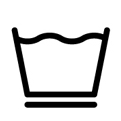 machine wash permanent press |
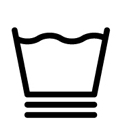 machine wash gentle or delicate |
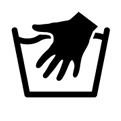 hand wash |
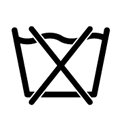 do not wash |
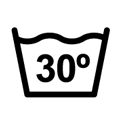 30°C or 80°F |
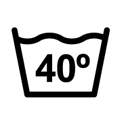 40°C or 105°F |
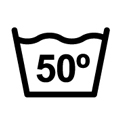 50°C or 120°F |
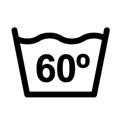 60°C or 140°F |
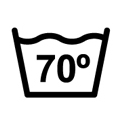 70°C or 160°F |
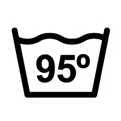 95°C or 200°F |
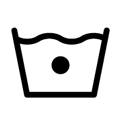 30°C or 80°F |
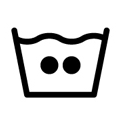 40°C or 105°F |
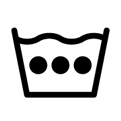 50°C or 120°F |
 60°C or 140°F |
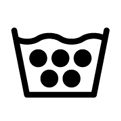 70°C or 160°F |
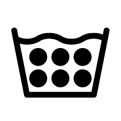 95°C or 200°F |
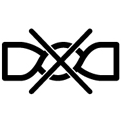 do not wring |
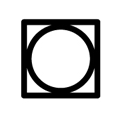 tumble dry |
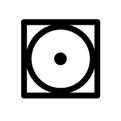 low heat |
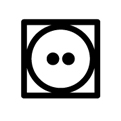 medium heat |
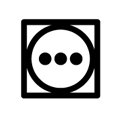 high heat |
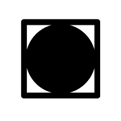 no heat |
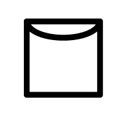 hang to dry |
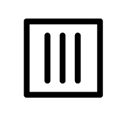 drip dry |
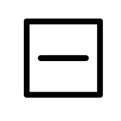 dry flat |
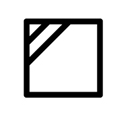 dry in the shade |
 do not dry |
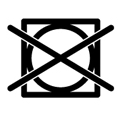 do not tumble dry |
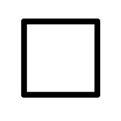 dry |
 iron |
 do not iron |
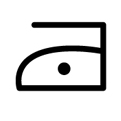 110°C 230°F |
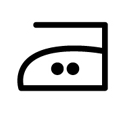 150°C 300°F |
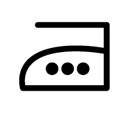 200°C 390°F |
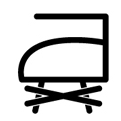 no steam |
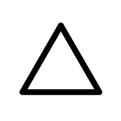 bleach |
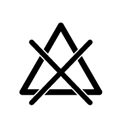 do not bleach |
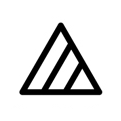 non-chlorine bleach |
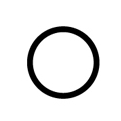 dryclean |
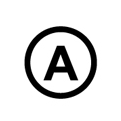 any solvent |
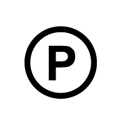 any solvent except tetrachlorethylene |
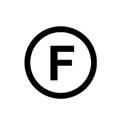 petroleum solvent only |
 wet cleaning |
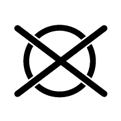 do not dryclean |
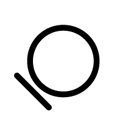 short cycle |
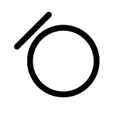 reduced moisture |
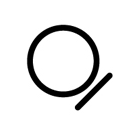 low heat |
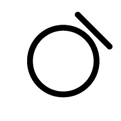 no steam finishing |
Not that kind of probing...
This module has six wires and two crocodile clips. Each wire carries three alternating currents (AKA 3-phase current), each phase a different frequency. The possible frequencies are 10Hz, 22Hz, 50Hz and 60Hz.
In order to probe the circuit you need to connect the red clip to a wire and the blue clip to a different wire. Common frequencies in both wires will cancel out and the display will show the remaining frequencies, in order from lowest to highest.
If the red and white wire contains a 50Hz current connect the red clip to the wire with the frequencies 10Hz, 22Hz and 60Hz, otherwise if the red and yellow wire does not contain a 10Hz current connect the red clip to the wire with the frequencies 22Hz, 50Hz and 60Hz, otherwise connect the red clip to the wire with the frequencies 10Hz, 22Hz and 50Hz.
If the yellow and red wire contains a 10Hz current connect the blue clip to the wire with the frequencies 10Hz, 50Hz and 60Hz otherwise connect the blue clip to the wire that contains the frequencies 10Hz, 22Hz and 50Hz.
Leave the clips connected for at least six seconds to defuse. Leaving the incorrect wires connected for more than six seconds will cause a strike.
NOTE: Be aware that each time a strike is gained the frequencies in each wire may change.
Communication was dangerous back in the days. Can you figure out what the original message was?
Decipher the characters on the display with the help of Caesar’s tactics. There’s no delete button, so press those buttons carefully!
For example: if the offset is -2, D becomes B and L becomes J. The table below can be used to calculate the required offset. If the offset column contains an = sign, that value should be used, regardless of other rules that apply.
| Condition | Offset |
|---|---|
| Serial number contains a vowel | -1 |
| Number of batteries | +1 per battery |
| The last digit of the serial number is even | +1 |
| Indicator with label CAR is present | +1 |
| Parallel port and lit indicator with label NSA is present | =0 |
“It is easier to resist at the beginning than at the end.”
― Leonardo da Vinci, on procrastination
The module contains 2 input pins (A and B), 2 resistors, and 2 output pins (C and D). Follow the rules to make the correct connections. To make a connection, click one pin and then another. Press CLEAR to remove all connections.
Take the first digit of the bomb's serial number (or 0 if there are no digits). The primary input is A if even, B if odd.
Take the last digit of the bomb's serial number (or 0 if there are no digits). The primary output is C if even, D if odd.
The target resistance in Ω is calculated as follows:
Connect the primary input to the primary output, with the target resistance.
Note: all resistance values are checked to be within 5% accuracy.
If a lit FRK indicator is present, also connect the primary input to the other (secondary) output, with the target resistance.
Note: this means C and D will also be connected with some non-infinite resistance. This value is not checked as part of your solution, and so can be anything.
If step 5 did not apply and at least 1 D cell battery is present, connect the secondary input to the secondary output, with 0Ω resistance.
Press CHECK when finished to check the solution. All input/output pairs not mentioned should be disconnected.
Consult the following page to learn how to produce the target resistance.
An input and output can be connected via one of five paths.
For the curious... it's: 1 / (1 / (top resistance) + 1 / (bottom resistance))
Don't worry, this won't be on the test!
Each resistor has a sequence of three colored bands, indicating a two-digit number and a multiplier. A fourth band indicates a tolerance value (not used). The fourth band is separated by a gap from the first three. Resistors can be rotated; take care to read the bands in the correct direction.
| Color | First Band | Second Band | Multiplier |
|---|---|---|---|
| Black | 0 | 0 | 1Ω |
| Brown | 1 | 1 | 10Ω |
| Red | 2 | 2 | 100Ω |
| Orange | 3 | 3 | 1,000Ω |
| Yellow | 4 | 4 | 10,000Ω |
| Green | 5 | 5 | 100,000Ω |
| Blue | 6 | 6 | 1,000,000Ω |
| Violet | 7 | 7 | 10,000,000Ω |
| Gray | 8 | 8 | — |
| White | 9 | 9 | — |
| Gold | — | — | 0.1Ω |
| Silver | — | — | 0.01Ω |
For example, Green Violet Yellow indicates 57 × 10,000Ω = 570,000Ω.
This has to be illegal somehow...
See Appendix A for indicator identification reference.|
All Slots
Replace any 2 with a 5 and any 7 with a 0. For every lit indicator add 1 to the number and subtract 1 for every unlit indicator. If the number is a multiple of 3, add 4 to it. Otherwise, if the number is greater than 7, multiply it by 2. Otherwise, if the number is less than 3 and it's an even number, divide it by 2. Otherwise, if there is an RCA or a PS/2 port on the bomb, skip the rest of the rules in this section. Otherwise, take the original digit and add the number of batteries on the bomb. |
|
1st Slot
If the number is even and greater than 5, divide it by two. Otherwise, if the number is prime, add the rightmost number in the serial number. Otherwise, if there is a parallel port on the bomb, multiply it by -1. Otherwise, if the original digit to the right is odd, leave this number unchanged. Otherwise, subtract 2 from it. |
|
2nd Slot
If there is a unlit BOB indicator, leave this number unchanged. Otherwise, if the number is 0, add the original digit from the 1st display. Otherwise, if the number is in the Fibonacci sequence, add the next number from the Fibonacci sequence based on the first occurrence of the number. Otherwise, if the number is greater than or equal to 7, add 4. Otherwise, multiply it by 3. |
|
3rd Slot
If there is a serial port on the bomb, add the largest number from the serial number. Otherwise, if the original digit is the same as any of the other original digits, leave this number unchanged. Otherwise, if the number is greater than or equal to 5, add up all the individual digits in the binary form of the original digit for the new number. Otherwise, add 1 to the number. |
It’s called “micro”-controller, yet this thing in there is pretty big. Probably because it can cause a pretty big explosion...
Strike (STRK) Controller:
Diode (LEDS) Controller:
Countdown (CNTD) Controller:
Explosion (EXPL) Controller:
| Input Voltage (VCC) | Analog Input (AIN) | Digital Input (DIN) | Pulse Width Modulation (PWM) | Reset (RST) | |
|---|---|---|---|---|---|
| If the last digit of the controller's serial number is 1 or 4 | Yellow | Magenta | Green | Blue | Red |
| Otherwise, if there is a lit indicator "SIG" or a RJ-45 port | Yellow | Red | Magenta | Green | Blue |
| Otherwise, if the bomb's serial number contains C, L, R, X, 1 or 8 | Red | Magenta | Green | Blue | Yellow |
| Otherwise, if the second numerical digit of the controller's serial number matches the number of batteries on the bomb | Red | Blue | Yellow | Green | Magenta |
| Otherwise | Green | Red | Yellow | Blue | Magenta |
Note: Ground (GND) is always coded with white.
Everything is different from the perspective of another.
Regard the difference between alphabetic positions to be positive.
Take the least significant digit of the number, and look up in the table:
| 0 | 3 | Red | 5 | 8 | Blue | |
| 4 | 9 | Yellow | 2 | 6 | Purple | |
| 1 | 7 | Green |
R – Red, Y – Yellow, G – Green, B – Blue, P – Purple
Determine which column to use based on battery count.
Perform permutations from top to bottom:
| 1 – 2 Batteries | 3 – 4 Batteries | 0, 5+ Batteries | |||||
|---|---|---|---|---|---|---|---|
| Prime | Alternate | Prime | Alternate | Prime | Alternate | ||
| R Y Y | B P Y | B P B | Y B G | P Y B | R G B | ||
| Y P G | P B R | Y Y P | B R P | Y R P | R Y R | ||
| R G P | B G R | G R B | Y P B | G Y R | G B P | ||
| Y B G | B Y Y | R P Y | G B G | B Y G | P G R | ||
| P P R | R Y P | Y G G | P B R | R P Y | G Y B | ||
| B G B | P Y G | G P B | Y G Y | P P G | P B R | ||
| Y G B | G P Y | P R P | B B G | R Y Y | B B R | ||
| P G G | G Y R | R Y R | R P B | Y G P | P Y Y | ||
This module is powered by the restless soul of a murder victim. The only way to disarm it is to solve the case so the victim can pass peacefully to the afterlife.
See Appendix A for indicator identification reference.| Miss Scarlett | Professor Plum | Mrs Peacock | Reverend Green | Colonel Mustard | Mrs White | |
|---|---|---|---|---|---|---|
| Candle- stick | Dagger | Lead Pipe | Revolver | Rope | Spanner | |
| 1 | Dining Room | Library | Lounge | Kitchen | Study | Conserv- atory |
| 2 | Study | Hall | Billiard Room | Lounge | Kitchen | Library |
| 3 | Kitchen | Billiard Room | Ballroom | Library | Conserv- atory | Dining Room |
| 4 | Lounge | Ballroom | Dining Room | Conserv- atory | Hall | Kitchen |
| 5 | Billiard Room | Kitchen | Study | Ballroom | Dining Room | Hall |
| 6 | Conserv- atory | Lounge | Library | Study | Billiard Room | Ballroom |
| 7 | Ballroom | Conserv- atory | Kitchen | Hall | Library | Study |
| 8 | Hall | Study | Conserv- atory | Dining Room | Lounge | Billiard Room |
| 9 | Library | Dining Room | Hall | Billiard Room | Ballroom | Lounge |
Oh, the layout of the buttons on this thing takes me back to my childhood! Except I didn't expect to see that on a time bomb, even. Play time is over, I suppose.
See Appendix Math: Mathematical Concepts Reference for more information.
| Global Overrides |
|
|---|---|
| Apply all matches after determining the two commands. |
| First Subcommand | |
|---|---|
| x is prime | ▲▲▼▼ |
| x = 12n | ▲A◀◀ |
| a+b = 10 AND the last digit of serial number is odd | AB◀▶ |
| x = 6n + 3 OR x = 10n + 5 | ▼◀A▶ |
| x = 7n AND y ≠ 7n | ◀◀▲B |
| x = c × d | A▲◀◀ |
| x is a perfect square | ▶▶A▼ |
| x = 3n – 1 OR bomb has unlit ind. labeled SND | ▶AB▲ |
| 60 ≤ x < 90 AND bomb has no batteries | BB▶◀ |
| x = 6n | ABA▶ |
| x = 4n | ▼▼◀▲ |
| else | A◀B▶ |
| Second Subcommand | |
|---|---|
| y is prime | ◀▶◀▶ |
| y = 8n | ▼▶B▲ |
| c - d = 4 AND bomb has a Stereo RCA | ▶A▼▼ |
| y = 4n + 2 OR bomb has lit ind. labeled FRQ | B▲▶A |
| y = 7n AND x ≠ 7n | ◀◀▼A |
| y is a perfect square | ▲▼B▶ |
| y = a × b | A▲◀▼ |
| y = 4n – 1 OR bomb has a PS/2 port | ▲BBB |
| c > d AND bomb has 2 or more batteries | AA▲▼ |
| y = 5n | BAB◀ |
| y = 3n | ▶▲▲◀ |
| else | B▲A▼ |
Are you still a fan of some animated series from your childhood? It looks like you stumbled upon another fan.
| Monsplode™ | Name | Type | Special Rules |
|---|---|---|---|
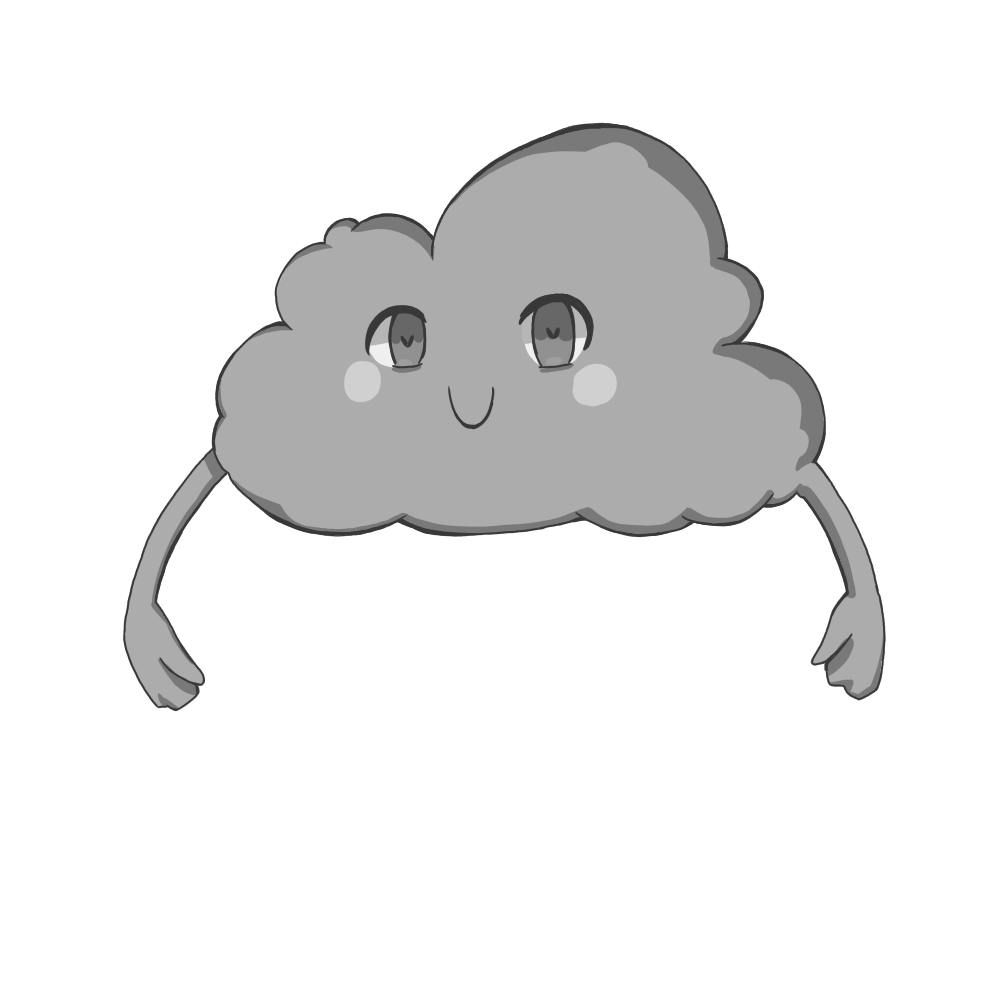 |
Buhar | WATER | Takes no damage from ROCK type moves. |
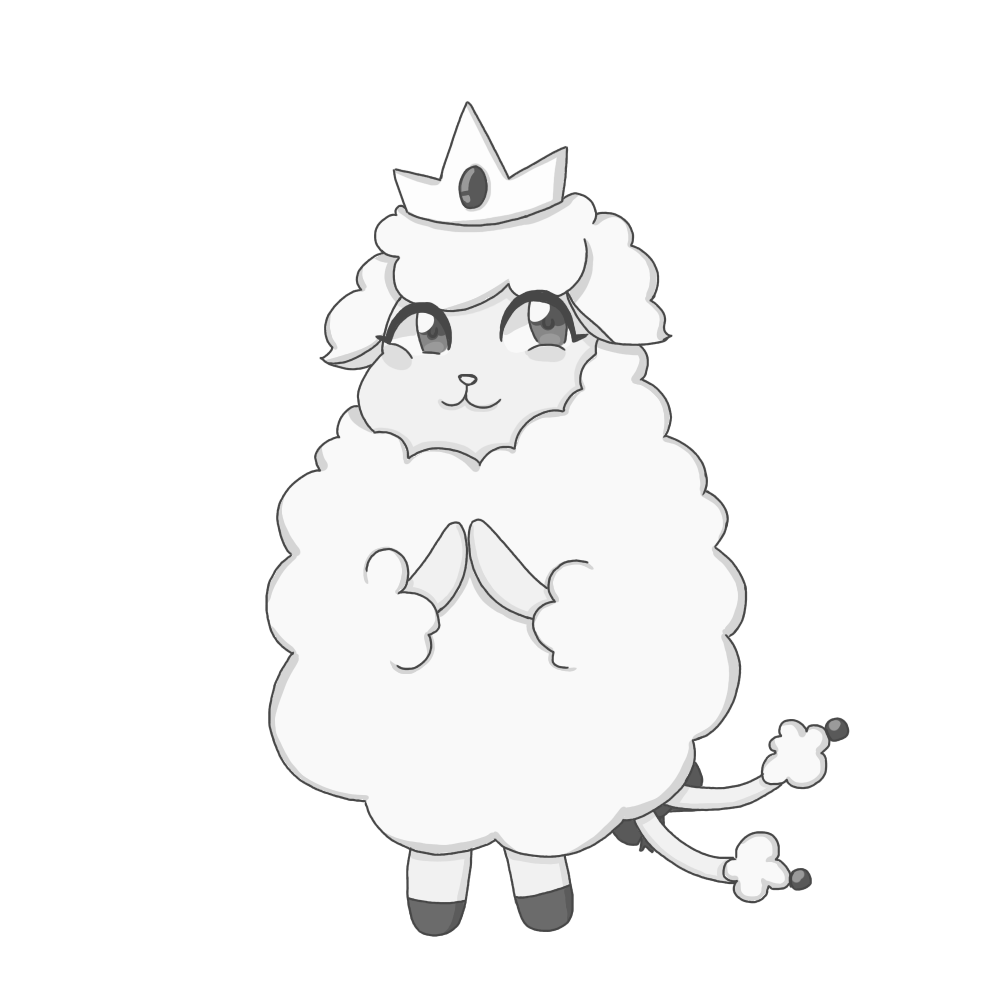 |
Lanaluff | NORMAL | If its name has a common letter with the serial, takes +3 net damage from POISON type moves. |
 |
Bob | NORMAL | If there is a lit BOB indicator, only takes damage from NORMAL type moves. |
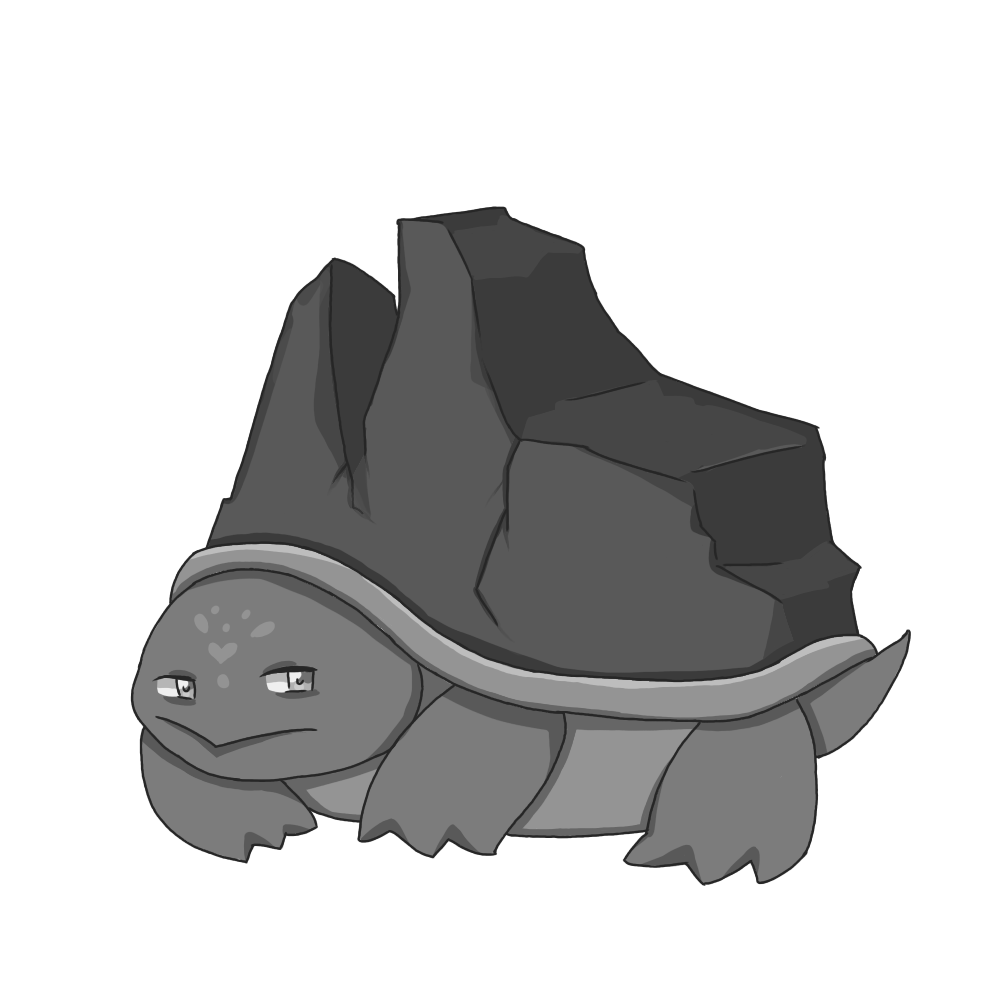 |
Mountoise | ROCK | Its type is NORMAL if the bomb has a strike. |
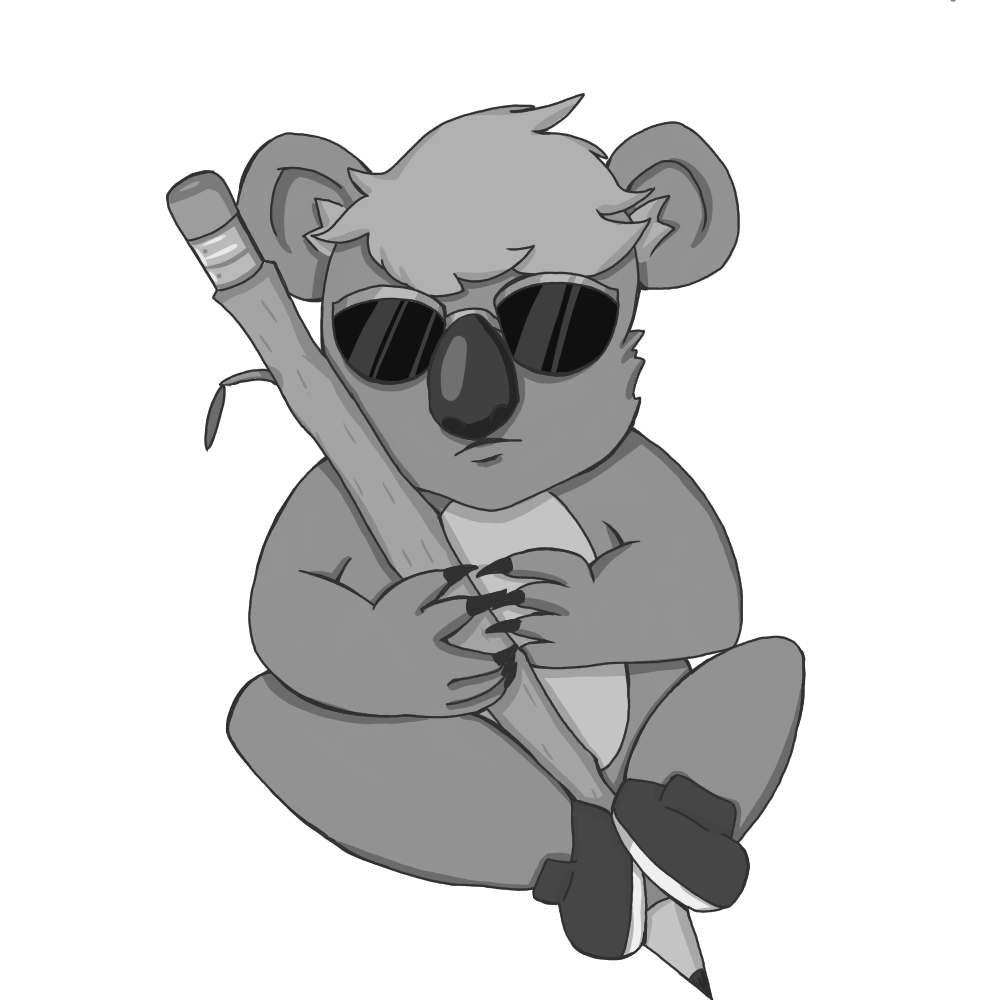 |
Nibs | NORMAL | Takes no damage from GRASS type moves. |
| Monsplode™ | Name | Type | Special Rules |
|---|---|---|---|
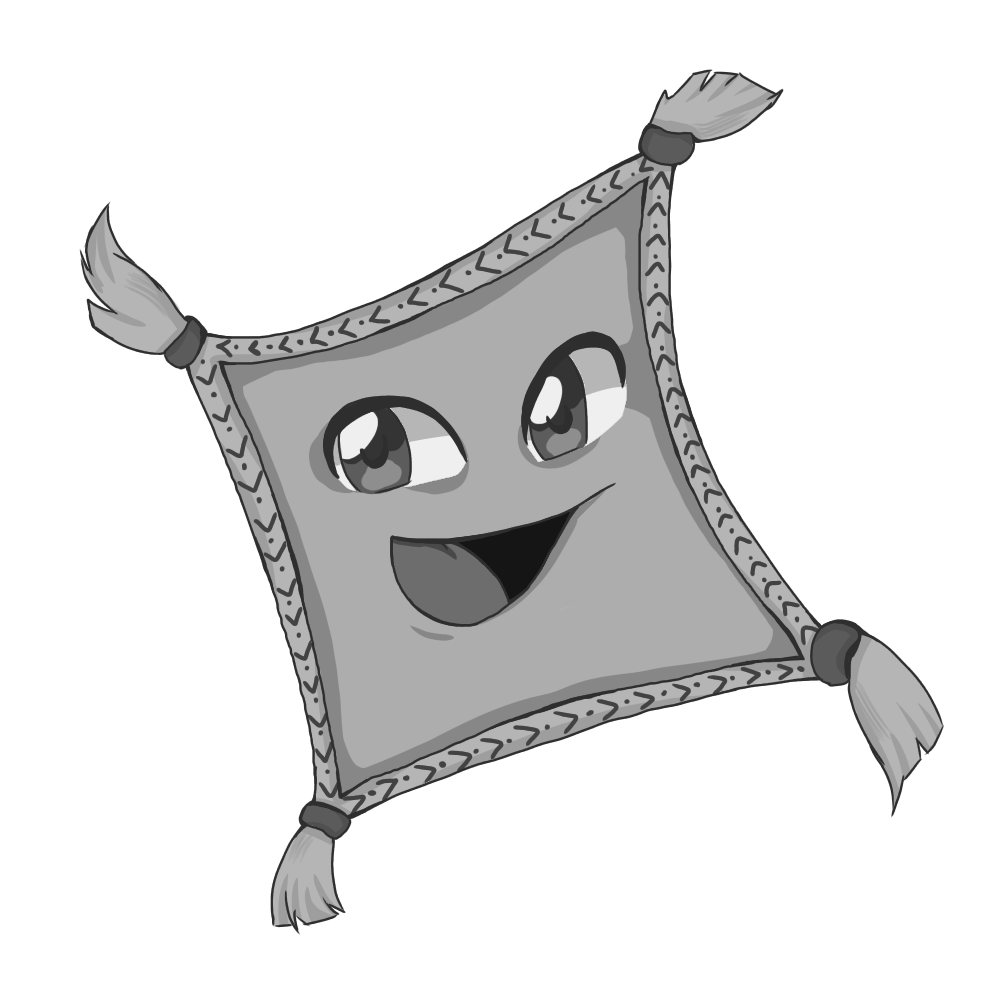 |
Aluga | NORMAL | Takes +2 net damage from FIRE type moves. Takes -1 net damage from WATER type moves. |
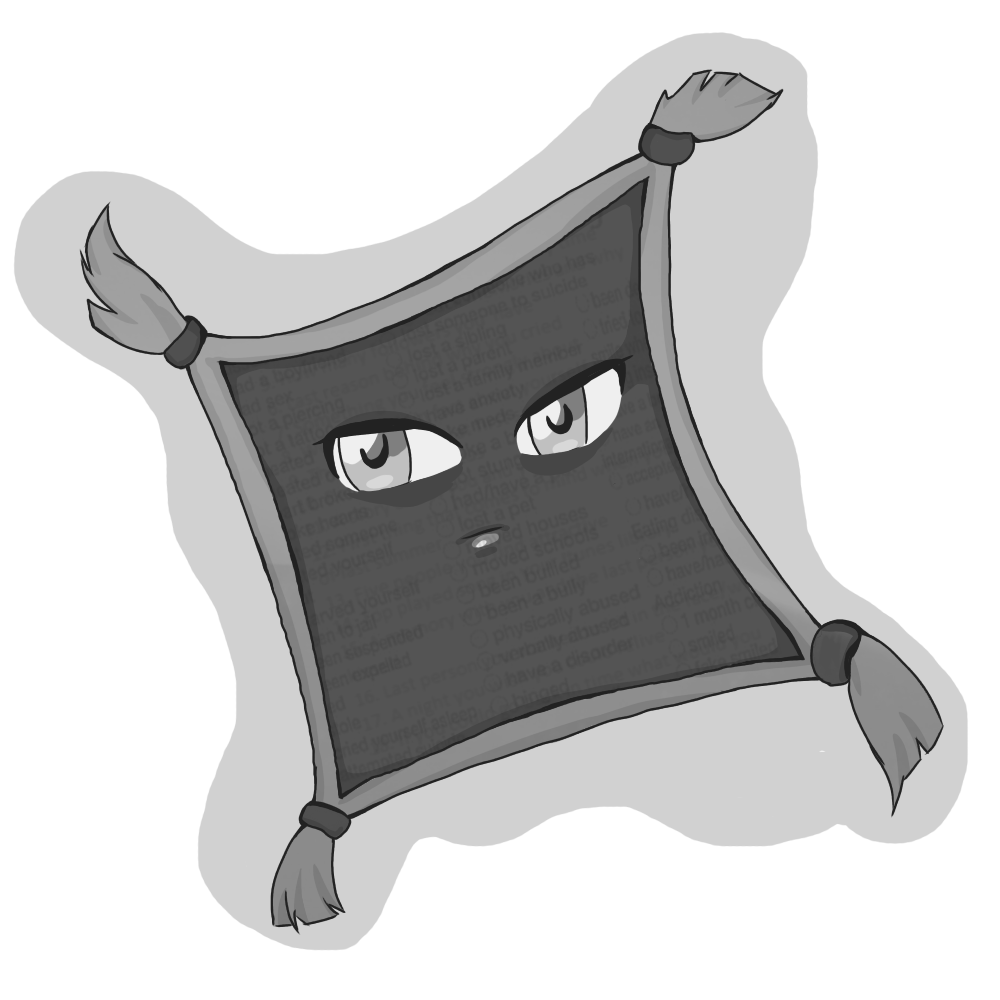 |
Lugirit | GHOST | Takes +2 net damage from WATER type moves. Takes -1 net damage from FIRE type moves. |
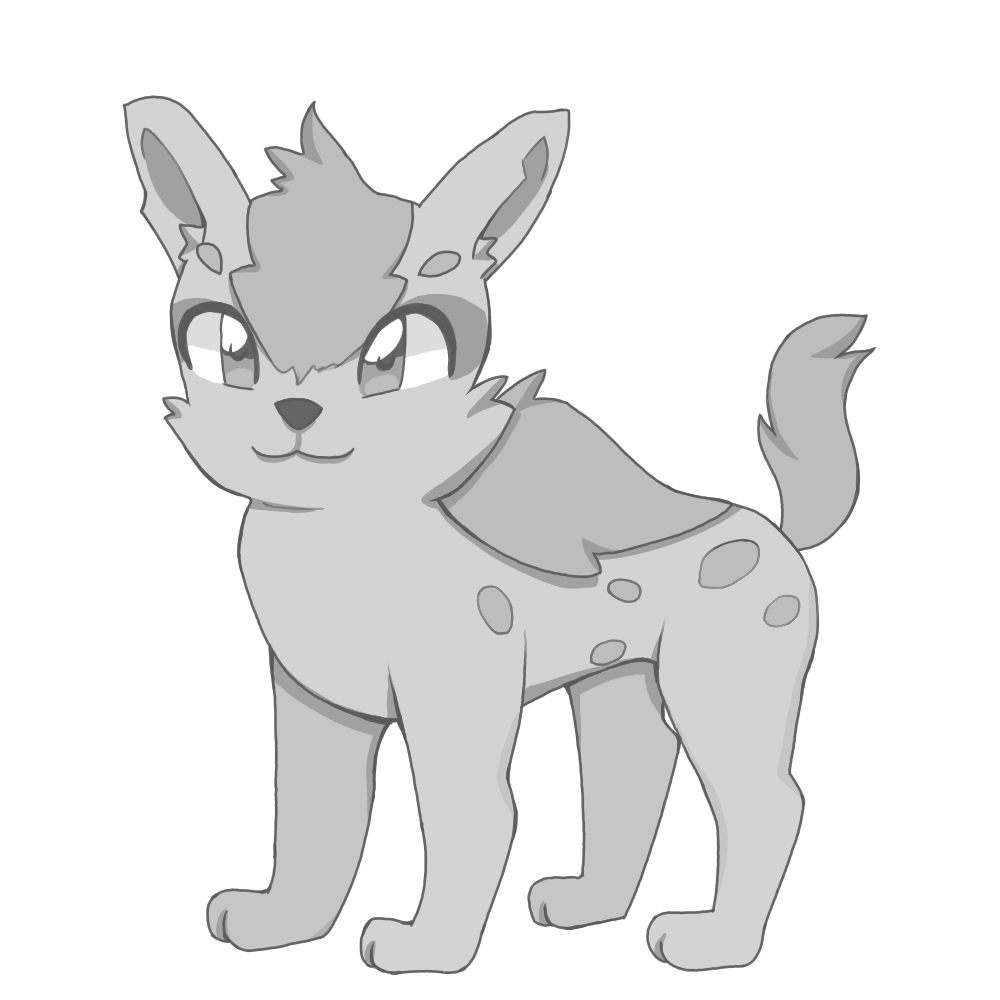 |
Caadarim | NORMAL | If there is at least one port, takes no damage from NORMAL type moves. |
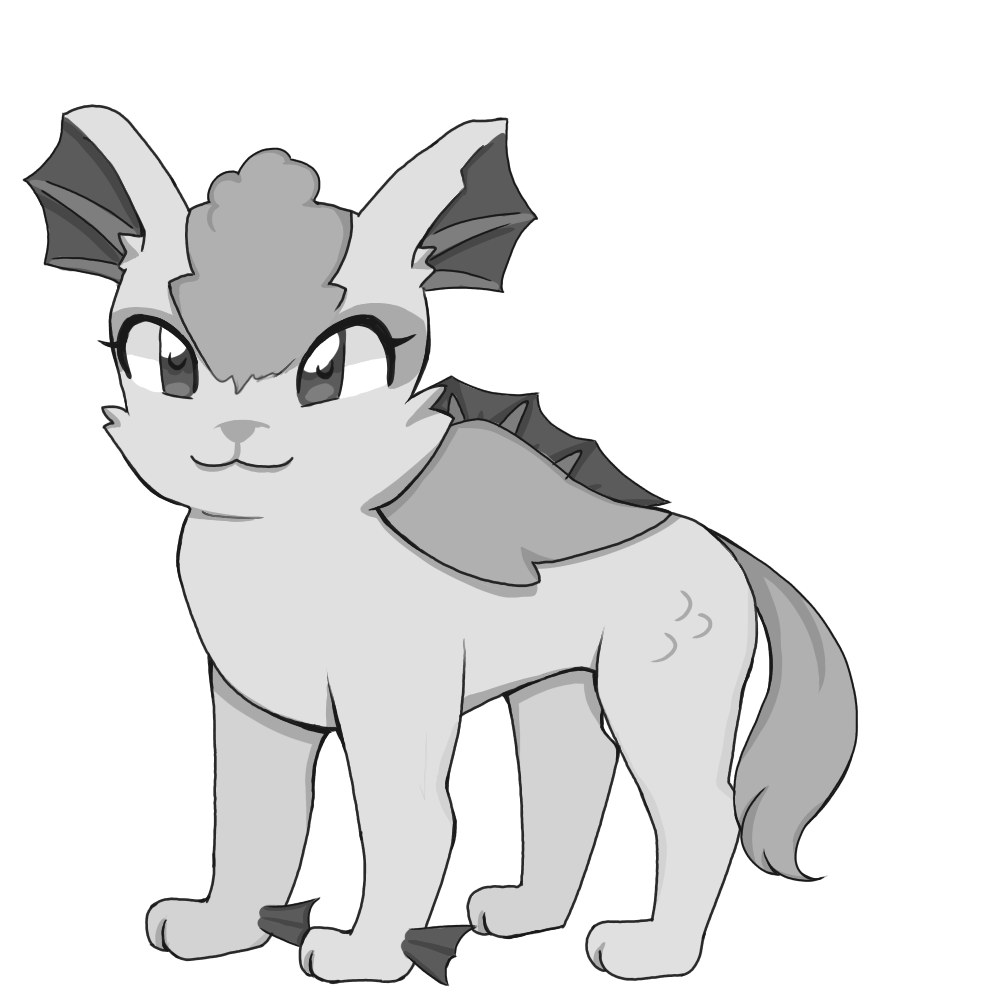 |
Vellarim | WATER | If there is a Parallel port, takes no damage from NORMAL type moves. |
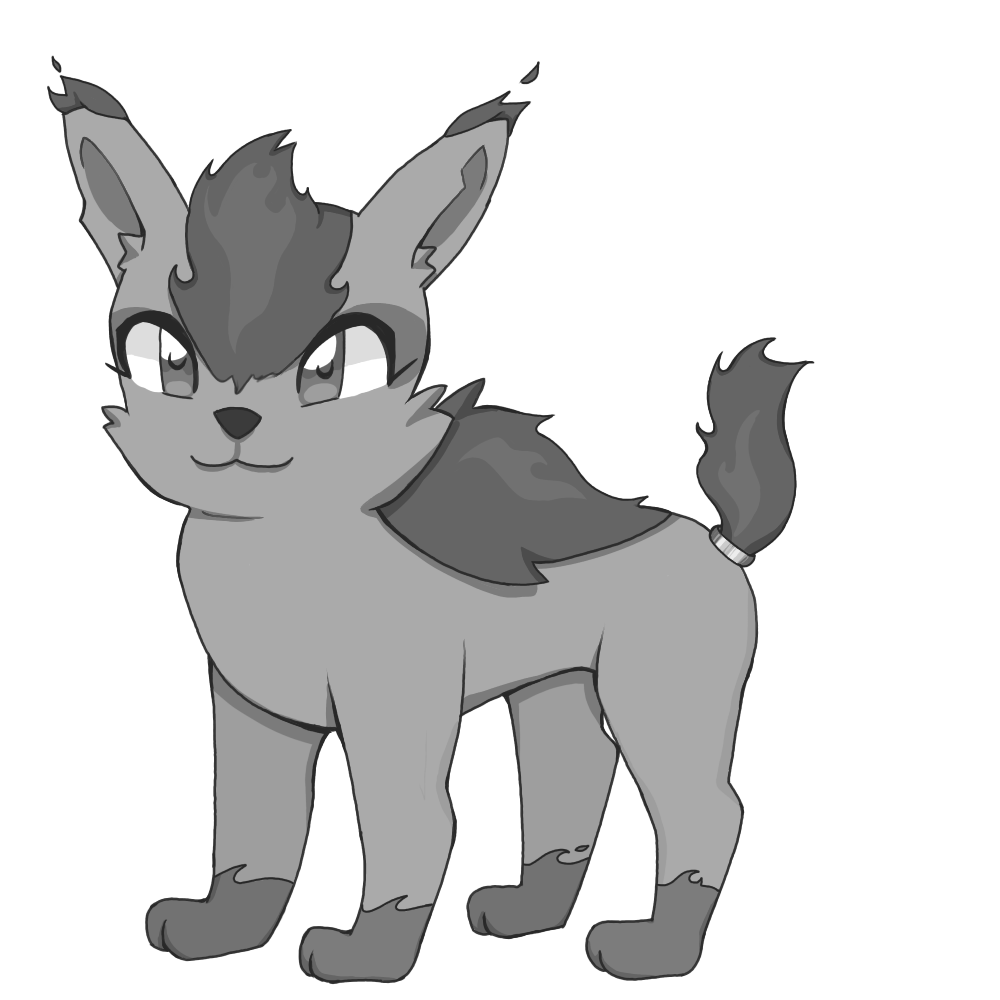 |
Flaurim | FIRE | If there is a Serial port, takes no damage from NORMAL type moves. |
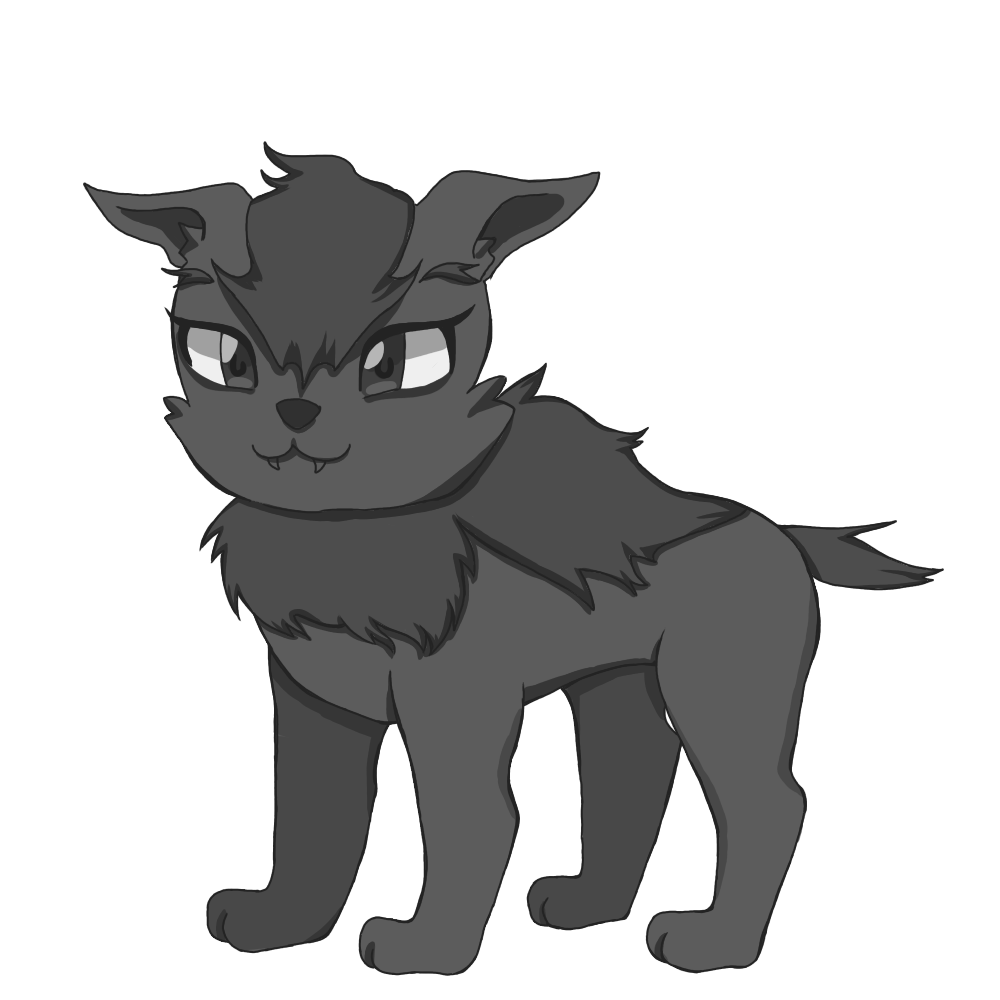 |
Gloorim | DARK | If there is a DVI-D port, takes no damage from NORMAL type moves. |
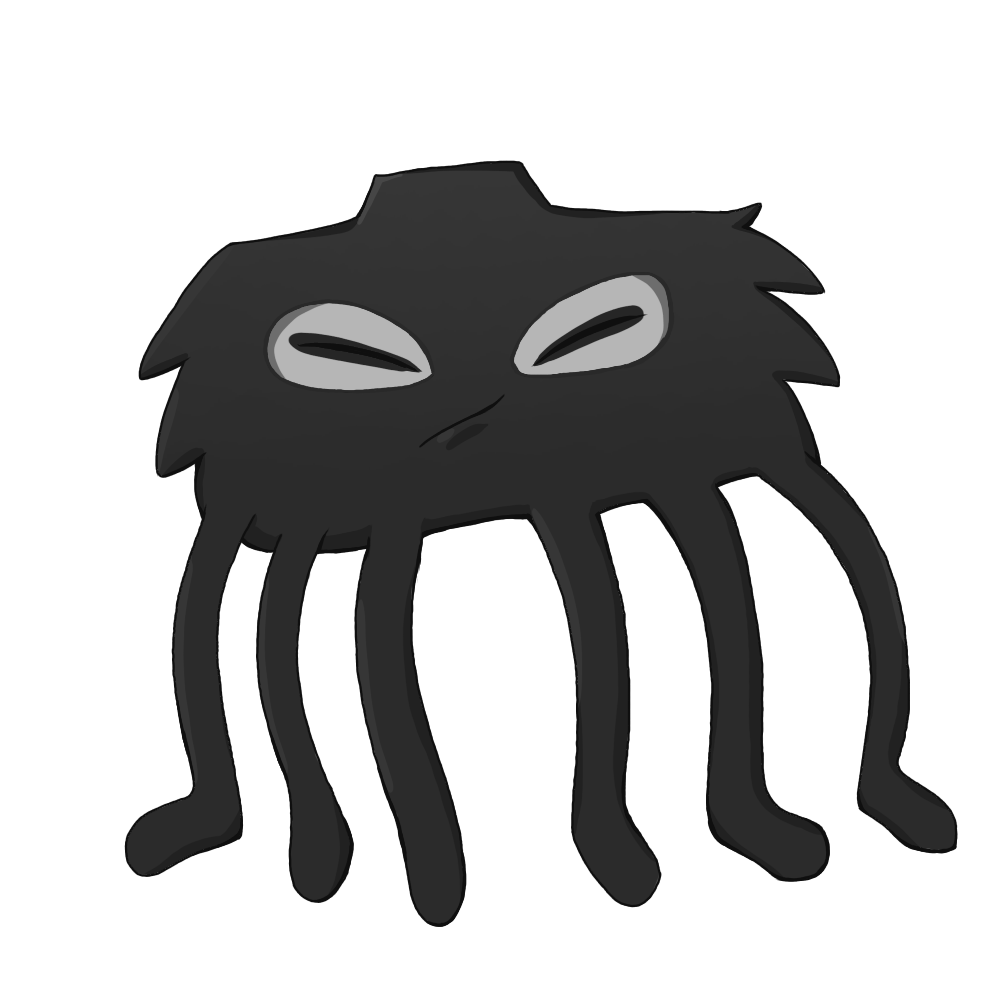 |
Melbor | DARK | If net damage of a move is exactly 6 or 8, it takes 0 damage instead. |
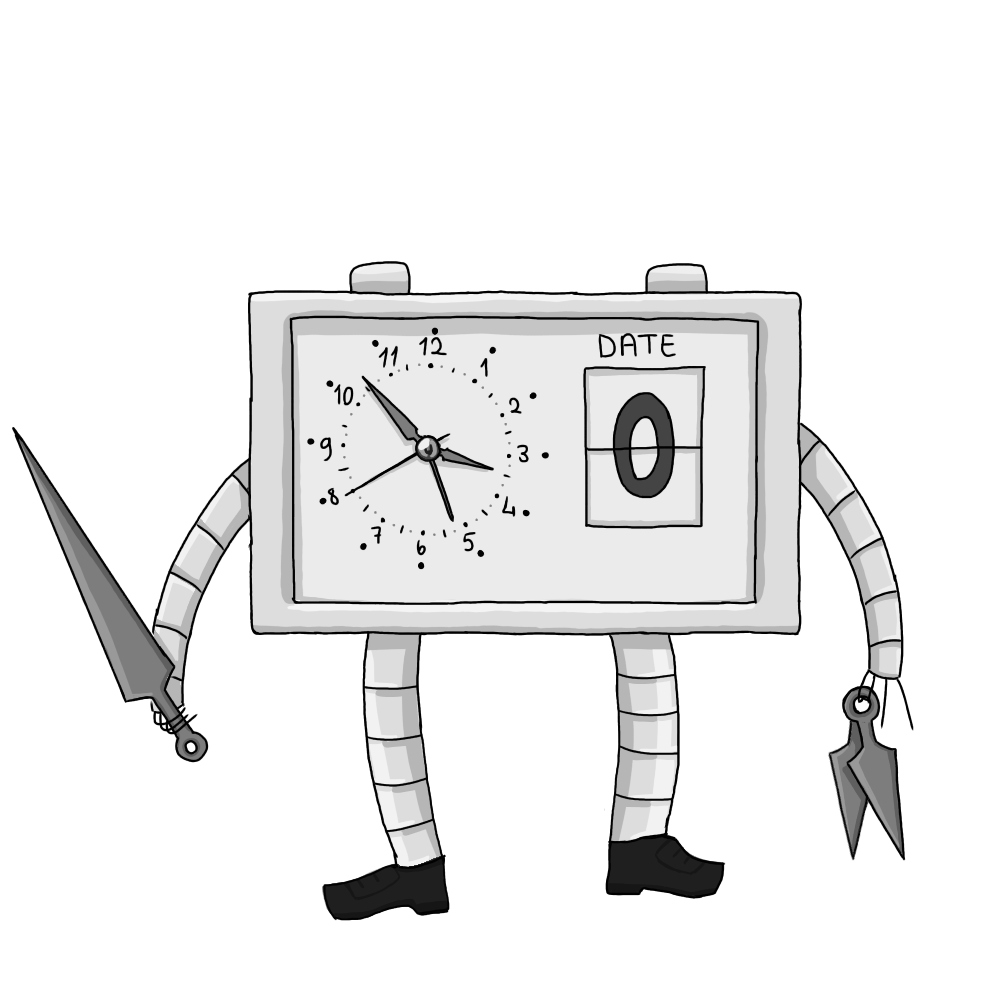 |
Clondar | ELECTR | Takes +3 net damage from WATER type moves. |
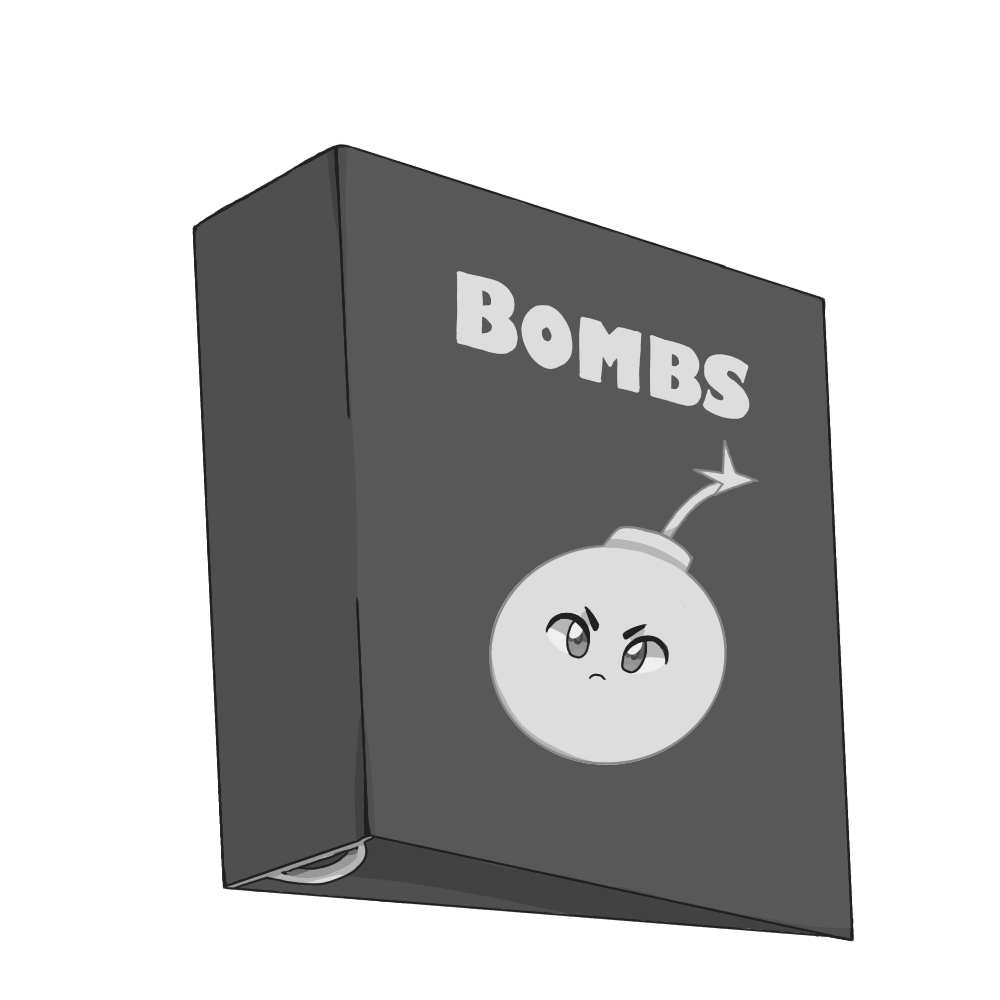 |
Docsplode | NORMAL | "Boom" will explode Docsplode instead of the bomb. It must be used if it's present. |
| Monsplode™ | Name | Type | Special Rules |
|---|---|---|---|
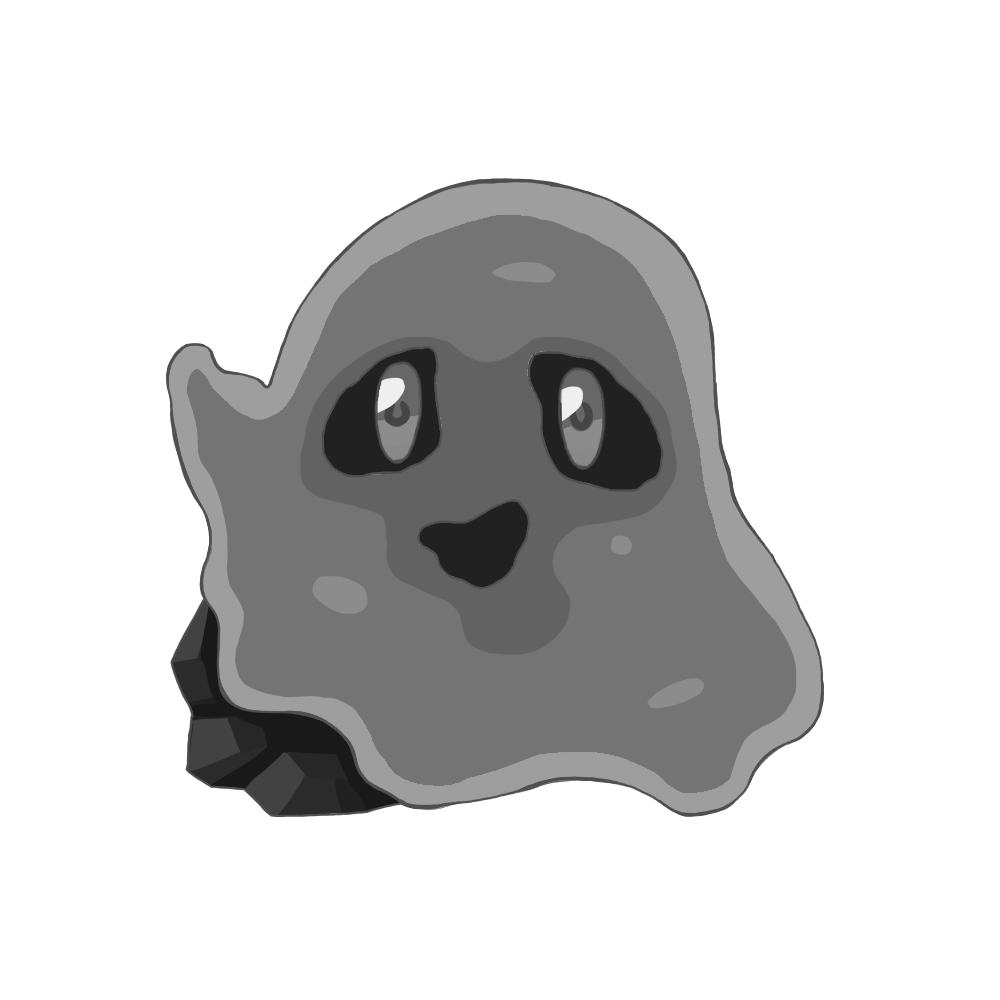 |
Magmy | FIRE | If there are less than 3 batteries on the bomb, its type is ROCK. |
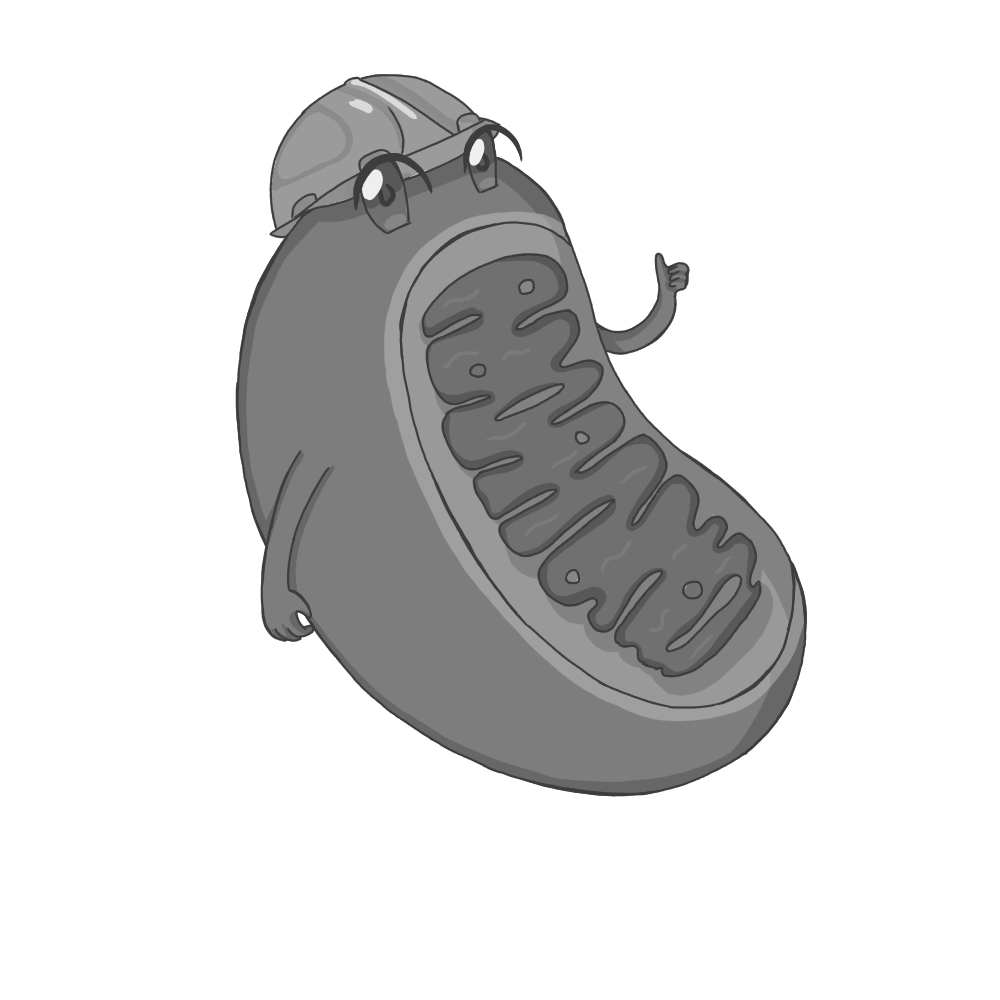 |
Pouse | ELECTR | If net damage of a move is 6 or more, it takes 0 damage instead. |
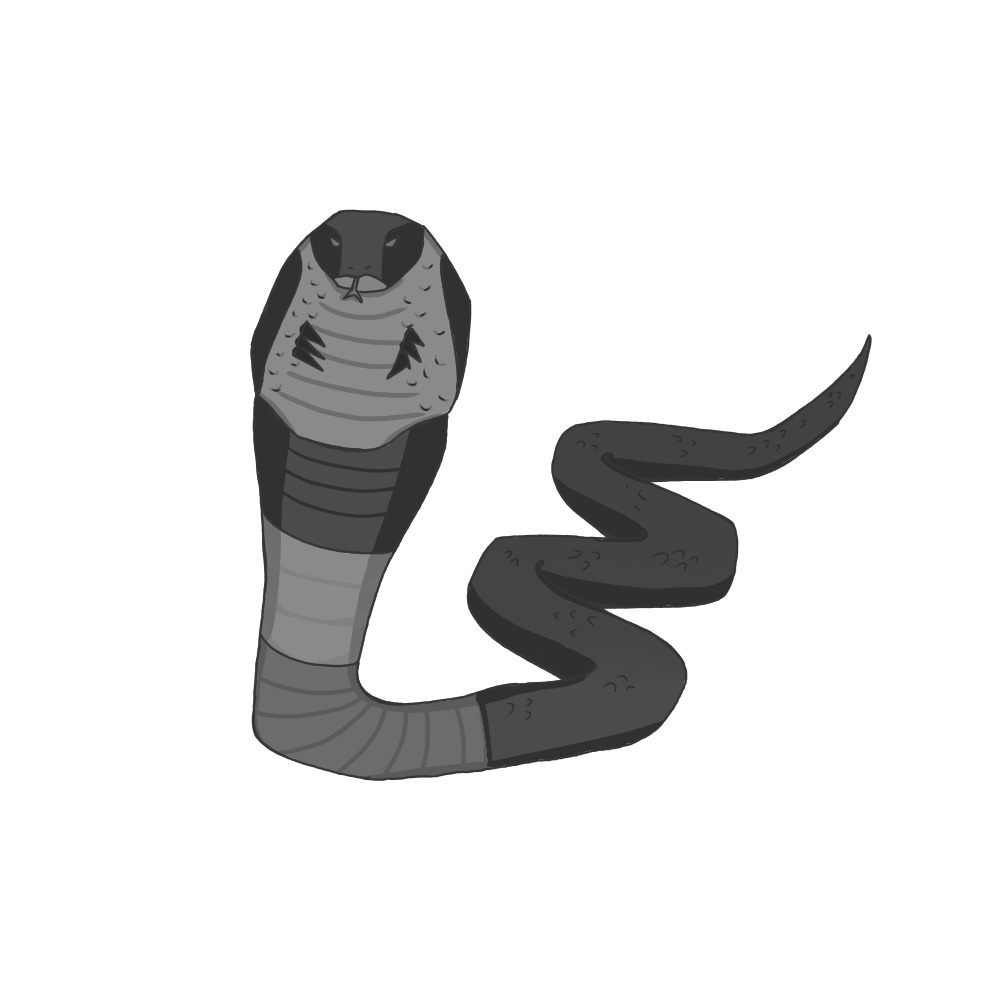 |
Ukkens | POISON | Takes no damage from WATER type moves. |
 |
Asteran | GRASS | If there is a CAR indicator present, its type is WATER. |
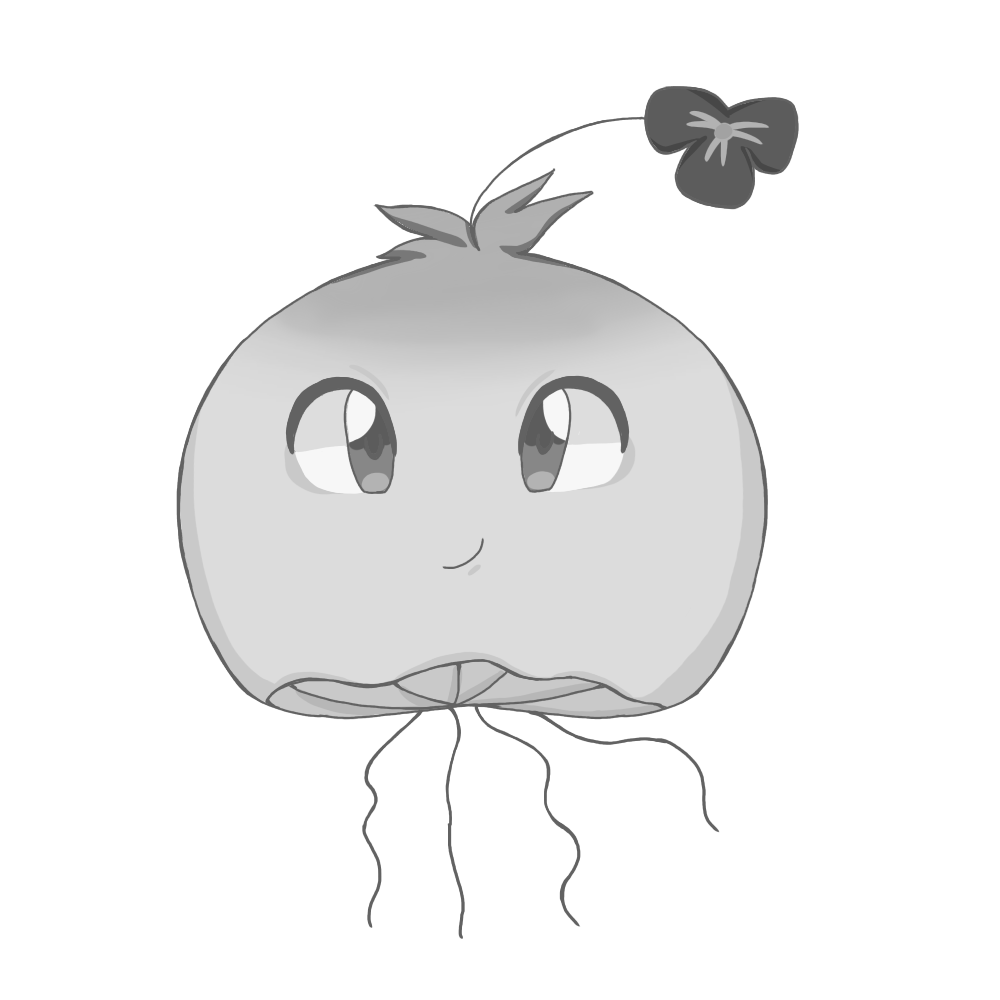 |
Violan | GRASS | If there is a CLR indicator present, its type is WATER. |
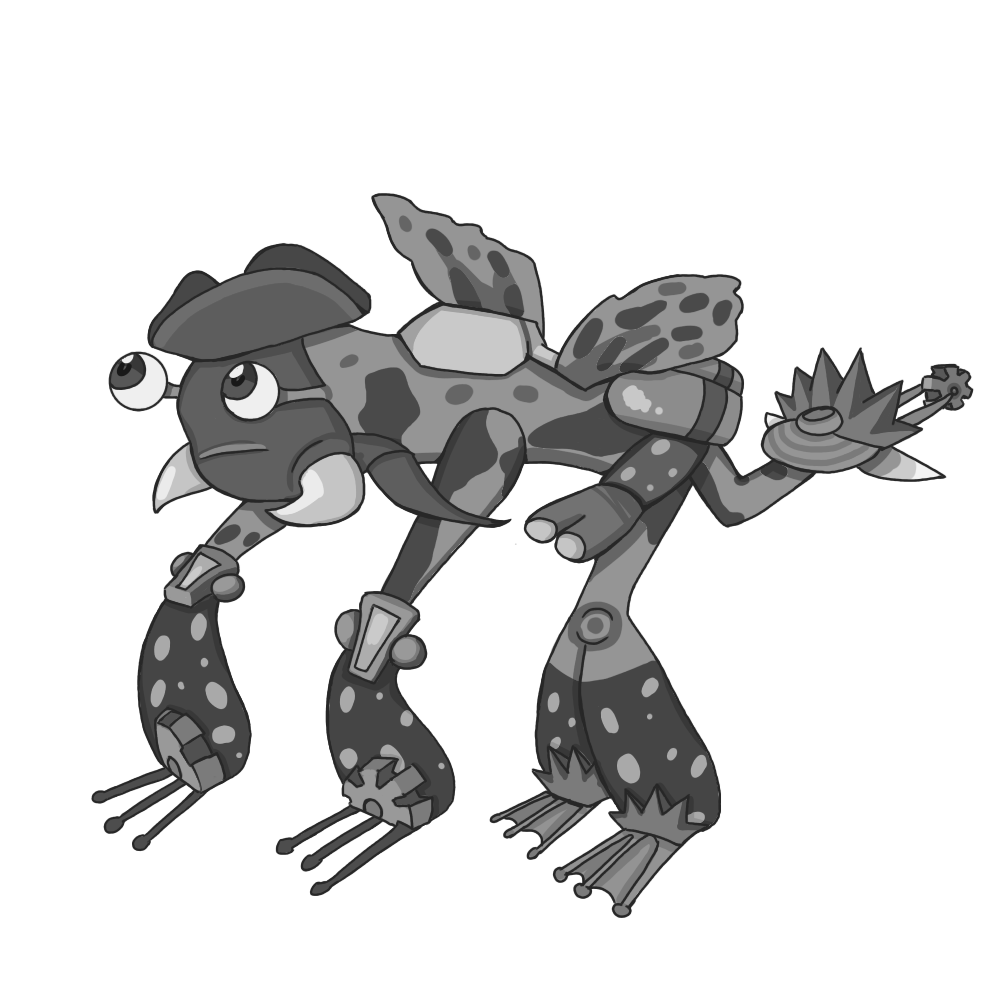 |
Zenlad | GRASS | Takes +3 damage from ELECTR type moves. |
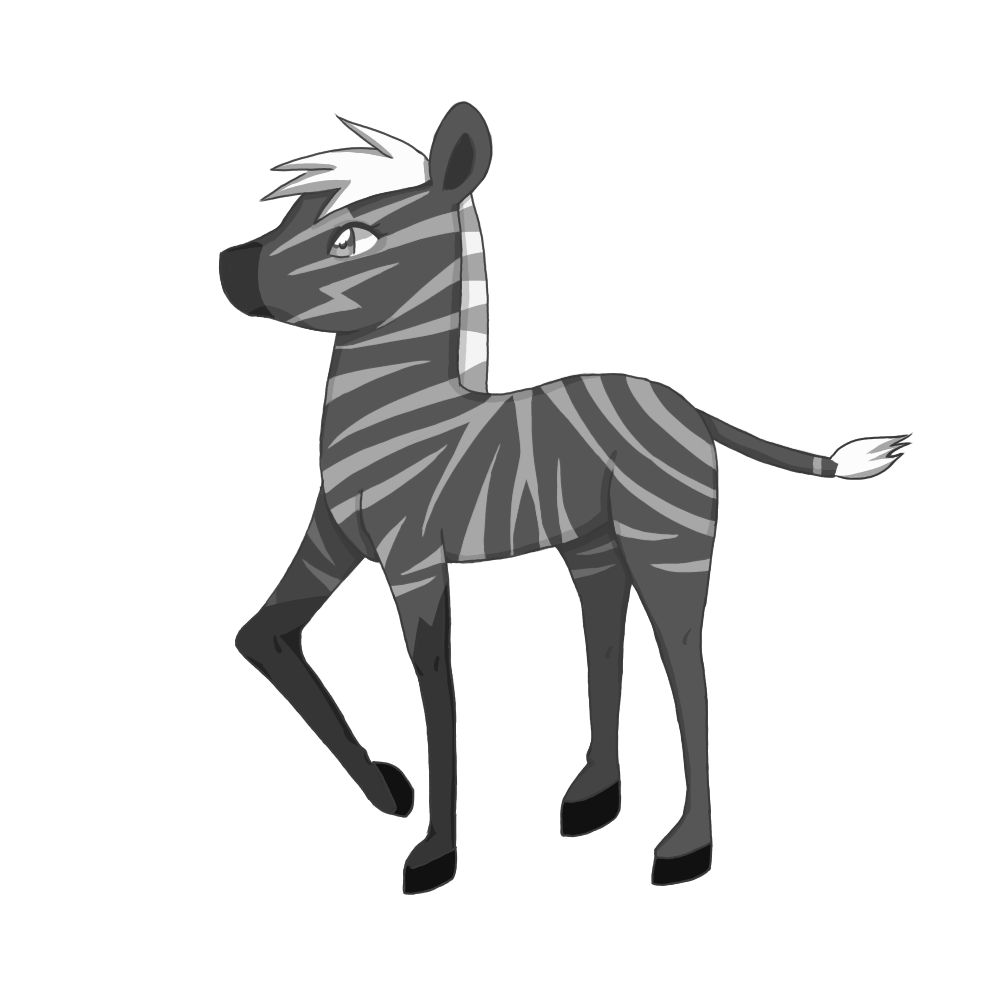 |
Zapra | ELECTR | If there is less than 3 batteries on the bomb, its type is NORMAL. |
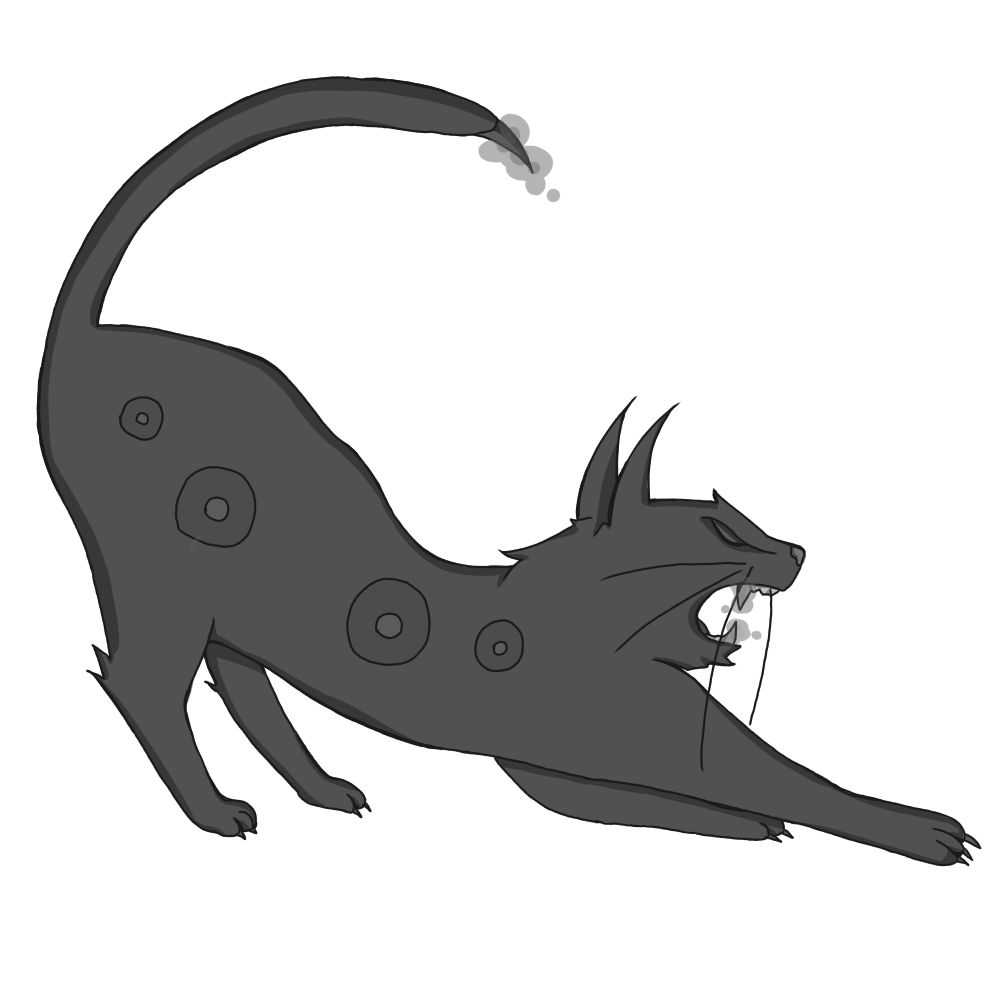 |
Myrchat | POISON | If there is no lit indicator on the bomb, its type is DARK. |
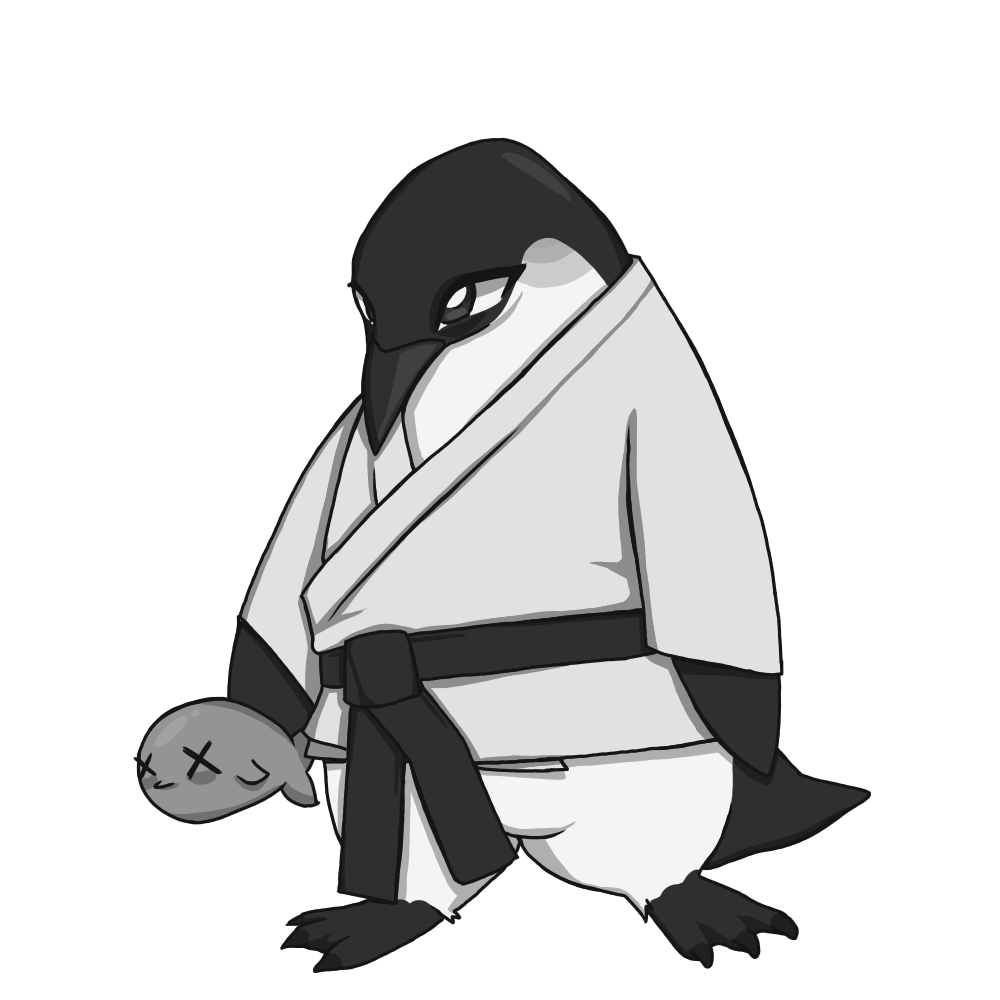 |
Percy | WATER | Percy can't stand silliness. You must use "Splash" if it's present. |
 |
Cutie Pie | NORMAL | Cutie Pie is a friend! Deal the lowest possible damage instead. |
| Move Name | Move Type | Base Damage | Special Rules |
|---|---|---|---|
| Appearify | NORMAL | 4 | Damage is 10 if the opponent is a DARK type. |
| Battery Power | ELECTR | 0 | Add 2 damage for each battery on the bomb. |
| Bedrock | ROCK | 0 | Damage is number of modules on the bomb. |
| Boo | GHOST | 0 | Add 3 damage for each ‘0’ or ‘O’ in the serial number. |
| Boom | FIRE | 0 | Pressing this will detonate the bomb. |
| Bug Spray | POISON | 2 | Damage is 10 against Melbor and Zenlad. |
| Countdown | POISON | 0 | Damage is time left on the bomb in minutes, rounded down. |
| Dark Portal | DARK | 0 | Damage is the number of ports present. |
| Fiery Soul | FIRE | 0 | Damage is number of batteries multiplied by the number of battery holders. |
| Finale | GRASS | 2 | Damage is 10 if all other modules are disarmed before this one. |
| Freak Out | GHOST | 1 | Damage is 5 if there is a "FRK" or "FRQ" indicator. 10 if any of them are lit. |
| Glyph | NORMAL | 0 | Damage is letter count of the opponent’s name. |
| Last Word | GHOST | 0 | Damage is last digit of the serial number. |
| Sendify | NORMAL | 2 | Damage is 10 if the opponent is a ROCK or GRASS type. |
| Shock | ELECTR | 3 | Damage is 8 if there is an RJ-45 port on the bomb. |
| Shrink | NORMAL | 0 | Damage is the smallest digit of the serial number. |
| Sidestep | NORMAL | 0 | Damage is the letter count of the move displayed to the left or right of this move on the module. |
| Stretch | NORMAL | 0 | Damage is the largest digit of the serial number. |
| Void | DARK | 2 | Damage is 10 if no other module is disarmed before this one. |
| Defuse | ??? | ??? | Defuses the module. |
| Move Name | Move Type | Base Damage | Move Name | Move Type | Base Damage | |
|---|---|---|---|---|---|---|
| Candle | FIRE | 2 | Spectre | GHOST | 5 | |
| Cave In | ROCK | 3 | Splash | WATER | 0 | |
| Double Zap | ELECTR | 4 | Tac | NORMAL | 5 | |
| Earthquake | ROCK | 5 | Tangle | GRASS | 2 | |
| Flame Spear | FIRE | 6 | Tic | NORMAL | 3 | |
| Fountain | WATER | 6 | Toe | NORMAL | 1 | |
| Grass Blade | GRASS | 4 | Torchlight | FIRE | 4 | |
| Heavy Rain | WATER | 4 | Toxic Waste | POISON | 5 | |
| High Voltage | ELECTR | 6 | Venom Fang | POISON | 3 | |
| Hollow Gaze | DARK | 4 | Zap | ELECTR | 2 | |
| Ivy Spikes | GRASS | 6 | - | - | - |
| Opposing Type → |
N O R M A L |
P O I S O N |
R O C K |
G H O S T |
F I R E |
W A T E R |
G R A S S |
E L E C T R |
D A R K |
|---|---|---|---|---|---|---|---|---|---|
| Move Type ↓ |
|||||||||
| NORMAL | x1 | x1 | x1/2 | x0 | x1 | x1 | x1 | x1 | x1 |
| POISON | x1 | x1/2 | x1/2 | x1/2 | x1 | x1 | x2 | x1 | x1 |
| ROCK | x1 | x1 | x1 | x1 | x2 | x1 | x1 | x1 | x1 |
| GHOST | x0 | x1 | x1 | x2 | x1 | x1 | x1 | x1 | x1/2 |
| FIRE | x1 | x1 | x1/2 | x1 | x1/2 | x1/2 | x2 | x1 | x1 |
| WATER | x1 | x1 | x2 | x1 | x2 | x1/2 | x1/2 | x1 | x1 |
| GRASS | x1 | x1/2 | x2 | x1 | x1/2 | x2 | x1/2 | x1 | x1 |
| ELECTR | x1 | x1 | x1 | x1 | x1 | x2 | x1/2 | x1/2 | x1 |
| DARK | x1 | x1 | x1 | x2 | x1 | x1 | x1 | x1 | x1/2 |
The concept is simple: change a shape into another shape according to certain rules. The rules, however, are not so simple.
Starting at the shape displayed on the module, follow the flowchart and submit the first shape which is visited twice.
All those years of getting ties in Tic Tac Toe might finally pay off.
To defuse this module, all nine buttons must be filled with “X”s and “O”s.
The display labeled “Up Next:” shows either an “X” or an “O”. The keypad displays some numbers between 1 and 9 and some already placed “X”s and “O”s. After placing a piece, the displays go blank.
The numbers in the chart on the following page indicate the location on the keypad where each piece should be placed.
Use the rules below to determine the starting row:
In the chart, determine the appropriate placement column based on the relative number of “X”s and “O”s already on the board. Begin at the starting row and move down your selected column until you reach a number that corresponds to an unfilled spot on the keypad. If you pass row 9, continue at row 1.
If placing the piece in this location would result in a tic-tac-toe, you MUST press “PASS” and continue in the same row; otherwise, place the piece by pressing the location on the keypad and then move to the next row in the chart.
Two consecutive passes will result in a piece being placed (and displayed) in one of the available spaces. This may result in a tic-tac-toe but will not incur a strike. In such a case, move to the next row in the chart.
Upon a strike, the row resets to the initial starting row and the keypad displays the placed pieces and remaining numbers. All previous placements remain until the module is defused.
Table 1
| More “X”s | “X”s = “O”s | More “O”s | ||||
| Placing An: | Placing An: | Placing An: | ||||
| ROW | “X” | “O” | “X” | “O” | “X” | “O” |
|---|---|---|---|---|---|---|
| 1 | 9 | 3 | 3 | 9 | 8 | 1 |
| 2 | 5 | 6 | 6 | 7 | 1 | 2 |
| 3 | 7 | 8 | 2 | 1 | 5 | 8 |
| 4 | 4 | 5 | 7 | 8 | 9 | 6 |
| 5 | 1 | 4 | 1 | 6 | 7 | 3 |
| 6 | 8 | 7 | 5 | 2 | 4 | 4 |
| 7 | 6 | 1 | 8 | 4 | 3 | 9 |
| 8 | 2 | 2 | 9 | 5 | 2 | 5 |
| 9 | 3 | 9 | 4 | 3 | 6 | 7 |
Child’s play. Just follow the leader. Only if you fail to follow, the penalty is somewhat more explosive.
This module contains 8-12 wires connecting numerically labeled plugs in a loop. Each wire leads from one plug to another plug in clockwise order. In this manual, wires are numbered according to the plug they lead from; a wire from plug 1 to plug 2 is considered to be “wire 1”, while a wire from plug 12 to plug 1 is considered to be “wire 12”.
Progress through the module by first cutting the starting wire, then cutting each applicable wire in the order of the sequence. Each wire will need to be either cut or left uncut based on the state of the previous wire(s) in the sequence. Avoid cutting wires out of sequence.
Follow the first rule below that applies:
| Step | Cut this wire if: |
|---|---|
| A or N | The previous wire is not yellow or blue or green. |
| B or O | The previous wire leads to an even numbered plug. |
| C or P | The previous wire should be cut. |
| D or Q | The previous wire is red or blue or black. |
| E or R | Two of the previous three wires share a color. |
| F or S | Exactly one of the previous two wires is the same color as this wire. |
| G or T | The previous wire is yellow or white or green. |
| H or U | The previous wire should not be cut. |
| I or V | The previous wire skips a plug. |
| J or W | The previous wire is not white or black or red. |
| K or X | The previous two wires are different colors. |
| L or Y | The previous wire does not lead to a position labeled 6 or less. |
| M or Z | Exactly one or neither of the previous two wires are white or black. |
Hey. I could defuse this bomb in ten seconds flat.
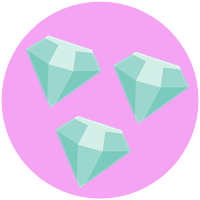 |
 |
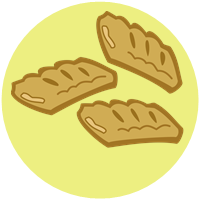 |
 |
 |
 |
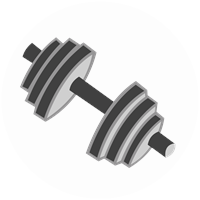 |
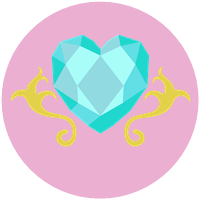 |
 |
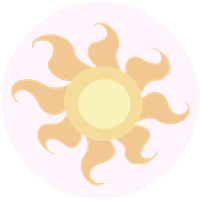 |
 |
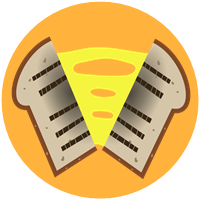 |
 |
 |
||
|---|---|---|---|---|---|---|---|---|---|---|---|---|---|---|---|
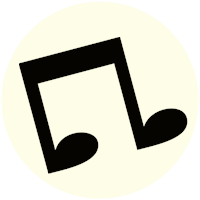 | J | G | U | K | V | 8 | L | C | H | 4 | W | P | M | R |  |
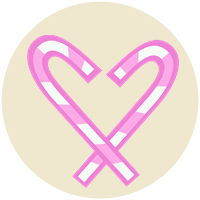 | 7 | S | 8 | U | N | J | 9 | Y | F | P | Q | C | R | 4 |  |
 | Q | R | H | 4 | F | 7 | J | E | 8 | T | N | 9 | A | X |  |
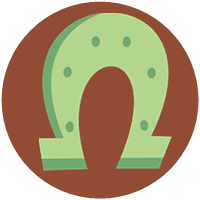 | D | 3 | S | H | U | E | T | P | V | J | L | A | 4 | 7 | 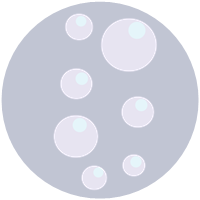 |
 | A | F | 3 | T | M | P | R | W | S | X | U | N | G | B | 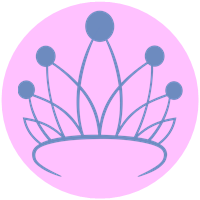 |
 | V | K | G | P | Q | D | U | L | 3 | H | M | R | E | C |  |
 | 4 | 9 | T | F | B | X | D | U | Y | 3 | R | L | H | M |  |
 | G | 4 | 9 | J | 8 | 3 | X | K | A | Y | S | W | 7 | D | 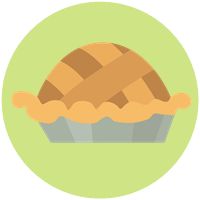 |
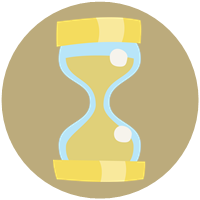 | K | T | F | B | J | Q | 3 | S | E | C | P | U | W | L | 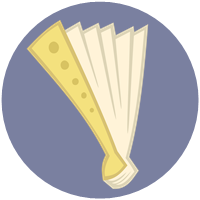 |
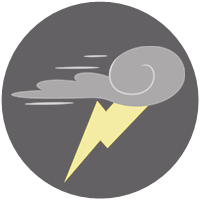 | S | M | A | C | 7 | H | E | B | G | F | V | X | L | N |  |
 | 8 | 7 | V | L | 9 | R | K | D | T | Q | B | Y | X | A | 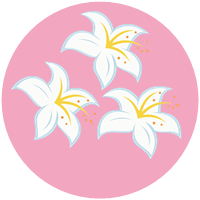 |
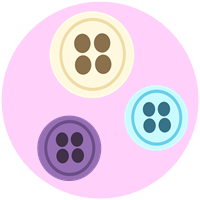 | W | 8 | 4 | Q | G | Y | V | T | 7 | N | 3 | B | C | P |  |
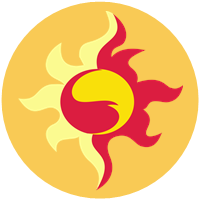 | M | A | W | 9 | H | K | Y | J | N | D | X | E | 8 | F | 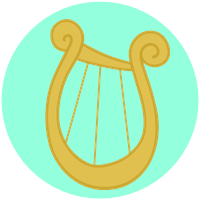 |
 | Y | N | B | G | W | S | M | Q | K | 9 | C | V | D | E |  |
 |
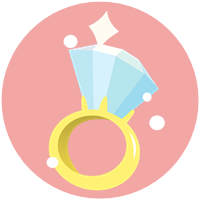 |
 |
 |
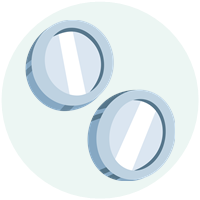 |
 |
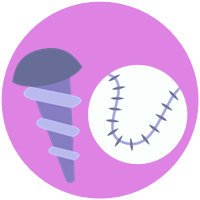 |
 |
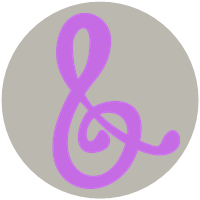 |
 |
 |
 |
 |
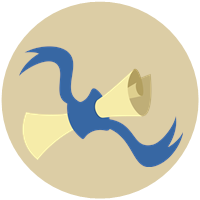 |
How many bomb defusal experts does it take to screw in a light bulb?
This module has two buttons labeled I and O and a light bulb, which is either see-through (translucent) or opaque, and is one of six colors: blue, green, purple, red, white or yellow.
If you incur a strike because you pushed a wrong button, ignore it and continue. If you incur a strike because you unscrewed or screwed in the bulb at an incorrect time, you must undo that before continuing.
Begin at Step 1 below.
While the bulb is screwed in, a long press on either button will reset the module back to Step 1. Attempting this while the bulb is out will incur a strike.
| Step 1 |
|
|---|---|
| Step 2 |
|
| Step 3 |
|
| Step 4 |
|
| Step 5 |
|
| Step 6 |
|
| Step 7 |
|
|---|---|
| Step 8 |
|
| Step 9 |
|
| Step 10 |
|
| Step 11 |
|
| Step 12 |
|
| Step 13 |
|
| Step 14 |
|
| Step 15 |
|
What? Where?
The module appears blank, but has eight touch-sensitive regions laid out as in the following diagram. Touch the regions that have the most conditions met in any order.
|
|
|
|
|
|
|
|
|
You've lived all your life writing however you wanted without giving a second thought to who would be reading what you misspelled. But now, your life depends on your grammar and orthography, and this bomb is very nitpicky. You should of paid more attention in you're English class.
...Oh, carp.
See Table: Grammar for more information.
This table contains a brief overview of some grammatical distinctions in English.
The subject is what is doing the action, and the object is what is receiving the action. e.g. In “I buy milk.” I is the subject and milk is the object.
| their: belonging to them; there: that place; they're: they are |
| your: belonging to you; you're: you are |
| I, he, she, we, they: used in subjects; me, him, her, us, them: used in objects |
| less: used with uncountable nouns; fewer: used with countable nouns |
| who: used in subjects; whom: used in objects |
| defiantly: rebelliously; definitely: without doubt |
| lead: the metal or the present tense; led: the past tense and past participle |
| cite: declare a quoted source; site: location; sight: a view or vision |
|
When you don't lay something else down, you lie down. The past tense of lay is laid. Confusingly, the past tense of lie is lay! |
| Literally means word for word. If you had “literally died” watching a video, your family and friends would be crying at your funeral about now. |
|
If you write “should of”, “could of”, “would of”, or “might of”, no educated gentleman will take you seriously. Remember, “I do” is to “I have done” as “I could do” is to “I could have done”. (Exceptions apply, but very very rarely!) |
| its: belonging to it; it's: it is |
| capital: main city in a territory, money you put up to borrow something, or THIS KIND OF LETTER; capitol: big building, usually in a capital |
| affect: usually a verb, but noun when it means “display of emotion”; effect: almost always a noun; impact: physical force |
| i.e.: short for Latin id est, or “that is”; e.g.: short for Latin exemplī grātiā, or “for example” |
| peak: summit; peek: sneak a look; pique: excite (usually interest) |
| allot: partition; a lot: very much; alot: (never correct) |
| lose: opposite of gain; loose: opposite of tight |
| than: (used to compare two things); then: at the time, or right after that |
| complement: when two parts complete each other; compliment: You look good today! |
| farther: physical distance; further: figurative distance |
| number: used for countable nouns; amount: used for uncountable nouns |
| to: used in infinitives or destination; too: as well, or overly; two: 2 |
| accept: This is fine; except: One of these things is not like the others |
| threw: past tense of “throw”; through: in at one side/end and out at the other |
| defuse: stop a bomb; diffuse: light softening out. Use "defuse" for tension. |
| statue: monument; stature: body height; statute: code of law |
| stationary: completely still; stationery: writing utensils |
| by: beside, from the mind of, etc.; buy: trade money for goods; bye: see you later |
| breath: the noun; breathe: the verb |
| drink: present tense; drank: past tense; drunk: past participle and adjective |
| discreet: secret or carefully subtle; discrete: separate |
| seas: plural of sea; sees: a form of “to see”; seize: to grab or take by force; C’s: more than one C |
| weather: condition of the outside air; whether: if it is or if it isn't |
| raise: to make something go up; rays: narrow beams of light; raze: get rid of hair with a razor, or similarly destroy a wide area |
| wander: frolic; wonder: ponder |
| die: stop living, or a small cube for randomness; dice: more than one die |
| meat: flesh; meet: to see someone else; mete: to deal out something unpleasant |
| palate: roof of your mouth; palette: board to mix paint on, or a combination of colors; pallet: plates that cargo gets placed on |
| In this module, racket: a loud noise; racquet: a netted stick or paddle with which to hit a ball. (Especially in US English, racket can be used for both senses.) |
| perfect: 100% good or correct; prefect: person in a position of power, like an official or a heir |
| ad: short for advertisement; add: opposite of subtract |
| aloud: not quiet; allowed: with permission |
| altar: table used for making sacrifices; alter: to make changes |
| arc: a curve, electrical discharge, or development of a theme in a story; ark: large boat, or a sacred chest |
| baited: past tense of “bait”; bated: anxiously, or excitedly |
| base: a foundation upon which other things are built; bass: low-frequency tones in music, or the instruments with which those are created |
| blew: past tense of “blow”; blue: a color |
| brake: slow down, or a device used for slowing down; break: to make or become broken, or a rest |
| carat: a unit of weight for precious stones; caret: a mark in text to indicate insertions; carrot: a vegetable; karat: a measure of the purity of gold |
| ceiling: the top of a room; sealing: to close up |
| cent: one hundredth of a currency unit; scent: a smell; sent: past tense of “send” |
| cereal: food; serial: forming a series |
| choral: relating to a chorus or choir; coral: animal living in the sea; corral: an enclosure for livestock |
| coarse: rough; course: a route |
| creak: a high-pitched sound; creek: a narrow waterway |
| dear: beloved; deer: an animal |
| discussed: talked about; disgust: a feeling of revulsion, or to cause this feeling |
| elicit: evoke; illicit: forbidden |
| everyday: daily; every day: each day |
| faint: slight, or to lose consciousness; feint: to make a deceptive movement |
| faze: disturb; phase: a distinct period or stage in a series of events |
| find: discover; fined: past tense of “fine” |
| flair: talent, or stylishness; flare: a burst of bright flames or light |
| flea: an insect; flee: run away from danger |
| gait: a manner of walking; gate: an entryway in a wall or fence |
| idle: doing nothing; idol: a greatly admired person; idyll: a peaceful situation, or a short poem |
| lighting: the equipment or arrangement of lights; lightning: electrical discharge during a thunderstorm; lightening: reduce weight |
| loan: the object when lending something to someone; lone: single; lend: The action of granting someone a loan |
| oar: the paddle for rowing a boat; or: a conjunction to link alternatives; ore: material in nature from which metals or minerals can be extracted |
| pail: bucket; pale: light in color |
| pair: a set of two things, or to combine; pare: trim by cutting away the outer edges; pear: a fruit |
| poor: opposite of rich; pore: a small opening in a surface, or to be absorbed in reading; pour: to flow in a steady stream |
| praise: approval or honour, or to give approval or honour; prays: address a deity; preys: hunt and kill for food, or an animal that is hunted and killed for food |
| precedence: more importance; precedents: earlier examples; presidents: leaders of a republic or organization, sometimes depicted on money |
| right: correct, or the opposite of left; rite: ceremony; wright: a maker or builder; write: compose text |
| road: a path leading somewhere; rode: past tense of “ride”; rowed: past tense of “row” |
| ring: a circular thing, or to make a resonant sound; wring: twist and squeeze to extract liquid |
| role: a part played by a person or thing; roll: movement in a steady direction or circular motion, can be both a verb and a noun |
| seam: the line where two pieces of material touch each other, or to create such a line; seem: give an impression |
| stairs: steps used for going up or down; stares: a form of “to stare” |
| steal: take without permission, or the act of taking without permission; steel: the metal |
| straight: without a curve or bend; strait: narrow passage of water connecting two large bodies of water |
| though: however; thought: past tense of “think”, or what is produced by thinking; through: in at one side/end and out at the other; thorough: rigorous |
| vain: useless; vane: a rotating blade pushed by wind or water; vein: a vessel through which blood flows |
| vary: differ; very: in a high degree |
| wait: stand by until something occurs; weight: how much something weighs, or to make heavier |
| weak: opposite of strong; week: seven days |
You've lived all your life writing however you wanted without giving a second thought to who would be reading what you misspelled. But now, your life depends on your grammar and orthography, and this bomb is very nitpicky. You should of paid more attention in you're English class.
...Oh, carp.
See Table: Grammar for more information.
This table contains a brief overview of some grammatical distinctions in English.
The subject is what is doing the action, and the object is what is receiving the action. e.g. In “I buy milk.” I is the subject and milk is the object.
| their: belonging to them; there: that place; they're: they are |
| your: belonging to you; you're: you are |
| I, he, she, we, they: used in subjects; me, him, her, us, them: used in objects |
| less: used with uncountable nouns; fewer: used with countable nouns |
| who: used in subjects; whom: used in objects |
| defiantly: rebelliously; definitely: without doubt |
| lead: the metal or the present tense; led: the past tense and past participle |
| cite: declare a quoted source; site: location; sight: a view or vision |
|
When you don't lay something else down, you lie down. The past tense of lay is laid. Confusingly, the past tense of lie is lay! |
| Literally means word for word. If you had “literally died” watching a video, your family and friends would be crying at your funeral about now. |
|
If you write “should of”, “could of”, “would of”, or “might of”, no educated gentleman will take you seriously. Remember, “I do” is to “I have done” as “I could do” is to “I could have done”. (Exceptions apply, but very very rarely!) |
| its: belonging to it; it's: it is |
| capital: main city in a territory, money you put up to borrow something, or THIS KIND OF LETTER; capitol: big building, usually in a capital |
| affect: usually a verb, but noun when it means “display of emotion”; effect: almost always a noun; impact: physical force |
| i.e.: short for Latin id est, or “that is”; e.g.: short for Latin exemplī grātiā, or “for example” |
| peak: summit; peek: sneak a look; pique: excite (usually interest) |
| allot: partition; a lot: very much; alot: (never correct) |
| lose: opposite of gain; loose: opposite of tight |
| than: (used to compare two things); then: at the time, or right after that |
| complement: when two parts complete each other; compliment: You look good today! |
| farther: physical distance; further: figurative distance |
| number: used for countable nouns; amount: used for uncountable nouns |
| to: used in infinitives or destination; too: as well, or overly; two: 2 |
| accept: This is fine; except: One of these things is not like the others |
| threw: past tense of “throw”; through: in at one side/end and out at the other |
| defuse: stop a bomb; diffuse: light softening out. Use "defuse" for tension. |
| statue: monument; stature: body height; statute: code of law |
| stationary: completely still; stationery: writing utensils |
| by: beside, from the mind of, etc.; buy: trade money for goods; bye: see you later |
| breath: the noun; breathe: the verb |
| drink: present tense; drank: past tense; drunk: past participle and adjective |
| discreet: secret or carefully subtle; discrete: separate |
| seas: plural of sea; sees: a form of “to see”; seize: to grab or take by force; C’s: more than one C |
| weather: condition of the outside air; whether: if it is or if it isn't |
| raise: to make something go up; rays: narrow beams of light; raze: get rid of hair with a razor, or similarly destroy a wide area |
| wander: frolic; wonder: ponder |
| die: stop living, or a small cube for randomness; dice: more than one die |
| meat: flesh; meet: to see someone else; mete: to deal out something unpleasant |
| palate: roof of your mouth; palette: board to mix paint on, or a combination of colors; pallet: plates that cargo gets placed on |
| In this module, racket: a loud noise; racquet: a netted stick or paddle with which to hit a ball. (Especially in US English, racket can be used for both senses.) |
| perfect: 100% good or correct; prefect: person in a position of power, like an official or a heir |
Other pairs/sets of words include: ad/add, aloud/allowed, altar/alter, arc/ark, baited/bated, base/bass, blew/blue, brake/break, carat/caret/carrot/karat, ceiling/sealing, cent/scent/sent, cereal/serial, choral/coral/corral, coarse/course, creak/creek, dear/deer, discussed/disgust, elicit/illicit, everyday/every day, faint/feint, faze/phase, find/fined, flair/flare, flea/flee, gait/gate, idle/idol/idyll, lighting/lightning/lightening, loan/lone/lend, oar/or/ore, pail/pale, pair/pare/pear, poor/pore/pour, praise/prays/preys, precedence/precedents/presidents, right/rite/wright/write, road/rode/rowed, ring/wring, role/roll, seam/seem, stairs/stares, steal/steel, straight/strait, though/thought/through/thorough, vain/vane/vein, vary/very, wait/weight, and weak/week.
For lack of space, the differences for these words have been omitted, but they should be fairly common knowledge to most English speakers.
Clear communication is crucial when defusing bombs. One can only assume that this module doesn't want to be defused.
| SEA SHELLS | SHE SHELLS | SEA SELLS | SHE SELLS | |
|---|---|---|---|---|
| SHE SELLS | BDABDAB | ACEEAC | EACEACE | DAABDAB |
| SHE SHELLS | BEEBBE | CDCCDB | EAEAEA | BEEDA |
| SEA SHELLS | ABABA | EAAEEA | DBEAC | ABDBAA |
| SEA SELLS | ACACEAC | DBAEC | EBDADAB | CECEC |
| ON THE SEA SHORE | A = shoe D = sit |
B = shih tzu E = sushi |
C = she |
|---|---|---|---|
| ON THE SHE SORE | A = can D = 2 |
B = toucan E = cancan |
C = tutu |
| ON THE SHE SURE | A = witch D = twitch |
B = switch E = stitch |
C = itch |
| ON THE SEESAW | A = burglar alarm D = burger |
B = Bulgaria E = llama |
C = armour |
Anecdotal evidence suggests that in the game of Rock-Paper-Scissors, players familiar with each other will tie 75 to 80% of the time due to the limited number of outcomes. Rock-Paper-Scissors-Lizard-Spock was created by Internet pioneer Sam Kass as an improvement on the classic game. All hail Sam Kass. Hail.
To disarm this module, determine the correct signs to press.
First, determine the decoy. If the five signs are arranged in a regular pentagon, there is no decoy. Otherwise, the decoy is the one that is in the middle of the arrangement or in the middle in a line of three (horizontal, diagonal or vertical).
Next, go through the rows of the following table and determine the highest-scoring sign in each row. Stop at the first row in which there’s no tie and the highest-scoring sign is not the decoy. Then press the signs on the module that beat this sign. If no row applies, press all signs except the decoy.
Which sign beats which? It’s very simple. Scissors cuts paper. Paper covers rock. Rock crushes lizard. Lizard poisons Spock. Spock smashes scissors. Scissors decapitates lizard. Lizard eats paper. Paper disproves Spock. Spock vaporizes rock. And, as it always has, rock crushes scissors.
| # of occurrences of: | Rock | Paper | Scissors | Lizard | Spock |
|---|---|---|---|---|---|
|
serial number letter
Skip this row if the serial number contains X or Y.
|
R, O | P, A | S, I | L, Z | C, K |
|
port
Skip this row if a PS/2 port is present.
|
RJ-45 | Parallel | Serial | DVI-D | Stereo RCA |
|
lit indicator
Skip this row if a lit TRN indicator is present.
|
FRK, FRQ | BOB, IND | CAR, SIG | CLR, NSA | SND, MSA |
|
unlit indicator
Skip this row if an unlit TRN indicator is present.
|
FRK, FRQ | BOB, IND | CAR, SIG | CLR, NSA | SND, MSA |
| serial number digit | 0, 5 | 3, 6 | 1, 9 | 2, 8 | 4, 7 |
This may look like the button you know and love, but don't be fooled! It's a brilliantly disguised imposter foiled only by a single mistake: It's the wrong shape.
Follow these rules in the order they are listed. Perform the first action that applies:Dammit Jim, I’m a doctor, not a honeybee!
Find the submaze of side length 4 with matching markings. The submaze on the bomb (and its markings) may be a rotation of the maze as it is shown above.
Refer to the color chart in the top left and navigate the pawn out of the submaze through an exit on the side indicated by the pawn’s color.
Warning: Do not cross the lines shown in the maze. These lines are invisible on the bomb.
Over 18 quintillion combinations, only some of them actually matter.
| # | Rule |
|---|---|
| 0 | If exactly one quadrant has 5 or fewer white pixels, the answer is the number of white pixels in the other 3 quadrants. |
| 1 | If there are exactly as many mostly-white quadrants as there are lit indicators, the answer is the number of batteries. |
| 2 | If exactly one row or column is completely white or completely black, the answer is its x-/y-coordinate (starting from 1 in the top/left). |
| 3 | If there are fewer mostly-white quadrants than mostly-black quadrants, the answer is the number of mostly-black quadrants. |
| 4 | If the entire bitmap has 36 or more white pixels, the answer is the total number of white pixels. |
| 5 | If there are more mostly-white quadrants than mostly-black quadrants, the answer is the smallest number of black pixels in any quadrant. |
| 6 | If exactly one quadrant has 5 or fewer black pixels, the answer is the number of black pixels in the other 3 quadrants. |
| 7 | If there are exactly as many mostly-black quadrants as there are unlit indicators, the answer is the number of ports. |
| 8 | If there is a 3×3 square that is completely white or completely black, the answer is the x-coordinate (starting from 1) of the center of the first such square in reading order. |
| 9 | If there are exactly as many mostly-white quadrants as mostly-black quadrants, the answer is the first numeric digit of the serial number. |
UP, down, left, right, UP, down, left, right...!
| Letter | Left/right | Above/below | Letter | Left/right | Above/below | |
|---|---|---|---|---|---|---|
| A | GJMOY | HKPRW | N | PQRSV | AFGHL | |
| B | IKLRT | CDFYZ | O | HJLUZ | IQSTX | |
| C | BHIJW | DEMTU | P | DMNOX | CFHKR | |
| D | IKOPQ | CJTUW | Q | CEOPV | BDIKN | |
| E | ACGIJ | KSUWZ | R | AEGSU | BNOXY | |
| F | CERVY | AGJPQ | S | ABEKQ | GMVYZ | |
| G | ACFNS | HOQYZ | T | GVXYZ | CJLSU | |
| H | LRTUX | DKMPS | U | FMVXZ | BILNY | |
| I | DLOWZ | EFNUV | V | DHMNW | AEJQX | |
| J | BQTUW | EHIOS | W | DFHMN | GLQRT | |
| K | AFPXY | DIORZ | X | BDFKW | AJNOV | |
| L | GKPTZ | ABRVX | Y | BCHSU | EGMTW | |
| M | EILQT | BFPWX | Z | JNRSY | CLMPV |
There is order in chaos. A pattern in the colors. Find it, and all will become clear.
| Currently White Squares | Previous Group of Squares Pressed | ||||||
|---|---|---|---|---|---|---|---|
| Red | Blue | Green | Yellow | Magenta | Row | Column | |
| 1 | Blue | Column | Red | Yellow | Row | Green | Magenta |
| 2 | Row | Green | Blue | Magenta | Red | Column | Yellow |
| 3 | Yellow | Magenta | Green | Row | Blue | Red | Column |
| 4 | Blue | Green | Yellow | Column | Red | Row | Magenta |
| 5 | Yellow | Row | Blue | Magenta | Column | Red | Green |
| 6 | Magenta | Red | Yellow | Green | Column | Blue | Row |
| 7 | Green | Row | Column | Blue | Magenta | Yellow | Red |
| 8 | Magenta | Red | Green | Blue | Yellow | Column | Row |
| 9 | Column | Yellow | Red | Green | Row | Magenta | Blue |
| 10 | Green | Column | Row | Red | Magenta | Blue | Yellow |
| 11 | Red | Yellow | Row | Column | Green | Magenta | Blue |
| 12 | Column | Blue | Magenta | Red | Yellow | Row | Green |
| 13 | Row | Magenta | Column | Yellow | Blue | Green | Red |
| 14 | Red | Blue | Magenta | Row | Green | Yellow | Column |
| 15 | Column | Row | Column | Row | Column | Row | Column |
This module is identical to Who's On First, except with four characters on each button instead of confusing words and phrases. This should be easy... right?
Based on the display, read the label of a particular button and proceed to step 2:
|
|
|
|
|
| ||||||||||||||||||||||||||||||||||||||||||||||||
|
|
|
|
|
| ||||||||||||||||||||||||||||||||||||||||||||||||
|
|
|
|
|
| ||||||||||||||||||||||||||||||||||||||||||||||||
|
|
|
|
|
| ||||||||||||||||||||||||||||||||||||||||||||||||
|
|
|
|
||||||||||||||||||||||||||||||||||||||||||||||||||
Using the label from step 1, push the first button that appears in its corresponding list:
| "XI8Z": | NHXS, I8O9, XOHZ, 6O8I, 6NZH, 66I8, H6SI, Z8IX, XI8Z, SXHN, H68S, 8OXN, IH6X, NXO8 |
|---|---|
| "H68S": | 6NZH, I8O9, NHXS, 6O8I, SXHN, H6SI, IH6X, 8OXN, NXO8, XI8Z, Z8IX, XOHZ, 66I8, H68S |
| "SXHN": | Z8IX, 8OXN, NXO8, H68S, XOHZ, XI8Z, H6SI, NHXS, IH6X, 6NZH, 66I8, I8O9, SXHN, 6O8I |
| "Z8IX": | NXO8, H6SI, I8O9, 6O8I, Z8IX, 66I8, XI8Z, IH6X, SXHN, XOHZ, 6NZH, 8OXN, NHXS, H68S |
| "IH6X": | 8OXN, H6SI, I8O9, 6O8I, NHXS, Z8IX, SXHN, 66I8, 6NZH, XOHZ, NXO8, H68S, IH6X, XI8Z |
| "NHXS": | I8O9, H6SI, 8OXN, 6O8I, H68S, XOHZ, 66I8, XI8Z, IH6X, NHXS, 6NZH, Z8IX, SXHN, NXO8 |
| "XOHZ": | 8OXN, XOHZ, 6NZH, IH6X, XI8Z, Z8IX, 6O8I, SXHN, I8O9, H68S, NXO8, NHXS, 66I8, H6SI |
| "8OXN": | XI8Z, IH6X, 6NZH, XOHZ, I8O9, NHXS, H6SI, SXHN, 66I8, Z8IX, 8OXN, 6O8I, NXO8, H68S |
| "6NZH": | H6SI, 6NZH, H68S, SXHN, 6O8I, NHXS, Z8IX, XOHZ, 8OXN, NXO8, 66I8, XI8Z, I8O9, IH6X |
| "H6SI": | NHXS, IH6X, XI8Z, 66I8, SXHN, NXO8, XOHZ, H6SI, 6O8I, 6NZH, 8OXN, Z8IX, I8O9, H68S |
| "6O8I": | Z8IX, XI8Z, I8O9, XOHZ, IH6X, 66I8, SXHN, NXO8, 6NZH, 6O8I, H6SI, H68S, 8OXN, NHXS |
| "I8O9": | 6O8I, SXHN, H68S, NHXS, 8OXN, IH6X, NXO8, I8O9, 6NZH, XI8Z, Z8IX, 66I8, XOHZ, H6SI |
| "NXO8": | 8OXN, SXHN, Z8IX, I8O9, NHXS, 6NZH, H68S, 66I8, XOHZ, NXO8, IH6X, XI8Z, H6SI, 6O8I |
| "66I8": | H6SI, 6O8I, NHXS, XI8Z, 66I8, I8O9, IH6X, 8OXN, Z8IX, 6NZH, H68S, XOHZ, SXHN, NXO8 |
| "9NZS": | 8NSZ, 8I99, ZHOX, HZN9, IS9H, SNZX, SZN6, XZNS, SI9X, 9NZS, ZSN8, X6IS, X9HI, S89H |
| "8I99": | ZHOX, IS9H, X6IS, SNZX, SI9X, X9HI, ZSN8, XZNS, 9NZS, S89H, HZN9, 8NSZ, SZN6, 8I99 |
| "ZHOX": | ZSN8, 8I99, SNZX, ZHOX, IS9H, SZN6, 8NSZ, S89H, HZN9, 9NZS, SI9X, XZNS, X6IS, X9HI |
| "HZN9": | 9NZS, HZN9, SZN6, IS9H, ZSN8, 8I99, S89H, ZHOX, SI9X, SNZX, 8NSZ, X9HI, X6IS, XZNS |
| "SZN6": | X9HI, S89H, SZN6, SNZX, SI9X, 8NSZ, ZHOX, XZNS, HZN9, X6IS, IS9H, ZSN8, 8I99, 9NZS |
| "S89H": | SNZX, 8NSZ, IS9H, SI9X, HZN9, SZN6, ZSN8, X9HI, S89H, 9NZS, X6IS, XZNS, 8I99, ZHOX |
| "SNZX": | SNZX, ZHOX, 8I99, 9NZS, X9HI, XZNS, ZSN8, IS9H, 8NSZ, X6IS, HZN9, SZN6, S89H, SI9X |
| "ZSN8": | SZN6, S89H, 8I99, HZN9, IS9H, ZSN8, X9HI, 9NZS, SNZX, X6IS, ZHOX, 8NSZ, XZNS, SI9X |
| "SI9X": | 9NZS, XZNS, HZN9, ZHOX, S89H, X9HI, ZSN8, X6IS, 8I99, SNZX, SZN6, IS9H, SI9X, 8NSZ |
| "X9HI": | 8NSZ, SNZX, IS9H, SI9X, ZHOX, SZN6, HZN9, XZNS, X6IS, 9NZS, S89H, 8I99, ZSN8, X9HI |
| "IS9H": | SI9X, SNZX, ZSN8, ZHOX, XZNS, 8NSZ, IS9H, X6IS, X9HI, 8I99, SZN6, HZN9, S89H, 9NZS |
| "XZNS": | 8I99, S89H, X9HI, ZSN8, 9NZS, SZN6, 8NSZ, SI9X, HZN9, IS9H, XZNS, SNZX, ZHOX, X6IS |
| "8NSZ": | 8I99, X9HI, X6IS, HZN9, 9NZS, XZNS, SNZX, SZN6, 8NSZ, S89H, SI9X, IS9H, ZHOX, ZSN8 |
| "X6IS": | HZN9, IS9H, S89H, SZN6, XZNS, X9HI, ZSN8, SI9X, SNZX, 9NZS, X6IS, 8NSZ, 8I99, ZHOX |
Something to remember your explosion by.
The module asks questions about the state of other modules that you solved prior. Answer all the questions correctly.
See Appendix Souvenir for required information reference.
LZIEAJDHARDERBNCOJWTHANPQIEYBZITLOOKSYWH
A field of 36 letters will appear on the screen within the module. Some of these letters will spell out words, which may be spelled backwards and appear in any direction.
How did they get invisible ink to even work like that?
Some of these modules are really inhumane. What should you do then? Just laugh in their faces.
This module includes two sets of cards, 10 cards in each set. The first two cards that you see (one black, one white) are referred to as initial cards and they both are considered to be set at number 1. Each card can be set to a number between 1 and 10.
If you can spell the word POOP from the letters of one of the initial cards, set that card (or both, if applicable) to number 2.
Otherwise, the secondary black card’s position is determined by number of unlit indicators + number of ports; and the secondary white card’s position is determined by number of lit indicators + number of batteries.
If only the secondary black card refers to a module that you have on the bomb, adjust the secondary white card by +2.
If only the secondary white card refers to a module that you have on the bomb, adjust the secondary black card by +1.
If both secondary cards refer to modules that you have on the bomb, adjust the secondary black card by +4 and the secondary white card by +3.
If neither of the secondary cards refers to a module that you have on the bomb:
Once you have the final cards, press the submit button.
Black cards have black background and white letters; white cards have white background and black letters.
Adjusting by a positive value means cycling the card to the right by the specified number. Adjusting by a negative value means cycling the card to the left by the specified number.
If the number of a card value is 0, set the card to the number 10. If it is above 10, subtract 10. If it is less than 1, add 10.
Pressing the reset button will return the module to the initial state.
Pressing the reset button will not cause a strike.
Upon a strike, the module will reset itself to the initial state. All the cards on the module will remain the same.
See Appendix MAH for card reference.
He’s angry! He’s furious! He’s enraged! He’s had it!
|
Stage 1: first flashing color Stage 2: second flashing color Stage 3: third flashing color |
||||||||||||||||||||||||||||||||||||||||||||||||||||||
|---|---|---|---|---|---|---|---|---|---|---|---|---|---|---|---|---|---|---|---|---|---|---|---|---|---|---|---|---|---|---|---|---|---|---|---|---|---|---|---|---|---|---|---|---|---|---|---|---|---|---|---|---|---|---|---|
| red | orange | yellow | green | blue | purple | ||||||||||||||||||||||||||||||||||||||||||||||||||
| If three adjacent colors flashed in clockwise order | FFC | CEH | HAF | ECD | DDE | AHA | |||||||||||||||||||||||||||||||||||||||||||||||||
| Otherwise, if a color flashed, then an adjacent color, then the first again | AHF | DFC | ECH | CDE | FEA | HAD | |||||||||||||||||||||||||||||||||||||||||||||||||
| Otherwise, if at most one color flashed out of red, yellow, and blue | DED | ECF | FHE | HAA | AFH | CDC | |||||||||||||||||||||||||||||||||||||||||||||||||
| Otherwise, if there are two colors opposite each other that didn’t flash | HCE | ADA | CFD | DHH | EAC | FEF | |||||||||||||||||||||||||||||||||||||||||||||||||
| Otherwise, if two adjacent colors flashed in clockwise order | CAH | FHD | DDA | AEC | HCF | EFE | |||||||||||||||||||||||||||||||||||||||||||||||||
| Otherwise | EDA | HAE | AEC | FFF | CHD | DCH | |||||||||||||||||||||||||||||||||||||||||||||||||
These buttons aren't like the others. The good news is that we've found a concise set of instructions on what to do about it! Maybe too concise...
| Letter | Instruction |
|---|---|
| P | Press the button |
| D | Do not press the button |
| R | Press the button if the serial number contains two or more repeated characters |
| S | Press the button if the bomb has a serial port |
| B | Press the button if the bomb has two or more battery holders |
| Label of First Button |
0–1 Batteries | 2–3 Batteries | 4–5 Batteries | 6+ Batteries | |
|---|---|---|---|---|---|
| Button order: | Press | 1, 2, 3 | 2, 3, 1 | 3, 1, 2 | 1, 2, 3 |
| Hold | 2, 1, 3 | 3, 2, 1 | 1, 3, 2 | 2, 3, 1 | |
| Detonate | 3, 1, 2 | 1, 2, 3 | 2, 1, 3 | 3, 1, 2 |
Websites allow symbols in passwords now, but this is ridiculous!
 |
 |
 |
 |
 |
 |
 |
 |
 |
 |
 |
 |
 |
 |
 |
 |
 |
 |
 |
 |
 |
 |
 |
 |
 |
 |
 |
 |
 |
 |
 |
 |
 |
 |
 |
 |
 |
 |
 |
 |
 |
 |
 |
 |
 |
 |
 |
 |
 |
It’s trivial. Just 6 letters out there! Wait, what did you say? Each letter has 5 rules to check? Never mind then.
See Appendix A for indicator identification reference.
See Appendix C for port identification reference.
| D | C | F | A |
| B | E | F | F |
| B | B | B | C |
| C | B | E | F |
| E | B | F | E |
| D | C | A | A |
| B | A | B | B |
| C | D | F | D |
| D | F | C | E |
| D | A | B | F |
| D | F | B | E |
| C | E | B | A |
| C | B | D | E |
| A | F | D | C |
| B | E | B | D |
| A | D | C | B |
| A | C | B | C |
| A | E | F | A |
| E | C | F | A |
| C | F | B | D |
| F | F | B | C |
| B | E | A | B |
| E | D | F | A |
| B | C | E | C |
FIRE! ... (splash) Missed.
Attention, Cadet. We’ve narrowed the enemy’s locations to within this 5×5 grid. The targets in this area are concealed, but we do have a fair bit of intelligence on them.
We suspect this information may not be enough to determine with accuracy where the enemy forces are deployed. This is where you come in. We need you to figure out which locations within the battle arena we can safely survey without being seen:
Attention, Ensign. We need you to ascertain the locations of all enemy vessels. When you have done so, the module is disarmed. The following tools are at your disposal:
Our intelligence indicates that:
Good luck. Make us proud.
A module, please. Shaken, not stirred. Stupid piece of junk; broken display, broken buttons...
NOTE: This module is old, and the last digit glitches out when the first digit is zero. In addition, the wiring for the buttons is acting up, so the functions of the buttons may be swapped. Fortunately, the strikes from the submit button are only registered by the bomb if the displayed number is less than 10.
| 60 | 02 | 15 | 57 | 36 | 83 | 48 | 71 | 24 |
| 88 | 46 | 31 | 70 | 22 | 64 | 07 | 55 | 13 |
| 74 | 27 | 53 | 05 | 41 | 18 | 86 | 30 | 62 |
| 52 | 10 | 04 | 43 | 85 | 37 | 61 | 28 | 76 |
| 33 | 65 | 78 | 21 | 00 | 56 | 12 | 44 | 87 |
| 47 | 81 | 26 | 68 | 14 | 72 | 50 | 03 | 35 |
| 06 | 38 | 42 | 84 | 63 | 20 | 75 | 17 | 51 |
| 25 | 73 | 67 | 16 | 58 | 01 | 34 | 82 | 40 |
| 11 | 54 | 80 | 32 | 77 | 45 | 23 | 66 | 08 |
Column first or row first?
Picture a two-dimensional grid of rows and columns. To disarm this module, determine the size of the grid, determine the positions on the grid that are indicated by the module, and find out which position is duplicated.
Use the left and right arrows on the module to cycle through the clues. One of the clues indicates the size of the grid, the rest is a set of positions on the grid. Select one of the two clues that refer to the same grid position and use the middle button to submit it. Then select the other of those two clues and submit it.
To determine the size of the grid, find the clue that is represented in any of the formats described in Table 1. The italicized letters in the table stand in for a number on the module.
The grid locations may be notated in any of the formats listed in Table 2. The module may also describe locations using words such as “top”, “bottom”, “left”, “right”, “up”, “down”, “center”, “middle”, cardinal directions or clockface directions.
| Format | How to interpret |
|---|---|
| x | The number x is a product of two primes. The grid’s width is the larger prime, the height the smaller. |
| (x) | Same as x, but width and height are swapped. |
| x×y | x is the width, y the height of the grid. |
| x by y | x is the height, y the width of the grid. |
| x*y | x is the total size of the grid, y the height. |
| x : y | x is the total size of the grid, y the width. |
| [x,y] | Column, then row; top-left is [0,0]. |
|---|---|
| letter number | Column, then row; top-left is A1. |
| <x, y> | Row, then column; top-left is <0, 0>. |
| x, y | Row, then column; top-left is 1, 1. |
| (x,y) | Column, then row; bottom-left is (0,0). |
| letter-number | Column, then row; bottom-left is A-1. |
| “x, y” | Row, then column; bottom-left is “0, 0”. |
| x/y | Row, then column; bottom-left is 1/1. |
| [x] | Cell number in scanline order[1]; top-left is [0]. |
| xth | Cell number in scanline order[1]; top-left is 1st. |
| #x | Cell number in Cartesian order[2]; bottom-left is #1. |
| 四十七 | Cell number in Chinese reading order[3]; top-right is 一. See Table 3 for Chinese numerals reference. The example shown here represents the number 47. |
| 一 | 1 | 六 | 6 |
|---|---|---|---|
| 二 | 2 | 七 | 7 |
| 三 | 3 | 八 | 8 |
| 四 | 4 | 九 | 9 |
| 五 | 5 | 十 | 10 |
[1] Scanline order, also known as reading order, starts at the top-left, moves right across the row, and then continues likewise with each row from top to bottom.
[2] Cartesian order, also known as geometric order, starts at the bottom-left, moves right across the row, and then continues likewise with each row from bottom to top.
[3] Traditional Chinese reading order starts at the top-right, moves down the column, and then continues likewise with each column from right to left.
The name “blinkenlights” was taken.
There are six colored LEDs in a row which continuously flash in sequence from left to right. To disarm this module, determine a sequence of colors, then input that sequence by pressing the button when each color is lit. (For example, to enter the color red, press the button when the red LED is lit.)
Determine the correct sequence of colors as follows:
| A, B, C | D, E, F | G, H, I | J, K, L | M, N, O | P, Q, R | S, T, U | V, W, X | Y, Z, 0 | 1, 2, 3 | 4, 5, 6 | 7, 8, 9 | |
|---|---|---|---|---|---|---|---|---|---|---|---|---|
| A | 5/B | B/R | M/G | Y/5 | 4/1 | R/W | 6/4 | 1/6 | 2/3 | 3/M | G/Y | W/2 |
| B | 2/R | 6/M | 4/3 | 5/B | R/5 | Y/2 | 1/G | M/Y | W/6 | 3/4 | B/W | G/1 |
| C | M/Y | 2/4 | Y/R | 3/5 | W/2 | G/B | 1/W | R/3 | 5/G | 4/6 | B/M | 6/1 |
| D | 5/6 | 6/3 | 1/4 | M/2 | R/Y | 2/M | W/R | B/G | Y/W | 3/B | G/1 | 4/5 |
| E | B/R | W/2 | 2/3 | 1/4 | M/B | 5/6 | Y/W | R/M | G/Y | 6/G | 3/5 | 4/1 |
| F | R/Y | 2/G | 1/M | Y/5 | 5/R | W/B | 6/3 | B/1 | M/4 | G/6 | 3/2 | 4/W |
| G | Y/1 | 5/4 | 2/W | R/Y | 1/R | B/3 | 6/G | G/6 | M/B | W/5 | 4/2 | 3/M |
| H | 3/5 | W/Y | G/2 | 2/B | 5/G | M/R | B/3 | 1/4 | 4/6 | Y/M | 6/W | R/1 |
| I | R/M | 4/5 | 5/W | B/1 | M/6 | 3/2 | W/B | G/Y | Y/R | 1/4 | 6/G | 2/3 |
| J | W/B | R/6 | 5/Y | 4/1 | 2/5 | Y/3 | M/W | 3/2 | B/G | G/M | 1/R | 6/4 |
| K | 6/4 | B/2 | W/G | R/5 | G/1 | 2/Y | Y/R | M/B | 1/6 | 3/W | 5/3 | 4/M |
| L | 6/4 | B/5 | W/6 | 1/G | R/2 | 4/R | G/W | 3/M | 2/B | Y/3 | 5/Y | M/1 |
| M | W/3 | 3/G | 2/4 | Y/M | M/2 | R/5 | 6/R | B/6 | G/Y | 5/B | 1/W | 4/1 |
| N | 1/Y | 6/M | 2/1 | G/R | 3/G | 5/B | R/4 | 4/3 | W/2 | Y/W | B/5 | M/6 |
| O | R/5 | 3/G | 2/3 | W/4 | B/2 | 1/M | 5/6 | M/1 | 4/Y | G/B | 6/R | Y/W |
| P | 1/4 | 4/B | 6/2 | 3/W | M/R | Y/6 | B/Y | 2/G | 5/M | G/5 | R/3 | W/1 |
| Q | 5/G | M/B | 4/W | Y/2 | R/M | W/4 | 6/1 | 3/6 | B/Y | 1/5 | G/R | 2/3 |
| R | M/G | 5/6 | G/M | W/5 | Y/2 | R/4 | B/1 | 1/B | 2/R | 4/3 | 6/W | 3/Y |
| S | R/Y | 6/5 | 5/G | G/B | W/M | 4/3 | 1/W | B/1 | 3/6 | 2/4 | Y/2 | M/R |
| T | G/3 | B/2 | 6/W | M/B | 1/5 | Y/4 | 5/M | W/R | 4/6 | 3/Y | 2/G | R/1 |
| U | 5/1 | W/3 | 4/5 | 3/4 | Y/W | 1/Y | B/G | 6/2 | M/6 | G/R | 2/M | R/B |
| V | M/6 | 6/B | 1/G | 3/5 | W/R | B/4 | G/M | R/1 | 2/W | 5/2 | 4/Y | Y/3 |
| W | Y/M | B/1 | 5/3 | 2/G | 3/2 | R/5 | 1/4 | W/6 | 4/W | G/R | M/Y | 6/B |
| X | 4/2 | R/B | W/5 | Y/M | 2/Y | 5/1 | B/R | G/3 | M/G | 3/6 | 6/W | 1/4 |
| Y | G/Y | 1/R | 5/4 | 4/G | 3/B | M/6 | 2/5 | Y/2 | R/1 | W/3 | B/W | 6/M |
| Z | G/B | B/G | 1/5 | M/1 | 3/M | R/3 | Y/W | 6/Y | 5/2 | 4/6 | W/R | 2/4 |
| 0 | 2/R | R/B | 5/G | W/2 | Y/1 | 4/Y | 3/5 | 1/M | B/W | G/6 | 6/4 | M/3 |
| 1 | R/4 | W/6 | 3/2 | 2/W | 4/Y | 6/5 | B/R | 5/G | Y/B | G/M | M/1 | 1/3 |
| 2 | 4/B | B/3 | 6/4 | W/1 | M/Y | R/6 | G/5 | Y/W | 5/2 | 2/R | 3/G | 1/M |
| 3 | B/6 | M/3 | 4/B | 1/4 | 2/5 | Y/1 | G/Y | R/W | W/G | 5/2 | 6/M | 3/R |
| 4 | M/R | 2/B | W/5 | 6/Y | B/3 | 4/2 | G/1 | Y/6 | 5/G | 3/M | R/W | 1/4 |
| 5 | Y/1 | 5/6 | 1/W | W/4 | B/G | G/5 | 4/M | 2/B | 3/R | 6/3 | M/2 | R/Y |
| 6 | 3/4 | W/B | Y/G | 5/M | R/1 | G/W | 1/2 | 6/Y | B/R | M/6 | 4/3 | 2/5 |
| 7 | 4/G | 6/5 | Y/4 | G/B | 3/1 | M/Y | 5/3 | 1/M | 2/R | R/2 | B/W | W/6 |
| 8 | Y/B | R/2 | W/R | 5/3 | 1/W | 3/5 | B/M | G/4 | 6/Y | 4/G | 2/1 | M/6 |
| 9 | G/Y | 3/1 | 5/M | R/2 | 6/W | M/B | Y/6 | 2/4 | 4/G | B/5 | 1/R | W/3 |
| A, B, C | D, E, F | G, H, I | J, K, L | M, N, O | P, Q, R | S, T, U | V, W, X | Y, Z, 0 | 1, 2, 3 | 4, 5, 6 | 7, 8, 9 |
Who in the world is purchasing something at a time like this?
| Item | Price | Category | Item | Price | Category | |
|---|---|---|---|---|---|---|
| Bananas | $0.87 per lb | Fruit | Mints | $6.39 | Sweet | |
| Broccoli | $1.39 per lb | Vegetable | Mustard | $2.36 | Other | |
| Candy Canes | $3.51 | Sweet | Oranges | $0.80 per lb | Fruit | |
| Canola Oil | $2.28 | Oil | Paper Towels | $9.46 | Care Product | |
| Cereal | $4.19 | Grain | Pasta Sauce | $2.30 | Vegetable | |
| Cheese | $4.49 | Dairy | Peanut Butter | $5.00 | Protein | |
| Chicken | $1.99 per lb | Protein | Pork | $4.14 per lb | Protein | |
| Chocolate Bar | $2.10 | Sweet | Potato Chips | $3.25 | Oil | |
| Chocolate Milk | $5.68 | Dairy | Potatoes | $0.68 per lb | Vegetable | |
| Coffee Beans | $7.85 | Other | Shampoo | $4.98 | Care Product | |
| Cookies | $2.00 | Sweet | Socks | $6.97 | Other | |
| Deodorant | $3.97 | Care Product | Soda | $2.05 | Sweet | |
| Fruit Punch | $2.08 | Sweet | Spaghetti | $2.92 | Grain | |
| Grape Jelly | $2.98 | Sweet | Steak | $4.97 per lb | Protein | |
| Grapefruit | $1.08 per lb | Fruit | Sugar | $2.08 | Sweet | |
| Gum | $1.12 | Sweet | Tea | $2.35 | Water |
| Honey | $8.25 | Sweet | Tissues | $3.94 | Care Product | |
| Ketchup | $3.59 | Other | Tomatoes | $1.80 per lb | Fruit | |
| Lemons | $1.74 per lb | Fruit | Toothpaste | $2.50 | Care Product | |
| Lettuce | $1.10 per lb | Vegetable | Turkey | $2.98 per lb | Protein | |
| Lollipops | $2.61 | Sweet | Water Bottles | $9.37 | Water | |
| Lotion | $7.97 | Care Product | White Bread | $2.43 | Grain | |
| Mayonnaise | $3.99 | Oil | White Milk | $3.62 | Dairy |
So many colors!
| LED No. | Blue | Green | Purple | Yellow | White | Magenta | Red | Orange | Gray | Black |
|---|---|---|---|---|---|---|---|---|---|---|
| 1 | 6 | 1 | 2 | 4 | 9 | 0 | 8 | 5 | 3 | 7 |
| 2 | 8 | 1 | 9 | 4 | 3 | 6 | 0 | 5 | 7 | 2 |
| 3 | 4 | 1 | 9 | 7 | 0 | 2 | 5 | 3 | 8 | 6 |
| 4 | 6 | 8 | 7 | 5 | 4 | 9 | 1 | 3 | 0 | 2 |
| LED No. | Blue | Green | Purple | Yellow | White | Magenta | Red | Orange | Gray | Black |
|---|---|---|---|---|---|---|---|---|---|---|
| 1 | 0 | 6 | 5 | 4 | 3 | 7 | 9 | 8 | 1 | 2 |
| 2 | 2 | 9 | 8 | 0 | 5 | 3 | 4 | 7 | 1 | 6 |
| 3 | 5 | 0 | 6 | 4 | 2 | 7 | 9 | 3 | 8 | 1 |
| 4 | 5 | 4 | 2 | 9 | 8 | 6 | 7 | 1 | 3 | 0 |
| Digit No. | 0-1 Batteries | 2-3 Batteries | 4-5 Batteries | 6+ Batteries |
|---|---|---|---|---|
| 1 (MSD) | First digit in serial number | 0 | Amount of vowels in serial number | DVI-D port counts |
| 2 | Amount of unlit indicators | PS/2 port counts | Amount of battery holders | 5 |
| 3 | 9 | Amount of letters in serial number | Serial port counts | Amount of consonants in serial number |
| 4 (LSD) | RJ-45 port counts | Last digit in serial number | 4 | Amount of lit indicators |
| LED No. | 0 | 1 | 2 | 3 | 4 |
|---|---|---|---|---|---|
| 1 | Gray | Green | Orange | White | Purple |
| 2 | Blue | Green | Black | Purple | Magenta |
| 3 | Magenta | Yellow | Blue | Gray | Red |
| 4 | Gray | Blue | Purple | Red | Yellow |
| LED No. | 5 | 6 | 7 | 8 | 9 |
|---|---|---|---|---|---|
| 1 | Blue | Magenta | Black | Yellow | Red |
| 2 | Red | Gray | Yellow | Orange | White |
| 3 | Black | Green | Purple | Orange | White |
| 4 | Magenta | Black | Orange | Green | White |
Have you ever taken a music theory class where you had to count and clap rhythms? This is just like that, only here your suffering ends when you get it wrong.
See the next page for musical note durations.
Each button press is represented by a musical note and an alphanumeric digit. The musical note is the label of the button that must be pressed, and the digit is the number of beeps that must be heard before the button is released, or P if the button should be pressed and released immediately.
| Rhythm of Light Flashes |
Color of Indicator Light | |||
|---|---|---|---|---|
| Blue | Red | Green | Yellow** | |
| ♩2/♪P | *** | ♬2/♪P | ♫2/♪P | |
| ♩1/♬P | ♪P/♩P | ♫P/♪1 | ♫1/♬1 | |
| ♫1/♪P | ♪1/♫1 | ♩P/♬P | ♬P/♬1 | |
| ♪P/♫P | ♬1/♩P | ♬1/♬P | ♫1/♪P | |
| ♪1/♫P | ♬P/♫P | ♩1/♪P | ♬P/♫1 | |
| ♩1/♬1 | ♪P/♪1 | ♫P/♪P | ♫P/♩1 | |
| ♩P/♪1* | ♫P/♫1* | ♬P/♬1* | ♪P/♪P* | |
*Use the first button press in place of the second if there is more than one battery on the bomb
**Hold both buttons for one additional beep per lit indicator on the bomb
***Press buttons as quickly as possible until module is disarmed
Musical notes have many important properties, but for this module only their duration is important. Every pattern shown above consists of four beats, and they are distributed between the following notes:
| Half Note: This note lasts for two beats, exactly half of a measure. | |||
| Dotted Quarter Note:* In-between a quarter note and a half note, the dotted quarter note lasts for one and a half beats. | |||
| Quarter Note: The most common note, the quarter note lasts for one beat. | |||
| Eighth Note: The basis of syncopation, the eighth note lasts for half of a beat. | |||
| Sixteenth Note: The bane of woodwind players everywhere, the sixteenth note lasts for a quarter of a beat. | |||
| = | Beamed Eighth Notes: To enhance clarity, successive eighth notes are often drawn with a single beam connecting them. | ||
| = | Beamed Sixteenth Notes: Similarly, successive sixteenth notes are often drawn with two beams connecting them. | ||
| Eighth Note Triplet:* Each note in this triplet lasts for a third of the beat. | |||
*Dots and triplets can be added to any note durations, but this module only uses dotted quarter notes and eighth note triplets.
If all else fails, then you can trust the spacing of the notes to guide you.
Greek letters are too pretentious, so we use Egyptian hieroglyphs.
This module consists of two rounds.
| Criterion | Two Reeds | Lion | Twisted Flax | Horned Viper | Water | Eye of Horus |
|---|---|---|---|---|---|---|
| #1 | top left | top middle | top right | bottom left | bottom middle | bottom right |
| #2 | first | second | third | fourth | fifth | sixth |
| #3 | PS/2 | Parallel | RJ-45 | Stereo RCA | Serial | DVI-D |
| Language | Non-English letters used by this language | English letters not used by this language |
|---|---|---|
| Albanian |
|
|
| Catalan |
| |
| Croatian |
|
|
| Czech |
| |
| Danish |
| |
| Esperanto |
|
|
| Estonian |
|
|
| Finnish |
|
|
| French |
| |
| German |
| |
| Hungarian |
| |
| Icelandic |
|
|
| Latvian |
|
|
| Lithuanian |
|
|
| Polish |
|
|
| Portuguese |
|
|
| Romanian |
| |
| Spanish |
| |
| Swedish |
| |
| Turkish |
|
|
| Welsh |
|
|
| Acute |
| Double acute |
| Grave |
| Circumflex |
| Umlaut or diaeresis |
| Hacek or caron |
| Cedilla |
| Comma |
| Ring |
| Breve |
| Tilde |
| Macron or line |
| Ogonek |
| Dot above |
| Slash or stroke |
| Ligature |
| Eth |
| Dotless i |
| Eszett or sharp s |
| Thorn |
The rules are simple: neutralize or be neutralized.
The acid type can be determined using the following chart:
| Solution Color | Acid Type |
|---|---|
| Red | Hydrogen bromide |
| Yellow | Hydrogen fluoride |
| Green | Hydrogen chloride |
| Blue | Hydrogen iodide |
The base that must be used to titrate can be determined via the following ruleset:
The concentration of the acid can be determined via the following process:
The concentration of the base can be determined via the following ruleset:
| NH3 | KOH | LiOH | NaOH | |
|---|---|---|---|---|
| HBr | S | NS | NS | S |
| HF | NS | S | NS | S |
| HCl | NS | NS | S | NS |
| HI | S | S | S | NS |
| Name | Chemical Formula | Cation | Chemical Symbol | Atomic Number |
|---|---|---|---|---|
| Ammonia | NH3 | Hydrogen | H | 1 |
| Lithium hydroxide | LiOH | Lithium | Li | 3 |
| Sodium hydroxide | NaOH | Sodium | Na | 11 |
| Potassium hydroxide | KOH | Potassium | K | 19 |
| Name | Chemical Formula | Anion | Chemical Symbol | Atomic Number |
|---|---|---|---|---|
| Hydrofluoric acid | HF | Fluorine | F | 9 |
| Hydrochloric acid | HCl | Chlorine | Cl | 17 |
| Hydrobromic acid | HBr | Bromine | Br | 35 |
| Hydroiodic acid | HI | Iodine | I | 53 |
Welcome to web design class. The first rule of web design is: You do not talk about Comic Sans MS. The second rule is: You DO NOT talk about Comic Sans MS. The third rule is: The word "color" is NEVER spelled with a U.
Find the website this code was quoted from. Use the Selector part of the code (the part before {) to narrow it down to one site, then note down its Threshold value.
Edison Daily (news site)Elements: body, a, h3, blockquote IDs: #header, #comments Classes: .post, .title, .author Threshold: #00FF00 |
Buddymaker (social media)Elements: div, span, img, a IDs: #msg, #cover, #content, #sidebar Classes: .post, .title, .share Threshold: #8040C0 |
PNGdrop (image hosting)Elements: div, img IDs: #main, #comments, #fullview Classes: .username, .share, .large Threshold: #BADA55 |
BobIRS (chatroom)Elements: ul, ol, img, b, i IDs: #sidebar Classes: .avatar, .username Threshold: #03E61E |
Vidhost (video hosting)Elements: div, iframe, b, i IDs: #main, #rating, #comments Classes: .username, .share, .channel Threshold: #60061E |
Go Team Falcon online (online game)Elements: body, iframe IDs: #rating, #comments Classes: .rating, .fullscreen Threshold: #501337 |
Stufflocker (cloud storage)Elements: div, h3, img, iframe IDs: #sidebar, #download Classes: .menu, .author Threshold: #B020E5 |
Steel Nexus (forum)Elements: body, div, img, blockquote IDs: #header, #content, #sidebar Classes: .avatar, .reply Threshold: #BEA61E |
Find the first color name in the CSS file, then use the following table to determine a hexadecimal value of that color. This value is the Color Target that you will need later. If no color name is displayed, use #7F7F7F.
| Color | Hex value | Color | Hex value | Color | Hex value |
|---|---|---|---|---|---|
| Blue | #0000FF | Yellow | #FFFF00 | Red | #FF0000 |
| Green | #00FF00 | White | #FFFFFF | Orange | #FFA500 |
| Purple | #800080 | Magenta | #FF00FF | Gray | #808080 |
Note: The hexadecimal value of a color is denoted in #RRGGBB format.
Calculate the site score as follows:
{curly braces}. Counting semi-colons is a good idea because it is a line terminator.margin/padding.border/border-radius unless it's 0px or 50%.z-index if there is no position anywhere on the module.font-family unless it's "Comic Sans MS", which gives a -5 score.box-shadow/text-shadow unless it's none.| Accept (✓) | Consider (Δ) | Reject (✗) |
|---|---|---|
| 2, 3, 5, 7 | 6, 8 | 1, 4, 9 |
Let there be life!
Using the chart below, determine the starting element based on the weather pattern of Day 1:
| Weather | Element |
|---|---|
Rain |
Water |
Wind |
Air |
Heat Wave |
Fire |
Meteor Shower |
Earth |
Based on the starting element’s position on the display, look up the correct permutation number in the following table:
| Upper-Left | Upper-Right | Bottom-Left | Bottom-Right | |
|---|---|---|---|---|
| Water | [2] | [1] | [4] | [3] |
| Air | [1] | [2] | [3] | [4] |
| Earth | [4] | [3] | [1] | [2] |
| Fire | [3] | [4] | [2] | [1] |
| Clear weather has a permutation of [0] | ||||
Use this number to determine which lifeform to create.
| Bomb has 3 or more battery holders: |
|---|
| If any lit indicators are present, AND all batteries are Double A, the lifeform will be:
[0] Bird | [1] Dinosaur | [2] Turtle | [3] Lizard | [4] Worm |
| Otherwise, if any lit indicators are present, the lifeform will be:
[0] Dinosaur | [1] Turtle | [2] Lizard | [3] Worm | [4] Bird |
| Otherwise, if any unlit indicators are present, AND all batteries are D cell, the lifeform will be:
[0] Turtle | [1] Lizard | [2] Worm | [3] Bird | [4] Dinosaur |
| Otherwise, if any unlit indicators are present, the lifeform will be:
[0] Lizard | [1] Worm | [2] Bird [3] Dinosaur | [4] Turtle |
| Otherwise, the lifeform will be:
[0] Worm | [1] Bird | [2] Dinosaur | [3] Turtle | [4] Lizard |
| Bomb has 2 or less battery holders: |
|---|
| If there are more port plates than battery holders:
[0] [4] Ghost | [1] Plankton | [2] Seed | [3] Mushroom |
| Otherwise, if there are any duplicate ports:
[0] [4] Plankton | [1] Seeds | [2] Mushroom | [3] Ghost |
| Otherwise, if there are more unlit Indicators than lit Indicators:
[0] [4] Seeds | [1] Mushroom | [2] Ghost | [3] Plankton |
| Otherwise, the lifeform will be:
[0] [4] Mushroom | [1] Ghost | [2] Plankton | [3] Seeds |
| Weather Rules: Check the forecast in the top-left corner of the module, next to “Day #” |
|---|
If it’s raining, all “Water” must be substituted by “Fire.” |
If it’s windy, all “Air” must be substituted by “Earth.” |
If there’s a heat wave, all “Fire” must be substituted by “Water.” |
If there is a meteor shower, all “Earth” must be substituted by “Air.” |
If the weather is clear, then no substitutions are required. Enjoy the sunshine! |
| GEN. 1 | Earth | Air | Fire | Water |
|---|---|---|---|---|
| Earth | Dust | Lava | Swamp | |
| Air | Dust | Energy | Steam | |
| Fire | Lava | Energy | Alcohol | |
| Water | Swamp | Steam | Alcohol |
| GEN. 2 | Fire | Dust | Swamp | Energy | Lava | Water |
|---|---|---|---|---|---|---|
| Fire | Ash | Tar | Plasma | Gen. 1 | ||
| Dust | Ash | Pollen | Volcano | Cement | ||
| Swamp | Tar | Pollen | Life | Lily Pad | ||
| Energy | Plasma | Life | ||||
| Lava | Volcano | Stone | ||||
| Water | Gen. 1 | Cement | Lily Pad | Stone |
| GEN. 3 | Swamp | Life | Stone | Plasma | Fire | Water | Air | Earth |
|---|---|---|---|---|---|---|---|---|
| Swamp | Bacteria | Gen. 2 | Gen. 2 | |||||
| Life | Bacteria | Ghost | Weeds | Egg | ||||
| Stone | Metal | Sand | Sand | |||||
| Plasma | Ghost | |||||||
| Fire | Gen. 2 | Metal | Gen. 1 | Gen. 1 | Gen. 1 | |||
| Water | Gen. 2 | Weeds | Sand | Gen. 1 | Gen. 1 | Gen. 1 | ||
| Air | Sand | Gen. 1 | Gen. 1 | Gen. 1 | ||||
| Earth | Egg | Gen. 1 | Gen. 1 | Gen. 1 |
| GEN. 4 | Air | Egg | Earth | Swamp | Weeds | Bacteria | Water | Life |
|---|---|---|---|---|---|---|---|---|
| Air | Bird | Gen. 1 | Gen. 1 | |||||
| Egg | Bird | Dinosaur | Lizard | Seeds | Turtle | |||
| Earth | Gen. 1 | Dinosaur | Mushroom | Gen. 1 | ||||
| Swamp | Lizard | Moss | Worm | Gen. 2 | Gen. 3 | |||
| Weeds | Seeds | Mushroom | Moss | |||||
| Bacteria | Worm | Plankton | ||||||
| Water | Gen. 1 | Turtle | Gen. 1 | Gen. 2 | Plankton | Gen. 3 | ||
| Life | Gen. 3 | Gen. 3 |
| U | L | F | Moves | |
|---|---|---|---|---|
| 0 | 1 | 2 | L’ | F’ |
| 3 | 4 | 5 | D’ | U’ |
| 6 | 7 | 8 | U | B’ |
| 9 | A | B | F | B |
| C | D | E | L | D |
| F | G | H | R’ | U |
| I | J | K | U’ | F |
| L | M | N | B’ | L’ |
| O | P | Q | B | R |
| R | S | T | D | L |
| U | V | W | R | D’ |
| X | Y | Z | F’ | R’ |
| Color | Number |
|---|---|
| Yellow | 1 |
| Blue | 2 |
| Red | 3 |
| Green | 4 |
| Orange | 5 |
| White | 6 |
Remember this impossible thing? Now it’s on a bomb. Have fun.
The bomb presents an unsolved Rubik’s cube. To disarm the module, solve the Rubik’s cube. The following steps can be used to determine the sequence of moves necessary to solve it. If you get lost, press the Reset button to return the cube to its original state.
Clarifications:
Faces: U = up, D = down, L = left, R = right, F = front, B = back
Why put a classic schoolyard game on a bomb? Wait... that's odd...
| Condition | red | green | blue | yellow | white |
|---|---|---|---|---|---|
| 3 or more battery holders are present on the bomb. | 7 | 3 | 2 | 4 | 5 |
| At least one Serial and Parallel port are present on the bomb. | 3 | 4 | 9 | 2 | 8 |
| 3 letters and 3 digits are present in the serial number. | 4 | 5 | 8 | 8 | 2 |
| At least one DVI-D and Stereo RCA port are present on the bomb. | 2 | 3 | 7 | 9 | 1 |
| 2 or more strikes are present on the bomb. | 6 | 6 | 1 | 2 | 8 |
| 5 or more batteries are present on the bomb. | 1 | 2 | 2 | 5 | 3 |
| None of the above apply. | 3 | 1 | 8 | 3 | 4 |
Tick-tock... as if you needed more reminding that time is running out.
NOTE: Remember to switch between AM and PM if necessary.
Ooooh, shiny lights and buttons. Touchy touchy!
| Red | Green | Blue | Yellow | Purple | Orange |
| 2 | 3 | 4 | 5 | 6 | 7 |
Nobody’s favorite kind of math. Who even likes math, anyway?
| Byte 1 | Bit | Byte 2 |
|---|---|---|
| No AA batteries | MSB | 1 or more D battery |
| Parallel port | 3 or more ports | |
| Lit indicator NSA | 2 battery holders or more | |
| More modules than you have (starting) time in minutes | Lit indicator BOB | |
| More than one lit indicator | More than one unlit indicator | |
| Number of modules divisible by 3 | Last digit of serial number is odd | |
| Less than 2 D batteries | Even number of modules | |
| Less than 4 ports | LSB | 2 or more batteries |
Here is a table of explanations of each bitwise operator:
| Info | AND | OR | XOR | NOT |
|---|---|---|---|---|
| HOW | Going bit by bit, if both bits are 1, the return bit is 1. Otherwise, the return bit is 0. | Going bit by bit, if either (or both) bit is 1, the return bit is 1. Otherwise, the return bit is 0. | Going bit by bit, if either (but not both) bits are 1, the return bit is 1. Otherwise, the return bit is 0. | Ignore the second operand. Going bit by bit, the return bit is the opposite. |
| MATH | bit1 && bit2 | bit1 || bit2 | (bit1 && !bit2) || (!bit1 && bit2) | !bit1 |
Gotta go fast!
| Right letter: | A | B | C | D | E | G | K | N | P | S | T | X | Z | |
|---|---|---|---|---|---|---|---|---|---|---|---|---|---|---|
| Left letter: | A | 25 | 11 | 53 | 97 | 02 | 42 | 51 | 97 | 12 | 86 | 55 | 73 | 33 |
| B | 54 | 07 | 32 | 19 | 84 | 33 | 27 | 78 | 26 | 46 | 09 | 13 | 58 | |
| C | 86 | 37 | 44 | 01 | 05 | 26 | 93 | 49 | 18 | 69 | 23 | 40 | 22 | |
| D | 54 | 28 | 77 | 93 | 11 | 00 | 35 | 61 | 27 | 48 | 13 | 72 | 80 | |
| E | 99 | 36 | 23 | 95 | 67 | 05 | 26 | 17 | 44 | 60 | 26 | 41 | 67 | |
| G | 74 | 95 | 03 | 04 | 56 | 23 | 54 | 29 | 52 | 38 | 10 | 76 | 98 | |
| K | 88 | 46 | 37 | 96 | 02 | 52 | 81 | 37 | 12 | 70 | 14 | 36 | 78 | |
| N | 54 | 43 | 12 | 65 | 94 | 03 | 47 | 23 | 16 | 62 | 73 | 46 | 21 | |
| P | 07 | 33 | 26 | 01 | 67 | 26 | 27 | 77 | 83 | 14 | 27 | 93 | 09 | |
| S | 63 | 64 | 94 | 27 | 48 | 84 | 33 | 10 | 16 | 74 | 43 | 99 | 04 | |
| T | 35 | 39 | 03 | 25 | 47 | 62 | 38 | 45 | 88 | 48 | 34 | 31 | 27 | |
| X | 67 | 30 | 27 | 71 | 09 | 11 | 44 | 37 | 18 | 40 | 32 | 15 | 78 | |
| Z | 13 | 23 | 26 | 85 | 92 | 12 | 73 | 56 | 81 | 07 | 75 | 47 | 99 | |
Ruff! Roar! Meow! Warble! Neigh! Tweet! Mew! Cock-a-doodle-doo! Honk! Baa! Bark! Bellow! Crow! Cha-caw! Buzz! Growl! Ribbit! Coo! Caw! Gobble! Screech! Whinny! Bleat! Hee-haw! Chirrup! Arf! Croak! Chirp! Squawk! Woof! Bow-wow! Cluck! Snort! Yap! Click! Squeal! Oink! Hoot! Moo! Squeak! Howl! Bah-gawk! Purr! Hiss! Quack!
Using the two animals displayed on the module, find the starting position in the grid on the next page.
Refer to the direction chart on the right to translate port types to a direction.
Out of the port types whose associated direction allows you to form a straight line of 5 animals from the starting position, find the line pertaining to the port type of which the bomb has the most ports (including zero) that is not tied with another such port type.
If no port type satisfies this condition, form a straight line of 5 animals by moving two steps at a time. There is always only one direction in which this is possible.
Open the sliding door on the module. Press the animals in the order they appear in the line. Avoid pressing the animals that aren’t in the line. You must do this within 6 seconds before the door closes again.
Binary is a time-honored tradition of communication with tiny blinking lights.
| 17 | 15 | 6 | 2 | 24 | 8 | 26 | 25 | 21 | 24 | 1 | 15 | 18 | 8 |
| G | R | B | |||||||||||
| 18 | 15 | 19 | 31 | 12 | 6 | 19 | 21 | 11 | 16 | 19 | 2 | 1 | 29 |
| B | G | R | |||||||||||
| 8 | 25 | 1 | 15 | 20 | 15 | 9 | 3 | 6 | 24 | 1 | 24 | 5 | 26 |
| G | B | R | |||||||||||
| 21 | 27 | 6 | 12 | 27 | 20 | 7 | 1 | 19 | 15 | 3 | 13 | 9 | 28 |
| B | R | G | |||||||||||
| 3 | 21 | 14 | 22 | 7 | 28 | 16 | 27 | 22 | 17 | 26 | 2 | 31 | 15 |
| G | B | R | |||||||||||
| 8 | 22 | 30 | 19 | 1 | 25 | 31 | 16 | 9 | 7 | 6 | 13 | 9 | 7 |
| R | B | G | |||||||||||
| 5 | 18 | 12 | 7 | 5 | 12 | 31 | 16 | 10 | 15 | 17 | 9 | 12 | 25 |
| R | G | B | |||||||||||
| 4 | 20 | 18 | 25 | 20 | 4 | 24 | 29 | 17 | 16 | 12 | 16 | 29 | 19 |
| G | R | B |
| Color key: | R | red |
|---|---|---|
| G | green | |
| B | blue |
Why is there a big Venn diagram? Why are there some weird symbols? Oh no...
| X ∧ Y AND | X ∨ Y OR | X ⊻ Y XOR | X → Y IMPLIES |
| X | Y NAND | X ↓ Y NOR | X ↔' Y XNOR | X ← Y IMPLIED BY |
We are playing weird 4-card KTANE Mao. Play begins with me and proceeds in a clockwise direction.
To find out what the current rules of the game are, examine the cards already played and determine which two of the following rules are active and which one is inactive:
| First character | Second character | Previously-played suit | |||
|---|---|---|---|---|---|
| ♠ | ♥ | ♣ | ♦ | ||
| Letter | Letter | ♠ or ♥ | ♥ or ♣ | ♣ or ♦ | ♦ or ♠ |
| Letter | Number | ♠ or ♦ | ♥ or ♠ | ♣ or ♥ | ♦ or ♣ |
| Number | Letter | ♥ or ♣ | ♣ or ♦ | ♦ or ♠ | ♠ or ♥ |
| Number | Number | ♦ or ♣ | ♠ or ♦ | ♥ or ♠ | ♣ or ♥ |
Ranks are considered to be numbered from 1 (Ace) to 13 (King).
Only one of the four cards in front of you is valid to play under the two active rules.
Simon screams for ice cream!
|
|
* Fruit pieces include strawberries, bananas, cherries, and raspberries.
** None of the customers are allergic to vanilla flavouring.
*** Having a fruit allergy implies you are also allergic to strawberries, raspberries, and cherries.
To find out which ingredients the customer is allergic to, use the allergy table.
The rows are the customers, and the columns are the last digit of the serial number.
Allergy Table:
| 0-1 | 2-3 | 4-5 | 6-7 | 8-9 | |
|---|---|---|---|---|---|
| Mike | 1-5-0 | 6-8-3 | 0-7-1 | 4-3-2 | 3-6-1 |
| Tim | 0-8-3 | 2-1-4 | 4-3-5 | 2-6-7 | 1-4-3 |
| Tom | 8-4-5 | 1-6-7 | 2-5-6 | 3-7-5 | 3-6-1 |
| Dave | 2-6-7 | 0-1-4 | 8-2-3 | 7-8-1 | 5-7-3 |
| Adam | 3-4-1 | 3-6-2 | 0-2-1 | 2-4-7 | 8-5-6 |
| Cheryl | 1-6-3 | 7-5-2 | 1-4-5 | 4-2-0 | 3-7-5 |
| Sean | 4-6-1 | 2-3-6 | 1-5-7 | 6-8-2 | 2-7-4 |
| Ashley | 6-2-5 | 4-1-7 | 0-8-2 | 1-2-6 | 3-6-7 |
| Jessica | 4-2-6 | 1-2-3 | 0-3-4 | 6-5-0 | 4-7-8 |
| Taylor | 6-3-5 | 5-1-2 | 4-2-6 | 7-1-0 | 3-7-2 |
| Simon | 0-3-5 | 1-6-4 | 5-4-8 | 2-0-7 | 7-3-6 |
| Sally | 4-6-3 | 1-0-2 | 6-7-4 | 2-5-8 | 0-3-1 |
| Jade | 3-7-1 | 0-8-2 | 7-1-3 | 6-7-8 | 4-5-1 |
| Sam | 2-4-1 | 7-8-0 | 3-4-6 | 1-0-3 | 6-5-2 |
| Gary | 1-2-5 | 6-8-0 | 3-2-1 | 7-4-5 | 1-8-4 |
| Victor | 0-3-1 | 2-5-7 | 3-4-6 | 6-7-1 | 5-3-0 |
| George | 8-1-2 | 6-4-8 | 0-4-3 | 1-6-4 | 3-2-5 |
| Jacob | 7-3-2 | 1-5-6 | 5-4-7 | 3-4-0 | 6-2-1 |
| Pat | 5-6-2 | 1-3-6 | 3-4-7 | 2-0-5 | 8-1-3 |
| Bob | 5-6-8 | 2-1-0 | 4-8-2 | 4-2-5 | 0-5-1 |
To find out which flavours to sell to the customer first, use the following table of flavour lists.
Read the table in normal reading order (left to right, then top to bottom) and choose the first applicable list.
| If there are more lit than unlit indicators: | Otherwise, if there is an empty port plate present on the bomb: |
|---|---|
|
|
| Otherwise, if there are 3 or more batteries: | Otherwise: |
|
|
When has bomb defusal ever been a game of chance?
There are five dice in the colors of purple, yellow, blue, white and black. Start by rolling the dice. Then choose which dice to keep and which to reroll. You may only keep dice of the same value. Keep repeating this process until you get a Yahtzee.*
At each stage, the dice to keep are given by the following rules:
Follow the first rule that applies:
| If there is a... | Die color |
|---|---|
| parallel port | purple |
| PS/2 port | blue |
| RCA port | white |
| RJ port | black |
| otherwise | yellow |
Yahtzee: All dice show the same value.
Large straight: Five consecutive values.
Small straight: Four consecutive values. The outlier is the fifth die.
Three of a kind: Three dice of equal value, but not four.
Full house: Three of a kind plus two of another kind.
These terms always refer to all of the dice, regardless of which were rolled and which were kept.
Keep rolling it until you achieve a Yahtzee.
Needy modules cannot be disarmed, but pose a recurrent hazard.
Needy modules can be identified as a module with a small 2‑digit timer in the top center. Interacting with the bomb may cause them to become activated. Once activated, these needy modules must be tended to regularly before their timer expires in order to prevent a strike.
Stay observant: needy modules may reactivate at any time.
Computer hacking is hard work! Well, it usually is. This job could probably be performed by a simple drinking bird pressing the same key over and over again.
I'm going to guess that this is just meant to occupy your attention, because otherwise this is some shoddy electronics work.
Needlessly complicated and endlessly needy. Imagine if such expertise were used to make something other than diabolical puzzles.
| X | X | X | |||
| X | X | X | X | X |
| X | X | X | |||
| X | X | X | X |
| X | X | X | |||
| X | X | X | X | X |
| X | X | X | |||
| X | X |
| X | |||||
| X | X | X | X |
| X | |||||
| X | X |
| X | X | X | X | X | |
| X | X | X | X |
| X | X | X | |||
| X | X | X | X |
X = Lit LED
Math is still easy. But is it easy when you have to answer questions over and over to stop an explosion? Only one way to find out.
Answer the question. Enter the numbers with the keypad and press '=' to submit your answer. Use '-' to toggle the sign. Don't blow up!
Who knew turning out all the lights was a hard task?
What's this game called? Ok, let's do that.
This module requires a microphone connected to the device used by the defuser to disarm bombs.
If the module does not work correctly, it has likely been misconfigured.
See Appendix BombMfg#AF for configuration notes.
I hope you studied, it's quiz night!
Don't move. Its explosiveness is based on movement.
Hello, this is emergency services, please hold...
Chances are you’ve already played many iterations of this game. At this point, how can we be sure that Tetris isn’t some kind of meta-virus that propagates itself through game developers and modders?
Are you still a fan of some animated series from your childhood? It looks like you stumbled upon another fan.
| Monsplode™ | Name | Monsplode™ | Name | Monsplode™ | Name | ||
|---|---|---|---|---|---|---|---|
 |
Buhar |  |
Lanaluff |  |
Magmy | ||
 |
Bob |  |
Melbor |  |
Docsplode | ||
 |
Mountoise |  |
Nibs |  |
Clondar | ||
 |
Aluga |  |
Lugirit |  |
Zapra | ||
 |
Caadarim |  |
Vellarim |  |
Ukkens | ||
 |
Flaurim |  |
Gloorim |  |
Zenlad | ||
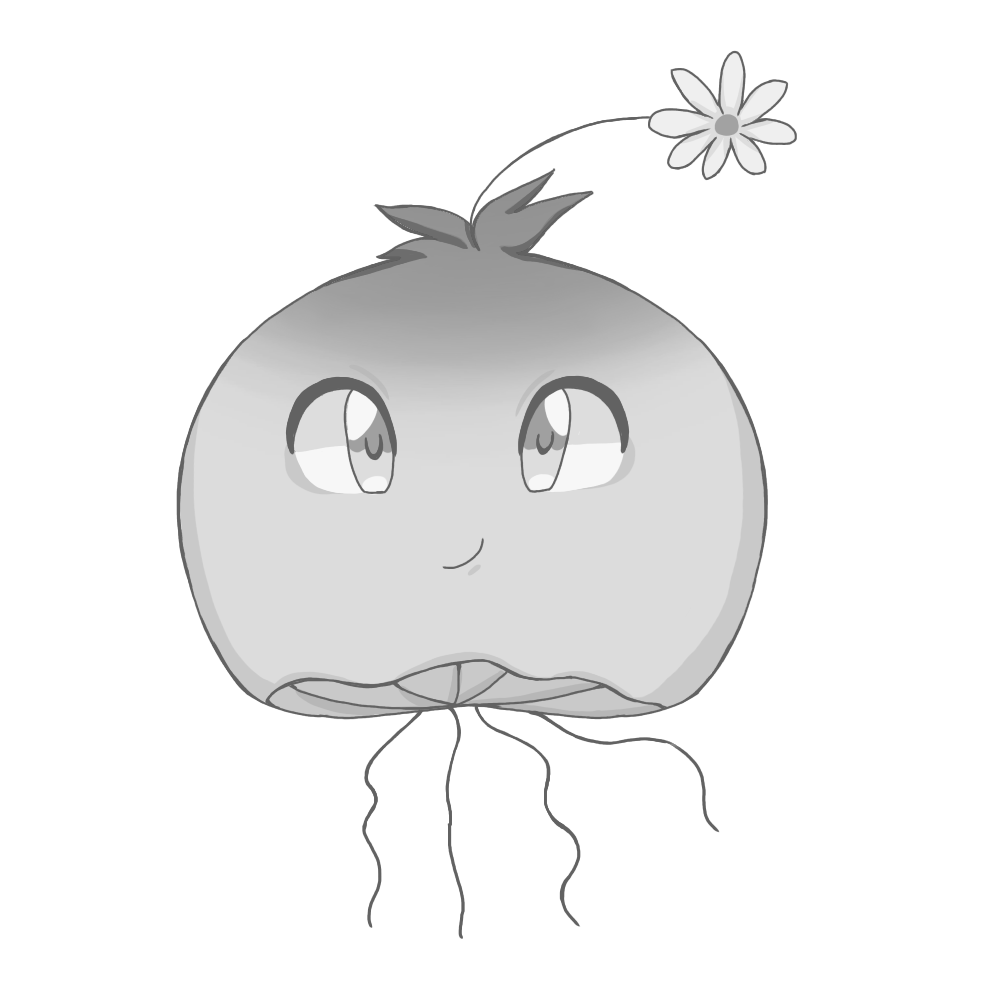 |
Asteran |  |
Violan |  |
Pouse | ||
 |
Myrchat |  |
Cutie Pie |  |
Percy |
When your bomb acts as a web server...
| Full name | Abbrev. | Response | Full name | Abbrev. | Response |
|---|---|---|---|---|---|
| Continue | Cont | 100 | Unauthorized | Unauth | 401 |
| Switching Protocols | SwPrt | 101 | Payment Required | PayReq | 402 |
| Processing | Proc | 102 | Forbidden | Frbd | 403 |
| OK | OK | 200 | Not Found | NFnd | 404 |
| Created | Crtd | 201 | Request Time-out | TmOut | 408 |
| Moved Permanently | MvPerm | 301 | Gone | Gone | 410 |
| Found | Found | 302 | I’m a teapot | ImaTp | 418 |
| Not Modified | NMod | 304 | Internal Server Error | SrvErr | 500 |
| Use Proxy | UPrx | 305 | Bad Gateway | BGw | 502 |
| Bad Request | BadR | 400 | Service Unavailable | SrvUn | 503 |
| Full name | Abbrev. | Response | Fullname | Abbrev. | Response |
|---|---|---|---|---|---|
| Strike | Stk | 601 | Detonate | Dtn | 602 |
| Pass | Ps | 603 | Press | Prs | 604 |
| Command | Cmd | 605 | Release | Rls | 606 |
| Blue | Blue | 701 | Green | Grn | 702 |
| Red | Red | 703 | Yellow | Yel | 704 |
| Black | Blk | 705 | White | Wht | 706 |
| Cut | Cut | 801 | Unscrew | Uns | 802 |
| Set | Set | 803 | Locate | Loc | 804 |
| Indicator | Indc | 805 | Batteries | Batt | 806 |
| Timer | Tmr | 901 | Lower | Lwr | 902 |
| Upper | Upr | 903 | Lever | Lvr | 904 |
| Time | Time | 905 | Done | Done | 906 |
Note: In the rare case the response number is over 999, subtract 999 from the response code.
You would think that the ports on the side of the bomb are used for something other than just for answering questions...
Be happy you are only doing this for one bomb session. At least you weren't Nintendo in the 1980's figuring out how to program the NES with 0's and 1's.
The main display at the top left displays a random hexadecimal character.
The input display at the top right displays the number the defuser has currently added.
Starting from 0, the defuser must add 100, 10, or 1 to get the desired number.
If the defuser messes up, reset by pressing the "CLR" button.
| -0 | -1 | -2 | -3 | -4 | -5 | -6 | -7 | -8 | -9 | -A | -B | -C | -D | -E | -F | |
|---|---|---|---|---|---|---|---|---|---|---|---|---|---|---|---|---|
| 0- | 0 | 1 | 2 | 3 | 4 | 5 | 6 | 7 | 8 | 9 | 10 | 11 | 12 | 13 | 14 | 15 |
| 1- | 16 | 17 | 18 | 19 | 20 | 21 | 22 | 23 | 24 | 25 | 26 | 27 | 28 | 29 | 30 | 31 |
| 2- | 32 | 33 | 34 | 35 | 36 | 37 | 38 | 39 | 40 | 41 | 42 | 43 | 44 | 45 | 46 | 47 |
| 3- | 48 | 49 | 50 | 51 | 52 | 53 | 54 | 55 | 56 | 57 | 58 | 59 | 60 | 61 | 62 | 63 |
| 4- | 64 | 65 | 66 | 67 | 68 | 69 | 70 | 71 | 72 | 73 | 74 | 75 | 76 | 77 | 78 | 79 |
| 5- | 80 | 81 | 82 | 83 | 84 | 85 | 86 | 87 | 88 | 89 | 90 | 91 | 92 | 93 | 94 | 95 |
| 6- | 96 | 97 | 98 | 99 | 100 | 101 | 102 | 103 | 104 | 105 | 106 | 107 | 108 | 109 | 110 | 111 |
| 7- | 112 | 113 | 114 | 115 | 116 | 117 | 118 | 119 | 120 | 121 | 122 | 123 | 124 | 125 | 126 | 127 |
| 8- | 128 | 129 | 130 | 131 | 132 | 133 | 134 | 135 | 136 | 137 | 138 | 139 | 140 | 141 | 142 | 143 |
| 9- | 144 | 145 | 146 | 147 | 148 | 149 | 150 | 151 | 152 | 153 | 154 | 155 | 156 | 157 | 158 | 159 |
| A- | 160 | 161 | 162 | 163 | 164 | 165 | 166 | 167 | 168 | 169 | 170 | 171 | 172 | 173 | 174 | 175 |
| B- | 176 | 177 | 178 | 179 | 180 | 181 | 182 | 183 | 184 | 185 | 186 | 187 | 188 | 189 | 190 | 191 |
| C- | 192 | 193 | 194 | 195 | 196 | 197 | 198 | 199 | 200 | 201 | 202 | 203 | 204 | 205 | 206 | 207 |
| D- | 208 | 209 | 210 | 211 | 212 | 213 | 214 | 215 | 216 | 217 | 218 | 219 | 220 | 221 | 222 | 223 |
| E- | 224 | 225 | 226 | 227 | 228 | 229 | 230 | 231 | 232 | 233 | 234 | 235 | 236 | 237 | 238 | 239 |
| F- | 240 | 241 | 242 | 243 | 244 | 245 | 246 | 247 | 248 | 249 | 250 | 251 | 252 | 253 | 254 | 255 |
Certain modules, both regular and needy, may appear as a translated variant. These behave identical to their English counterpart, but will have their labels, displays, etc. in a different language.
Refer to the modules' respective pages in sections 1 or 2 for instructions on how to disarm these modules and use the translation tables here to assist with translation.
Many translated modules can be identified by a sticker attached to the module denoting their language.
I’ll continue keeping this brief, as words only complicate matters. Especially when those words are complicated themselves by being in a language you don't understand.
Use the tables to help perform the two steps.
|
|
|
|
| |||||||||||||||||||||||||||||||||||||||||||||||||
|
|
|
|
|
| ||||||||||||||||||||||||||||||||||||||||||||||||
|
|
|
|
|
| ||||||||||||||||||||||||||||||||||||||||||||||||
|
|
|
|
|
| ||||||||||||||||||||||||||||||||||||||||||||||||
|
|
|
| ||||||||||||||||||||||||||||||||||||||||||||||||||
Top header = Danish, middle header = German, bottom header = English.
|
|
|
|
|
| ||||||||||||||||||||||||||||||||||||||||||||||||||||||||||||||||||||||||
|
|
|
|
|
| ||||||||||||||||||||||||||||||||||||||||||||||||||||||||||||||||||||||||
|
|
|
|
|
| ||||||||||||||||||||||||||||||||||||||||||||||||||||||||||||||||||||||||
|
|
|
|
|
| ||||||||||||||||||||||||||||||||||||||||||||||||||||||||||||||||||||||||
|
|
|
| ||||||||||||||||||||||||||||||||||||||||||||||||||||||||||||||||||||||||||
Top header = Esperanto, middle header = Spanish, bottom header = Estonian.
|
|
|
|
|
| ||||||||||||||||||||||||||||||||||||||||||||||||||||||||||||||||||||||||
|
|
|
|
|
| ||||||||||||||||||||||||||||||||||||||||||||||||||||||||||||||||||||||||
|
|
|
|
|
| ||||||||||||||||||||||||||||||||||||||||||||||||||||||||||||||||||||||||
|
|
|
|
|
| ||||||||||||||||||||||||||||||||||||||||||||||||||||||||||||||||||||||||
|
|
|
| ||||||||||||||||||||||||||||||||||||||||||||||||||||||||||||||||||||||||||
Top header = Finnish, middle header = French, bottom header = Hebrew.
|
|
|
|
|
| ||||||||||||||||||||||||||||||||||||||||||||||||||||||||||||||||||||||||
|
|
|
|
|
| ||||||||||||||||||||||||||||||||||||||||||||||||||||||||||||||||||||||||
|
|
|
|
|
| ||||||||||||||||||||||||||||||||||||||||||||||||||||||||||||||||||||||||
|
|
|
|
|
| ||||||||||||||||||||||||||||||||||||||||||||||||||||||||||||||||||||||||
|
|
|
| ||||||||||||||||||||||||||||||||||||||||||||||||||||||||||||||||||||||||||
Top header = Italian, middle header = Japanese, bottom header = Korean.
|
|
|
|
|
| ||||||||||||||||||||||||||||||||||||||||||||||||||||||||||||||||||||||||
|
|
|
|
|
| ||||||||||||||||||||||||||||||||||||||||||||||||||||||||||||||||||||||||
|
|
|
|
|
| ||||||||||||||||||||||||||||||||||||||||||||||||||||||||||||||||||||||||
|
|
|
|
|
| ||||||||||||||||||||||||||||||||||||||||||||||||||||||||||||||||||||||||
|
|
|
| ||||||||||||||||||||||||||||||||||||||||||||||||||||||||||||||||||||||||||
Top header = Dutch, middle header = Norwegian, bottom header = Polish.
|
|
|
|
|
| ||||||||||||||||||||||||||||||||||||||||||||||||||||||||||||||||||||||||
|
|
|
|
|
| ||||||||||||||||||||||||||||||||||||||||||||||||||||||||||||||||||||||||
|
|
|
|
|
| ||||||||||||||||||||||||||||||||||||||||||||||||||||||||||||||||||||||||
|
|
|
|
|
| ||||||||||||||||||||||||||||||||||||||||||||||||||||||||||||||||||||||||
|
|
|
| ||||||||||||||||||||||||||||||||||||||||||||||||||||||||||||||||||||||||||
Top header = Portuguese, middle header = Russian, bottom header = Swedish.
|
|
|
|
|
| ||||||||||||||||||||||||||||||||||||||||||||||||||||||||||||||||||||||||
|
|
|
|
| |||||||||||||||||||||||||||||||||||||||||||||||||||||||||||||||||||||||||
|
|
|
|
|
| ||||||||||||||||||||||||||||||||||||||||||||||||||||||||||||||||||||||||
|
|
|
|
|
| ||||||||||||||||||||||||||||||||||||||||||||||||||||||||||||||||||||||||
|
|
|
| ||||||||||||||||||||||||||||||||||||||||||||||||||||||||||||||||||||||||||
Top header = Thai, bottom header = Simplified Chinese.
|
|
|
|
|
| ||||||||||||||||||||||||||||||||||||||||||||||||||||||||||||
|
|
|
|
|
| ||||||||||||||||||||||||||||||||||||||||||||||||||||||||||||
|
|
|
|
|
| ||||||||||||||||||||||||||||||||||||||||||||||||||||||||||||
|
|
|
|
|
| ||||||||||||||||||||||||||||||||||||||||||||||||||||||||||||
|
|
|
| ||||||||||||||||||||||||||||||||||||||||||||||||||||||||||||||
| "MŮŽU": | CO, OK, TEDA, DOLE, VPRAVO, ZMÁČKNI, NAHOŘE, NIC, MŮŽU, PRÁZDNÉ, NE, VLEVO, ANO, POČKEJ |
|---|---|
| "NE": | VPRAVO, OK, CO, DOLE, PRÁZDNÉ, NAHOŘE, ANO, VLEVO, POČKEJ, MŮŽU, NIC, TEDA, ZMÁČKNI, NE |
| "PRÁZDNÉ": | NIC, VLEVO, POČKEJ, NE, TEDA, MŮŽU, NAHOŘE, CO, ANO, VPRAVO, ZMÁČKNI, OK, PRÁZDNÉ, DOLE |
| "NIC": | POČKEJ, NAHOŘE, OK, DOLE, NIC, ZMÁČKNI, MŮŽU, ANO, PRÁZDNÉ, TEDA, VPRAVO, VLEVO, CO, NE |
| "ANO": | VLEVO, NAHOŘE, OK, DOLE, CO, NIC, PRÁZDNÉ, ZMÁČKNI, VPRAVO, TEDA, POČKEJ, NE, ANO, MŮŽU |
| "CO": | OK, NAHOŘE, VLEVO, DOLE, NE, TEDA, ZMÁČKNI, MŮŽU, ANO, CO, VPRAVO, NIC, PRÁZDNÉ, POČKEJ |
| "TEDA": | VLEVO, TEDA, VPRAVO, ANO, MŮŽU, NIC, DOLE, PRÁZDNÉ, OK, NE, POČKEJ, CO, ZMÁČKNI, NAHOŘE |
| "VLEVO": | MŮŽU, ANO, VPRAVO, TEDA, OK, CO, NAHOŘE, PRÁZDNÉ, ZMÁČKNI, NIC, VLEVO, DOLE, POČKEJ, NE |
| "VPRAVO": | NAHOŘE, VPRAVO, NE, PRÁZDNÉ, DOLE, CO, NIC, TEDA, VLEVO, POČKEJ, ZMÁČKNI, MŮŽU, OK, ANO |
| "NAHOŘE": | CO, ANO, MŮŽU, ZMÁČKNI, PRÁZDNÉ, POČKEJ, TEDA, NAHOŘE, DOLE, VPRAVO, VLEVO, NIC, OK, NE |
| "DOLE": | NIC, MŮŽU, OK, TEDA, ANO, ZMÁČKNI, PRÁZDNÉ, POČKEJ, VPRAVO, DOLE, NAHOŘE, NE, VLEVO, CO |
| "OK": | DOLE, PRÁZDNÉ, NE, CO, VLEVO, ANO, POČKEJ, OK, VPRAVO, MŮŽU, NIC, ZMÁČKNI, TEDA, NAHOŘE |
| "POČKEJ": | VLEVO, PRÁZDNÉ, NIC, OK, CO, VPRAVO, NE, ZMÁČKNI, TEDA, POČKEJ, ANO, MŮŽU, NAHOŘE, DOLE |
| "ZMÁČKNI": | NAHOŘE, DOLE, CO, MŮŽU, ZMÁČKNI, OK, ANO, VLEVO, NIC, VPRAVO, NE, TEDA, PRÁZDNÉ, POČKEJ |
| "BYLI": | JASNĚ, BYLY, BÍLÍ, BÍLÝ, DÁL, NO?, O NĚM, DRŽ, CO?, BYLI, NO, JAKO, HOTOVO, ONĚM |
| "BYLY": | BÍLÍ, DÁL, JAKO, NO?, CO?, HOTOVO, NO, DRŽ, BYLI, ONĚM, BÍLÝ, JASNĚ, O NĚM, BYLY |
| "BÍLÍ": | NO, BYLY, NO?, BÍLÍ, DÁL, O NĚM, JASNĚ, ONĚM, BÍLÝ, BYLI, CO?, DRŽ, JAKO, HOTOVO |
| "BÍLÝ": | BYLI, BÍLÝ, O NĚM, DÁL, NO, BYLY, ONĚM, BÍLÍ, CO?, NO?, JASNĚ, HOTOVO, JAKO, DRŽ |
| "O NĚM": | HOTOVO, ONĚM, O NĚM, NO?, CO?, JASNĚ, BÍLÍ, DRŽ, BÍLÝ, JAKO, DÁL, NO, BYLY, BYLI |
| "ONĚM": | NO?, JASNĚ, DÁL, CO?, BÍLÝ, O NĚM, NO, HOTOVO, ONĚM, BYLI, JAKO, DRŽ, BYLY, BÍLÍ |
| "NO?": | NO?, BÍLÍ, BYLY, BYLI, HOTOVO, DRŽ, NO, DÁL, JASNĚ, JAKO, BÍLÝ, O NĚM, ONĚM, CO? |
| "NO": | O NĚM, ONĚM, BYLY, BÍLÝ, DÁL, NO, HOTOVO, BYLI, NO?, JAKO, BÍLÍ, JASNĚ, DRŽ, CO? |
| "CO?": | BYLI, DRŽ, BÍLÝ, BÍLÍ, ONĚM, HOTOVO, NO, JAKO, BYLY, NO?, O NĚM, DÁL, CO?, JASNĚ |
| "HOTOVO": | JASNĚ, NO?, DÁL, CO?, BÍLÍ, O NĚM, BÍLÝ, DRŽ, JAKO, BYLI, ONĚM, BYLY, NO, HOTOVO |
| "DÁL": | CO?, NO?, NO, BÍLÍ, DRŽ, JASNĚ, DÁL, JAKO, HOTOVO, BYLY, O NĚM, BÍLÝ, ONĚM, BYLI |
| "DRŽ": | BYLY, ONĚM, HOTOVO, NO, BYLI, O NĚM, JASNĚ, CO?, BÍLÝ, DÁL, DRŽ, NO?, BÍLÍ, JAKO |
| "JASNĚ": | BYLY, HOTOVO, JAKO, BÍLÝ, BYLI, DRŽ, NO?, O NĚM, JASNĚ, ONĚM, CO?, DÁL, BÍLÍ, NO |
| "JAKO": | BÍLÝ, DÁL, ONĚM, O NĚM, DRŽ, HOTOVO, NO, CO?, NO?, BYLI, JAKO, JASNĚ, BYLY, BÍLÍ |
| "VENSTRE": | HVAD, NEJ, HVAD?, JA, VENT, C, OKAY, TRYK, VENSTRE, MIDTEN, HØJRE, NÆSTE, FÆRDIG, ØJEBLIK |
|---|---|
| "HØJRE": | VENT, NEJ, HVAD, JA, MIDTEN, OKAY, FÆRDIG, NÆSTE, ØJEBLIK, VENSTRE, TRYK, HVAD?, C, HØJRE |
| "MIDTEN": | TRYK, NÆSTE, ØJEBLIK, HØJRE, HVAD?, VENSTRE, OKAY, HVAD, FÆRDIG, VENT, C, NEJ, MIDTEN, JA |
| "TRYK": | ØJEBLIK, OKAY, NEJ, JA, TRYK, C, VENSTRE, FÆRDIG, MIDTEN, HVAD?, VENT, NÆSTE, HVAD, HØJRE |
| "FÆRDIG": | NÆSTE, OKAY, NEJ, JA, HVAD, TRYK, MIDTEN, C, VENT, HVAD?, ØJEBLIK, HØJRE, FÆRDIG, VENSTRE |
| "HVAD": | NEJ, OKAY, NÆSTE, JA, HØJRE, HVAD?, C, VENSTRE, FÆRDIG, HVAD, VENT, TRYK, MIDTEN, ØJEBLIK |
| "HVAD?": | NÆSTE, HVAD?, VENT, FÆRDIG, VENSTRE, TRYK, JA, MIDTEN, NEJ, HØJRE, ØJEBLIK, HVAD, C, OKAY |
| "NÆSTE": | VENSTRE, FÆRDIG, VENT, HVAD?, NEJ, HVAD, OKAY, MIDTEN, C, TRYK, NÆSTE, JA, ØJEBLIK, HØJRE |
| "VENT": | OKAY, VENT, HØJRE, MIDTEN, JA, HVAD, TRYK, HVAD?, NÆSTE, ØJEBLIK, C, VENSTRE, NEJ, FÆRDIG |
| "OKAY": | HVAD, FÆRDIG, VENSTRE, C, MIDTEN, ØJEBLIK, HVAD?, OKAY, JA, VENT, NÆSTE, TRYK, NEJ, HØJRE |
| "JA": | TRYK, VENSTRE, NEJ, HVAD?, FÆRDIG, C, MIDTEN, ØJEBLIK, VENT, JA, OKAY, HØJRE, NÆSTE, HVAD |
| "NEJ": | JA, MIDTEN, HØJRE, HVAD, NÆSTE, FÆRDIG, ØJEBLIK, NEJ, VENT, VENSTRE, TRYK, C, HVAD?, OKAY |
| "ØJEBLIK": | NÆSTE, MIDTEN, TRYK, NEJ, HVAD, VENT, HØJRE, C, HVAD?, ØJEBLIK, FÆRDIG, VENSTRE, OKAY, JA |
| "C": | OKAY, JA, HVAD, VENSTRE, C, NEJ, FÆRDIG, NÆSTE, TRYK, VENT, HØJRE, HVAD?, MIDTEN, ØJEBLIK |
| "SE": | NÅRH, TRYG, VÆR, VÆRD, NÅR, ØH, VEJR, NÅH, IGEN, SE, ØHHH, NÅ, GENTAG, HVER |
| "TRYG": | VÆR, NÅR, NÅ, ØH, IGEN, GENTAG, ØHHH, NÅH, SE, HVER, VÆRD, NÅRH, VEJR, TRYG |
| "VÆR": | ØHHH, TRYG, ØH, VÆR, NÅR, VEJR, NÅRH, HVER, VÆRD, SE, IGEN, NÅH, NÅ, GENTAG |
| "VÆRD": | SE, VÆRD, VEJR, NÅR, ØHHH, TRYG, HVER, VÆR, IGEN, ØH, NÅRH, GENTAG, NÅ, NÅH |
| "VEJR": | GENTAG, HVER, VEJR, ØH, IGEN, NÅRH, VÆR, NÅH, VÆRD, NÅ, NÅR, ØHHH, TRYG, SE |
| "HVER": | ØH, NÅRH, NÅR, IGEN, VÆRD, VEJR, ØHHH, GENTAG, HVER, SE, NÅ, NÅH, TRYG, VÆR |
| "ØH": | ØH, VÆR, TRYG, SE, GENTAG, NÅH, ØHHH, NÅR, NÅRH, NÅ, VÆRD, VEJR, HVER, IGEN |
| "ØHHH": | VEJR, HVER, TRYG, VÆRD, NÅR, ØHHH, GENTAG, SE, ØH, NÅ, VÆR, NÅRH, NÅH, IGEN |
| "IGEN": | SE, NÅH, VÆRD, VÆR, HVER, GENTAG, ØHHH, NÅ, TRYG, ØH, VEJR, NÅR, IGEN, NÅRH |
| "GENTAG": | NÅRH, ØH, NÅR, IGEN, VÆR, VEJR, VÆRD, NÅH, NÅ, SE, HVER, TRYG, ØHHH, GENTAG |
| "NÅR": | IGEN, ØH, ØHHH, VÆR, NÅH, NÅRH, NÅR, NÅ, GENTAG, TRYG, VEJR, VÆRD, HVER, SE |
| "NÅH": | TRYG, HVER, GENTAG, ØHHH, SE, VEJR, NÅRH, IGEN, VÆRD, NÅR, NÅH, ØH, VÆR, NÅ |
| "NÅRH": | TRYG, GENTAG, NÅ, VÆRD, SE, NÅH, ØH, VEJR, NÅRH, HVER, IGEN, NÅR, VÆR, ØHHH |
| "NÅ": | VÆRD, NÅR, HVER, VEJR, NÅH, GENTAG, ØHHH, IGEN, ØH, SE, NÅ, NÅRH, TRYG, VÆR |
| "OKAY": | NEIN, NICHTS, , COUP, OBEN, NOCHMAL, Q, KUH, OKAY, FERTIG, JA, DA STEHT, DRÜCK, LEER |
|---|---|
| "JA": | OBEN, NICHTS, NEIN, COUP, FERTIG, Q, DRÜCK, DA STEHT, LEER, OKAY, KUH, , NOCHMAL, JA |
| "FERTIG": | KUH, DA STEHT, LEER, JA, , OKAY, Q, NEIN, DRÜCK, OBEN, NOCHMAL, NICHTS, FERTIG, COUP |
| "KUH": | LEER, Q, NICHTS, COUP, KUH, NOCHMAL, OKAY, DRÜCK, FERTIG, , OBEN, DA STEHT, NEIN, JA |
| "DRÜCK": | DA STEHT, Q, NICHTS, COUP, NEIN, KUH, FERTIG, NOCHMAL, OBEN, , LEER, JA, DRÜCK, OKAY |
| "NEIN": | NICHTS, Q, DA STEHT, COUP, JA, , NOCHMAL, OKAY, DRÜCK, NEIN, OBEN, KUH, FERTIG, LEER |
| " ": | DA STEHT, , OBEN, DRÜCK, OKAY, KUH, COUP, FERTIG, NICHTS, JA, LEER, NEIN, NOCHMAL, Q |
| "DA STEHT": | OKAY, DRÜCK, OBEN, , NICHTS, NEIN, Q, FERTIG, NOCHMAL, KUH, DA STEHT, COUP, LEER, JA |
| "OBEN": | Q, OBEN, JA, FERTIG, COUP, NEIN, KUH, , DA STEHT, LEER, NOCHMAL, OKAY, NICHTS, DRÜCK |
| "Q": | NEIN, DRÜCK, OKAY, NOCHMAL, FERTIG, LEER, , Q, COUP, OBEN, DA STEHT, KUH, NICHTS, JA |
| "COUP": | KUH, OKAY, NICHTS, , DRÜCK, NOCHMAL, FERTIG, LEER, OBEN, COUP, Q, JA, DA STEHT, NEIN |
| "NICHTS": | COUP, FERTIG, JA, NEIN, DA STEHT, DRÜCK, LEER, NICHTS, OBEN, OKAY, KUH, NOCHMAL, , Q |
| "LEER": | DA STEHT, FERTIG, KUH, NICHTS, NEIN, OBEN, JA, NOCHMAL, , LEER, DRÜCK, OKAY, Q, COUP |
| "NOCHMAL": | Q, COUP, NEIN, OKAY, NOCHMAL, NICHTS, DRÜCK, DA STEHT, KUH, OBEN, JA, , FERTIG, LEER |
| "SOHN": | SO'N, ZÄH, ZEHN, CN, MOMENT, SO EIN, CEE, 10, OH GOTT, SOHN, C, ZEHEN, WARTE, ZEH |
| "ZÄH": | ZEHN, MOMENT, ZEHEN, SO EIN, OH GOTT, WARTE, C, 10, SOHN, ZEH, CN, SO'N, CEE, ZÄH |
| "ZEHN": | C, ZÄH, SO EIN, ZEHN, MOMENT, CEE, SO'N, ZEH, CN, SOHN, OH GOTT, 10, ZEHEN, WARTE |
| "CN": | SOHN, CN, CEE, MOMENT, C, ZÄH, ZEH, ZEHN, OH GOTT, SO EIN, SO'N, WARTE, ZEHEN, 10 |
| "CEE": | WARTE, ZEH, CEE, SO EIN, OH GOTT, SO'N, ZEHN, 10, CN, ZEHEN, MOMENT, C, ZÄH, SOHN |
| "ZEH": | SO EIN, SO'N, MOMENT, OH GOTT, CN, CEE, C, WARTE, ZEH, SOHN, ZEHEN, 10, ZÄH, ZEHN |
| "SO EIN": | SO EIN, ZEHN, ZÄH, SOHN, WARTE, 10, C, MOMENT, SO'N, ZEHEN, CN, CEE, ZEH, OH GOTT |
| "C": | CEE, ZEH, ZÄH, CN, MOMENT, C, WARTE, SOHN, SO EIN, ZEHEN, ZEHN, SO'N, 10, OH GOTT |
| "OH GOTT": | SOHN, 10, CN, ZEHN, ZEH, WARTE, C, ZEHEN, ZÄH, SO EIN, CEE, MOMENT, OH GOTT, SO'N |
| "WARTE": | SO'N, SO EIN, MOMENT, OH GOTT, ZEHN, CEE, CN, 10, ZEHEN, SOHN, ZEH, ZÄH, C, WARTE |
| "MOMENT": | OH GOTT, SO EIN, C, ZEHN, 10, SO'N, MOMENT, ZEHEN, WARTE, ZÄH, CEE, CN, ZEH, SOHN |
| "10": | ZÄH, ZEH, WARTE, C, SOHN, CEE, SO'N, OH GOTT, CN, MOMENT, 10, SO EIN, ZEHN, ZEHEN |
| "SO'N": | ZÄH, WARTE, ZEHEN, CN, SOHN, 10, SO EIN, CEE, SO'N, ZEH, OH GOTT, MOMENT, ZEHN, C |
| "ZEHEN": | CN, MOMENT, ZEH, CEE, 10, WARTE, C, OH GOTT, SO EIN, SOHN, ZEHEN, SO'N, ZÄH, ZEHN |
| "READY": | YES, OKAY, WHAT, MIDDLE, LEFT, PRESS, RIGHT, BLANK, READY, NO, FIRST, UHHH, NOTHING, WAIT |
|---|---|
| "FIRST": | LEFT, OKAY, YES, MIDDLE, NO, RIGHT, NOTHING, UHHH, WAIT, READY, BLANK, WHAT, PRESS, FIRST |
| "NO": | BLANK, UHHH, WAIT, FIRST, WHAT, READY, RIGHT, YES, NOTHING, LEFT, PRESS, OKAY, NO, MIDDLE |
| "BLANK": | WAIT, RIGHT, OKAY, MIDDLE, BLANK, PRESS, READY, NOTHING, NO, WHAT, LEFT, UHHH, YES, FIRST |
| "NOTHING": | UHHH, RIGHT, OKAY, MIDDLE, YES, BLANK, NO, PRESS, LEFT, WHAT, WAIT, FIRST, NOTHING, READY |
| "YES": | OKAY, RIGHT, UHHH, MIDDLE, FIRST, WHAT, PRESS, READY, NOTHING, YES, LEFT, BLANK, NO, WAIT |
| "WHAT": | UHHH, WHAT, LEFT, NOTHING, READY, BLANK, MIDDLE, NO, OKAY, FIRST, WAIT, YES, PRESS, RIGHT |
| "UHHH": | READY, NOTHING, LEFT, WHAT, OKAY, YES, RIGHT, NO, PRESS, BLANK, UHHH, MIDDLE, WAIT, FIRST |
| "LEFT": | RIGHT, LEFT, FIRST, NO, MIDDLE, YES, BLANK, WHAT, UHHH, WAIT, PRESS, READY, OKAY, NOTHING |
| "RIGHT": | YES, NOTHING, READY, PRESS, NO, WAIT, WHAT, RIGHT, MIDDLE, LEFT, UHHH, BLANK, OKAY, FIRST |
| "MIDDLE": | BLANK, READY, OKAY, WHAT, NOTHING, PRESS, NO, WAIT, LEFT, MIDDLE, RIGHT, FIRST, UHHH, YES |
| "OKAY": | MIDDLE, NO, FIRST, YES, UHHH, NOTHING, WAIT, OKAY, LEFT, READY, BLANK, PRESS, WHAT, RIGHT |
| "WAIT": | UHHH, NO, BLANK, OKAY, YES, LEFT, FIRST, PRESS, WHAT, WAIT, NOTHING, READY, RIGHT, MIDDLE |
| "PRESS": | RIGHT, MIDDLE, YES, READY, PRESS, OKAY, NOTHING, UHHH, BLANK, LEFT, FIRST, WHAT, NO, WAIT |
| "YOU": | SURE, YOU ARE, YOUR, YOU'RE, NEXT, UH HUH, UR, HOLD, WHAT?, YOU, UH UH, LIKE, DONE, U |
| "YOU ARE": | YOUR, NEXT, LIKE, UH HUH, WHAT?, DONE, UH UH, HOLD, YOU, U, YOU'RE, SURE, UR, YOU ARE |
| "YOUR": | UH UH, YOU ARE, UH HUH, YOUR, NEXT, UR, SURE, U, YOU'RE, YOU, WHAT?, HOLD, LIKE, DONE |
| "YOU'RE": | YOU, YOU'RE, UR, NEXT, UH UH, YOU ARE, U, YOUR, WHAT?, UH HUH, SURE, DONE, LIKE, HOLD |
| "UR": | DONE, U, UR, UH HUH, WHAT?, SURE, YOUR, HOLD, YOU'RE, LIKE, NEXT, UH UH, YOU ARE, YOU |
| "U": | UH HUH, SURE, NEXT, WHAT?, YOU'RE, UR, UH UH, DONE, U, YOU, LIKE, HOLD, YOU ARE, YOUR |
| "UH HUH": | UH HUH, YOUR, YOU ARE, YOU, DONE, HOLD, UH UH, NEXT, SURE, LIKE, YOU'RE, UR, U, WHAT? |
| "UH UH": | UR, U, YOU ARE, YOU'RE, NEXT, UH UH, DONE, YOU, UH HUH, LIKE, YOUR, SURE, HOLD, WHAT? |
| "WHAT?": | YOU, HOLD, YOU'RE, YOUR, U, DONE, UH UH, LIKE, YOU ARE, UH HUH, UR, NEXT, WHAT?, SURE |
| "DONE": | SURE, UH HUH, NEXT, WHAT?, YOUR, UR, YOU'RE, HOLD, LIKE, YOU, U, YOU ARE, UH UH, DONE |
| "NEXT": | WHAT?, UH HUH, UH UH, YOUR, HOLD, SURE, NEXT, LIKE, DONE, YOU ARE, UR, YOU'RE, U, YOU |
| "HOLD": | YOU ARE, U, DONE, UH UH, YOU, UR, SURE, WHAT?, YOU'RE, NEXT, HOLD, UH HUH, YOUR, LIKE |
| "SURE": | YOU ARE, DONE, LIKE, YOU'RE, YOU, HOLD, UH HUH, UR, SURE, U, WHAT?, NEXT, YOUR, UH UH |
| "LIKE": | YOU'RE, NEXT, U, UR, HOLD, DONE, UH UH, WHAT?, UH HUH, YOU, LIKE, SURE, YOU ARE, YOUR |
| "PRETA": | JES, ATENDU, KIO, EN ORDO, DEKSTRA, NENIU, MEZA, NENIO, PRETA, NE, UNUA, EEE, NENION, PUŜU |
|---|---|
| "UNUA": | DEKSTRA, ATENDU, JES, EN ORDO, NE, MEZA, NENION, EEE, PUŜU, PRETA, NENIO, KIO, NENIU, UNUA |
| "NE": | NENIO, EEE, PUŜU, UNUA, KIO, PRETA, MEZA, JES, NENION, DEKSTRA, NENIU, ATENDU, NE, EN ORDO |
| "NENIO": | PUŜU, MEZA, ATENDU, EN ORDO, NENIO, NENIU, PRETA, NENION, NE, KIO, DEKSTRA, EEE, JES, UNUA |
| "NENION": | EEE, MEZA, ATENDU, EN ORDO, JES, NENIO, NE, NENIU, DEKSTRA, KIO, PUŜU, UNUA, NENION, PRETA |
| "JES": | ATENDU, MEZA, EEE, EN ORDO, UNUA, KIO, NENIU, PRETA, NENION, JES, DEKSTRA, NENIO, NE, PUŜU |
| "KIO": | EEE, KIO, DEKSTRA, NENION, PRETA, NENIO, EN ORDO, NE, ATENDU, UNUA, PUŜU, JES, NENIU, MEZA |
| "EEE": | PRETA, NENION, DEKSTRA, KIO, ATENDU, JES, MEZA, NE, NENIU, NENIO, EEE, EN ORDO, PUŜU, UNUA |
| "DEKSTRA": | MEZA, DEKSTRA, UNUA, NE, EN ORDO, JES, NENIO, KIO, EEE, PUŜU, NENIU, PRETA, ATENDU, NENION |
| "MEZA": | JES, NENION, PRETA, NENIU, NE, PUŜU, KIO, MEZA, EN ORDO, DEKSTRA, EEE, NENIO, ATENDU, UNUA |
| "EN ORDO": | NENIO, PRETA, ATENDU, KIO, NENION, NENIU, NE, PUŜU, DEKSTRA, EN ORDO, MEZA, UNUA, EEE, JES |
| "ATENDU": | EN ORDO, NE, UNUA, JES, EEE, NENION, PUŜU, ATENDU, DEKSTRA, PRETA, NENIO, NENIU, KIO, MEZA |
| "PUŜU": | EEE, NE, NENIO, ATENDU, JES, DEKSTRA, UNUA, NENIU, KIO, PUŜU, NENION, PRETA, MEZA, EN ORDO |
| "NENIU": | MEZA, EN ORDO, JES, PRETA, NENIU, ATENDU, NENION, EEE, NENIO, DEKSTRA, UNUA, KIO, NE, PUŜU |
| "NENIAN": | SEKVA, NENIAM, ĜUSTE, D, KIO?, DO DO, DD, FINITA, DUFOJE, NENIAN, DU, ATENTU, PRAVE, DO |
| "NENIAM": | ĜUSTE, KIO?, ATENTU, DO DO, DUFOJE, PRAVE, DU, FINITA, NENIAN, DO, D, SEKVA, DD, NENIAM |
| "ĜUSTE": | DU, NENIAM, DO DO, ĜUSTE, KIO?, DD, SEKVA, DO, D, NENIAN, DUFOJE, FINITA, ATENTU, PRAVE |
| "D": | NENIAN, D, DD, KIO?, DU, NENIAM, DO, ĜUSTE, DUFOJE, DO DO, SEKVA, PRAVE, ATENTU, FINITA |
| "DD": | PRAVE, DO, DD, DO DO, DUFOJE, SEKVA, ĜUSTE, FINITA, D, ATENTU, KIO?, DU, NENIAM, NENIAN |
| "DO": | DO DO, SEKVA, KIO?, DUFOJE, D, DD, DU, PRAVE, DO, NENIAN, ATENTU, FINITA, NENIAM, ĜUSTE |
| "DO DO": | DO DO, ĜUSTE, NENIAM, NENIAN, PRAVE, FINITA, DU, KIO?, SEKVA, ATENTU, D, DD, DO, DUFOJE |
| "DU": | DD, DO, NENIAM, D, KIO?, DU, PRAVE, NENIAN, DO DO, ATENTU, ĜUSTE, SEKVA, FINITA, DUFOJE |
| "DUFOJE": | NENIAN, FINITA, D, ĜUSTE, DO, PRAVE, DU, ATENTU, NENIAM, DO DO, DD, KIO?, DUFOJE, SEKVA |
| "PRAVE": | SEKVA, DO DO, KIO?, DUFOJE, ĜUSTE, DD, D, FINITA, ATENTU, NENIAN, DO, NENIAM, DU, PRAVE |
| "KIO?": | DUFOJE, DO DO, DU, ĜUSTE, FINITA, SEKVA, KIO?, ATENTU, PRAVE, NENIAM, DD, D, DO, NENIAN |
| "FINITA": | NENIAM, DO, PRAVE, DU, NENIAN, DD, SEKVA, DUFOJE, D, KIO?, FINITA, DO DO, ĜUSTE, ATENTU |
| "SEKVA": | NENIAM, PRAVE, ATENTU, D, NENIAN, FINITA, DO DO, DD, SEKVA, DO, DUFOJE, KIO?, ĜUSTE, DU |
| "ATENTU": | D, KIO?, DO, DD, FINITA, PRAVE, DU, DUFOJE, DO DO, NENIAN, ATENTU, SEKVA, NENIAM, ĜUSTE |
| "ESPERA": | LISTO, VA, ¿ÉSTA?, VALE, NO ESTÁ, ¿ÉSA?, OKAY, OTRO, ESPERA, NO, ¿QUÉ?, ESTA, ¿CÓMO?, NO ÉS |
|---|---|
| "¿QUÉ?": | NO ESTÁ, VA, LISTO, VALE, NO, OKAY, ¿CÓMO?, ESTA, NO ÉS, ESPERA, OTRO, ¿ÉSTA?, ¿ÉSA?, ¿QUÉ? |
| "NO": | OTRO, ESTA, NO ÉS, ¿QUÉ?, ¿ÉSTA?, ESPERA, OKAY, LISTO, ¿CÓMO?, NO ESTÁ, ¿ÉSA?, VA, NO, VALE |
| "OTRO": | NO ÉS, OKAY, VA, VALE, OTRO, ¿ÉSA?, ESPERA, ¿CÓMO?, NO, ¿ÉSTA?, NO ESTÁ, ESTA, LISTO, ¿QUÉ? |
| "¿CÓMO?": | ESTA, OKAY, VA, VALE, LISTO, OTRO, NO, ¿ÉSA?, NO ESTÁ, ¿ÉSTA?, NO ÉS, ¿QUÉ?, ¿CÓMO?, ESPERA |
| "LISTO": | VA, OKAY, ESTA, VALE, ¿QUÉ?, ¿ÉSTA?, ¿ÉSA?, ESPERA, ¿CÓMO?, LISTO, NO ESTÁ, OTRO, NO, NO ÉS |
| "¿ÉSTA?": | ESTA, ¿ÉSTA?, NO ESTÁ, ¿CÓMO?, ESPERA, OTRO, VALE, NO, VA, ¿QUÉ?, NO ÉS, LISTO, ¿ÉSA?, OKAY |
| "ESTA": | ESPERA, ¿CÓMO?, NO ESTÁ, ¿ÉSTA?, VA, LISTO, OKAY, NO, ¿ÉSA?, OTRO, ESTA, VALE, NO ÉS, ¿QUÉ? |
| "NO ESTÁ": | OKAY, NO ESTÁ, ¿QUÉ?, NO, VALE, LISTO, OTRO, ¿ÉSTA?, ESTA, NO ÉS, ¿ÉSA?, ESPERA, VA, ¿CÓMO? |
| "OKAY": | LISTO, ¿CÓMO?, ESPERA, ¿ÉSA?, NO, NO ÉS, ¿ÉSTA?, OKAY, VALE, NO ESTÁ, ESTA, OTRO, VA, ¿QUÉ? |
| "VALE": | OTRO, ESPERA, VA, ¿ÉSTA?, ¿CÓMO?, ¿ÉSA?, NO, NO ÉS, NO ESTÁ, VALE, OKAY, ¿QUÉ?, ESTA, LISTO |
| "VA": | VALE, NO, ¿QUÉ?, LISTO, ESTA, ¿CÓMO?, NO ÉS, VA, NO ESTÁ, ESPERA, OTRO, ¿ÉSA?, ¿ÉSTA?, OKAY |
| "NO ÉS": | ESTA, NO, OTRO, VA, LISTO, NO ESTÁ, ¿QUÉ?, ¿ÉSA?, ¿ÉSTA?, NO ÉS, ¿CÓMO?, ESPERA, OKAY, VALE |
| "¿ÉSA?": | OKAY, VALE, LISTO, ESPERA, ¿ÉSA?, VA, ¿CÓMO?, ESTA, OTRO, NO ESTÁ, ¿QUÉ?, ¿ÉSTA?, NO, NO ÉS |
| "OK": | DALE, ¿DÓNDE?, BUENO, ÉSTA, BIEN, RÁPIDO, ESTÁ, YA ESTÁ, SI, OK, ¿CUÁL?, ¿SEGURO?, OTRA, NO SÉ |
| "¿DÓNDE?": | BUENO, BIEN, ¿SEGURO?, RÁPIDO, SI, OTRA, ¿CUÁL?, YA ESTÁ, OK, NO SÉ, ÉSTA, DALE, ESTÁ, ¿DÓNDE? |
| "BUENO": | ¿CUÁL?, ¿DÓNDE?, RÁPIDO, BUENO, BIEN, ESTÁ, DALE, NO SÉ, ÉSTA, OK, SI, YA ESTÁ, ¿SEGURO?, OTRA |
| "ÉSTA": | OK, ÉSTA, ESTÁ, BIEN, ¿CUÁL?, ¿DÓNDE?, NO SÉ, BUENO, SI, RÁPIDO, DALE, OTRA, ¿SEGURO?, YA ESTÁ |
| "ESTÁ": | OTRA, NO SÉ, ESTÁ, RÁPIDO, SI, DALE, BUENO, YA ESTÁ, ÉSTA, ¿SEGURO?, BIEN, ¿CUÁL?, ¿DÓNDE?, OK |
| "NO SÉ": | RÁPIDO, DALE, BIEN, SI, ÉSTA, ESTÁ, ¿CUÁL?, OTRA, NO SÉ, OK, ¿SEGURO?, YA ESTÁ, ¿DÓNDE?, BUENO |
| "RÁPIDO": | RÁPIDO, BUENO, ¿DÓNDE?, OK, OTRA, YA ESTÁ, ¿CUÁL?, BIEN, DALE, ¿SEGURO?, ÉSTA, ESTÁ, NO SÉ, SI |
| "¿CUÁL?": | ESTÁ, NO SÉ, ¿DÓNDE?, ÉSTA, BIEN, ¿CUÁL?, OTRA, OK, RÁPIDO, ¿SEGURO?, BUENO, DALE, YA ESTÁ, SI |
| "SI": | OK, YA ESTÁ, ÉSTA, BUENO, NO SÉ, OTRA, ¿CUÁL?, ¿SEGURO?, ¿DÓNDE?, RÁPIDO, ESTÁ, BIEN, SI, DALE |
| "OTRA": | DALE, RÁPIDO, BIEN, SI, BUENO, ESTÁ, ÉSTA, YA ESTÁ, ¿SEGURO?, OK, NO SÉ, ¿DÓNDE?, ¿CUÁL?, OTRA |
| "BIEN": | SI, RÁPIDO, ¿CUÁL?, BUENO, YA ESTÁ, DALE, BIEN, ¿SEGURO?, OTRA, ¿DÓNDE?, ESTÁ, ÉSTA, NO SÉ, OK |
| "YA ESTÁ": | ¿DÓNDE?, NO SÉ, OTRA, ¿CUÁL?, OK, ESTÁ, DALE, SI, ÉSTA, BIEN, YA ESTÁ, RÁPIDO, BUENO, ¿SEGURO? |
| "DALE": | ¿DÓNDE?, OTRA, ¿SEGURO?, ÉSTA, OK, YA ESTÁ, RÁPIDO, ESTÁ, DALE, NO SÉ, SI, BIEN, BUENO, ¿CUÁL? |
| "¿SEGURO?": | ÉSTA, BIEN, NO SÉ, ESTÁ, YA ESTÁ, OTRA, ¿CUÁL?, SI, RÁPIDO, OK, ¿SEGURO?, DALE, ¿DÓNDE?, BUENO |
| "VALMIS": | JAH, OKEI, MIDA, KESKEL, VASAK, VAJUTA, PAREM, TÜHI, VALMIS, EI, ESIMENE, AHHH, MIDAGI, OOTA |
|---|---|
| "ESIMENE": | VASAK, OKEI, JAH, KESKEL, EI, PAREM, MIDAGI, AHHH, OOTA, VALMIS, TÜHI, MIDA, VAJUTA, ESIMENE |
| "EI": | TÜHI, AHHH, OOTA, ESIMENE, MIDA, VALMIS, PAREM, JAH, MIDAGI, VASAK, VAJUTA, OKEI, EI, KESKEL |
| "TÜHI": | OOTA, PAREM, OKEI, KESKEL, TÜHI, VAJUTA, VALMIS, MIDAGI, EI, MIDA, VASAK, AHHH, JAH, ESIMENE |
| "MIDAGI": | AHHH, PAREM, OKEI, KESKEL, JAH, TÜHI, EI, VAJUTA, VASAK, MIDA, OOTA, ESIMENE, MIDAGI, VALMIS |
| "JAH": | OKEI, PAREM, AHHH, KESKEL, ESIMENE, MIDA, VAJUTA, VALMIS, MIDAGI, JAH, VASAK, TÜHI, EI, OOTA |
| "MIDA": | AHHH, MIDA, VASAK, MIDAGI, VALMIS, TÜHI, KESKEL, EI, OKEI, ESIMENE, OOTA, JAH, VAJUTA, PAREM |
| "AHHH": | VALMIS, MIDAGI, VASAK, MIDA, OKEI, JAH, PAREM, EI, VAJUTA, TÜHI, AHHH, KESKEL, OOTA, ESIMENE |
| "VASAK": | PAREM, VASAK, ESIMENE, EI, KESKEL, JAH, TÜHI, MIDA, AHHH, OOTA, VAJUTA, VALMIS, OKEI, MIDAGI |
| "PAREM": | JAH, MIDAGI, VALMIS, VAJUTA, EI, OOTA, MIDA, PAREM, KESKEL, VASAK, AHHH, TÜHI, OKEI, ESIMENE |
| "KESKEL": | TÜHI, VALMIS, OKEI, MIDA, MIDAGI, VAJUTA, EI, OOTA, VASAK, KESKEL, PAREM, ESIMENE, AHHH, JAH |
| "OKEI": | KESKEL, EI, ESIMENE, JAH, AHHH, MIDAGI, OOTA, OKEI, VASAK, VALMIS, TÜHI, VAJUTA, MIDA, PAREM |
| "OOTA": | AHHH, EI, TÜHI, OKEI, JAH, VASAK, ESIMENE, VAJUTA, MIDA, OOTA, MIDAGI, VALMIS, PAREM, KESKEL |
| "VAJUTA": | PAREM, KESKEL, JAH, VALMIS, VAJUTA, OKEI, MIDAGI, AHHH, TÜHI, VASAK, ESIMENE, MIDA, EI, OOTA |
| "SA": | OK, SINA, SINU, SU, EDASI, AH HAH, SUU, OOT, MIDA?, SA, AH AH, NAGU, OLEMAS, U |
| "SINA": | SINU, EDASI, NAGU, AH HAH, MIDA?, OLEMAS, AH AH, OOT, SA, U, SU, OK, SUU, SINA |
| "SINU": | AH AH, SINA, AH HAH, SINU, EDASI, SUU, OK, U, SU, SA, MIDA?, OOT, NAGU, OLEMAS |
| "SU": | SA, SU, SUU, EDASI, AH AH, SINA, U, SINU, MIDA?, AH HAH, OK, OLEMAS, NAGU, OOT |
| "SUU": | OLEMAS, U, SUU, AH HAH, MIDA?, OK, SINU, OOT, SU, NAGU, EDASI, AH AH, SINA, SA |
| "U": | AH HAH, OK, EDASI, MIDA?, SU, SUU, AH AH, OLEMAS, U, SA, NAGU, OOT, SINA, SINU |
| "AH HAH": | AH HAH, SINU, SINA, SA, OLEMAS, OOT, AH AH, EDASI, OK, NAGU, SU, SUU, U, MIDA? |
| "AH AH": | SUU, U, SINA, SU, EDASI, AH AH, OLEMAS, SA, AH HAH, NAGU, SINU, OK, OOT, MIDA? |
| "MIDA?": | SA, OOT, SU, SINU, U, OLEMAS, AH AH, NAGU, SINA, AH HAH, SUU, EDASI, MIDA?, OK |
| "OLEMAS": | OK, AH HAH, EDASI, MIDA?, SINU, SUU, SU, OOT, NAGU, SA, U, SINA, AH AH, OLEMAS |
| "EDASI": | MIDA?, AH HAH, AH AH, SINU, OOT, OK, EDASI, NAGU, OLEMAS, SINA, SUU, SU, U, SA |
| "OOT": | SINA, U, OLEMAS, AH AH, SA, SUU, OK, MIDA?, SU, EDASI, OOT, AH HAH, SINU, NAGU |
| "OK": | SINA, OLEMAS, NAGU, SU, SA, OOT, AH HAH, SUU, OK, U, MIDA?, EDASI, SINU, AH AH |
| "NAGU": | SU, EDASI, U, SUU, OOT, OLEMAS, AH AH, MIDA?, AH HAH, SA, NAGU, OK, SINA, SINU |
| "T": | VALMIS, Ö, OIKEIN, ÖÖH, ODOTA, MITÄ?, HETKI, SITTEN, T, TEHTY, TEE, VÄÄRIN, PAINA, MITÄ |
|---|---|
| "TEE": | ODOTA, Ö, VALMIS, ÖÖH, TEHTY, HETKI, PAINA, VÄÄRIN, MITÄ, T, SITTEN, OIKEIN, MITÄ?, TEE |
| "TEHTY": | SITTEN, VÄÄRIN, MITÄ, TEE, OIKEIN, T, HETKI, VALMIS, PAINA, ODOTA, MITÄ?, Ö, TEHTY, ÖÖH |
| "SITTEN": | MITÄ, HETKI, Ö, ÖÖH, SITTEN, MITÄ?, T, PAINA, TEHTY, OIKEIN, ODOTA, VÄÄRIN, VALMIS, TEE |
| "PAINA": | VÄÄRIN, HETKI, Ö, ÖÖH, VALMIS, SITTEN, TEHTY, MITÄ?, ODOTA, OIKEIN, MITÄ, TEE, PAINA, T |
| "VALMIS": | Ö, HETKI, VÄÄRIN, ÖÖH, TEE, OIKEIN, MITÄ?, T, PAINA, VALMIS, ODOTA, SITTEN, TEHTY, MITÄ |
| "OIKEIN": | VÄÄRIN, OIKEIN, ODOTA, PAINA, T, SITTEN, ÖÖH, TEHTY, Ö, TEE, MITÄ, VALMIS, MITÄ?, HETKI |
| "VÄÄRIN": | T, PAINA, ODOTA, OIKEIN, Ö, VALMIS, HETKI, TEHTY, MITÄ?, SITTEN, VÄÄRIN, ÖÖH, MITÄ, TEE |
| "ODOTA": | HETKI, ODOTA, TEE, TEHTY, ÖÖH, VALMIS, SITTEN, OIKEIN, VÄÄRIN, MITÄ, MITÄ?, T, Ö, PAINA |
| "HETKI": | VALMIS, PAINA, T, MITÄ?, TEHTY, MITÄ, OIKEIN, HETKI, ÖÖH, ODOTA, VÄÄRIN, SITTEN, Ö, TEE |
| "ÖÖH": | SITTEN, T, Ö, OIKEIN, PAINA, MITÄ?, TEHTY, MITÄ, ODOTA, ÖÖH, HETKI, TEE, VÄÄRIN, VALMIS |
| "Ö": | ÖÖH, TEHTY, TEE, VALMIS, VÄÄRIN, PAINA, MITÄ, Ö, ODOTA, T, SITTEN, MITÄ?, OIKEIN, HETKI |
| "MITÄ": | VÄÄRIN, TEHTY, SITTEN, Ö, VALMIS, ODOTA, TEE, MITÄ?, OIKEIN, MITÄ, PAINA, T, HETKI, ÖÖH |
| "MITÄ?": | HETKI, ÖÖH, VALMIS, T, MITÄ?, Ö, PAINA, VÄÄRIN, SITTEN, ODOTA, TEE, OIKEIN, TEHTY, MITÄ |
| "MIKÄ": | RUOAN, MIKÄ?, JUU, JEP, PIANO, LÖYTYY, KYLLÄ, PIENO, EI OLE, MIKÄ, EI, RUUAN, EI OO, ON |
| "MIKÄ?": | JUU, PIANO, RUUAN, LÖYTYY, EI OLE, EI OO, EI, PIENO, MIKÄ, ON, JEP, RUOAN, KYLLÄ, MIKÄ? |
| "JUU": | EI, MIKÄ?, LÖYTYY, JUU, PIANO, KYLLÄ, RUOAN, ON, JEP, MIKÄ, EI OLE, PIENO, RUUAN, EI OO |
| "JEP": | MIKÄ, JEP, KYLLÄ, PIANO, EI, MIKÄ?, ON, JUU, EI OLE, LÖYTYY, RUOAN, EI OO, RUUAN, PIENO |
| "KYLLÄ": | EI OO, ON, KYLLÄ, LÖYTYY, EI OLE, RUOAN, JUU, PIENO, JEP, RUUAN, PIANO, EI, MIKÄ?, MIKÄ |
| "ON": | LÖYTYY, RUOAN, PIANO, EI OLE, JEP, KYLLÄ, EI, EI OO, ON, MIKÄ, RUUAN, PIENO, MIKÄ?, JUU |
| "LÖYTYY": | LÖYTYY, JUU, MIKÄ?, MIKÄ, EI OO, PIENO, EI, PIANO, RUOAN, RUUAN, JEP, KYLLÄ, ON, EI OLE |
| "EI": | KYLLÄ, ON, MIKÄ?, JEP, PIANO, EI, EI OO, MIKÄ, LÖYTYY, RUUAN, JUU, RUOAN, PIENO, EI OLE |
| "EI OLE": | MIKÄ, PIENO, JEP, JUU, ON, EI OO, EI, RUUAN, MIKÄ?, LÖYTYY, KYLLÄ, PIANO, EI OLE, RUOAN |
| "EI OO": | RUOAN, LÖYTYY, PIANO, EI OLE, JUU, KYLLÄ, JEP, PIENO, RUUAN, MIKÄ, ON, MIKÄ?, EI, EI OO |
| "PIANO": | EI OLE, LÖYTYY, EI, JUU, PIENO, RUOAN, PIANO, RUUAN, EI OO, MIKÄ?, KYLLÄ, JEP, ON, MIKÄ |
| "PIENO": | MIKÄ?, ON, EI OO, EI, MIKÄ, KYLLÄ, RUOAN, EI OLE, JEP, PIANO, PIENO, LÖYTYY, JUU, RUUAN |
| "RUOAN": | MIKÄ?, EI OO, RUUAN, JEP, MIKÄ, PIENO, LÖYTYY, KYLLÄ, RUOAN, ON, EI OLE, PIANO, JUU, EI |
| "RUUAN": | JEP, PIANO, ON, KYLLÄ, PIENO, EI OO, EI, EI OLE, LÖYTYY, MIKÄ, RUUAN, RUOAN, MIKÄ?, JUU |
| "PRÊT": | OUI, OKAY, QUOI, MILIEU, GAUCHE, APPUIE, DROITE, VIDE, PRÊT, NON, PREMIER, EUHHH, RIEN, ATTEND |
|---|---|
| "PREMIER": | GAUCHE, OKAY, OUI, MILIEU, NON, DROITE, RIEN, EUHHH, ATTEND, PRÊT, VIDE, QUOI, APPUIE, PREMIER |
| "NON": | VIDE, EUHHH, ATTEND, PREMIER, QUOI, PRÊT, DROITE, OUI, RIEN, GAUCHE, APPUIE, OKAY, NON, MILIEU |
| "VIDE": | ATTEND, DROITE, OKAY, MILIEU, VIDE, APPUIE, PRÊT, RIEN, NON, QUOI, GAUCHE, EUHHH, OUI, PREMIER |
| "RIEN": | EUHHH, DROITE, OKAY, MILIEU, OUI, VIDE, NON, APPUIE, GAUCHE, QUOI, ATTEND, PREMIER, RIEN, PRÊT |
| "OUI": | OKAY, DROITE, EUHHH, MILIEU, PREMIER, QUOI, APPUIE, PRÊT, RIEN, OUI, GAUCHE, VIDE, NON, ATTEND |
| "QUOI": | EUHHH, QUOI, GAUCHE, RIEN, PRÊT, VIDE, MILIEU, NON, OKAY, PREMIER, ATTEND, OUI, APPUIE, DROITE |
| "EUHHH": | PRÊT, RIEN, GAUCHE, QUOI, OKAY, OUI, DROITE, NON, APPUIE, VIDE, EUHHH, MILIEU, ATTEND, PREMIER |
| "GAUCHE": | DROITE, GAUCHE, PREMIER, NON, MILIEU, OUI, VIDE, QUOI, EUHHH, ATTEND, APPUIE, PRÊT, OKAY, RIEN |
| "DROITE": | OUI, RIEN, PRÊT, APPUIE, NON, ATTEND, QUOI, DROITE, MILIEU, GAUCHE, EUHHH, VIDE, OKAY, PREMIER |
| "MILIEU": | VIDE, PRÊT, OKAY, QUOI, RIEN, APPUIE, NON, ATTEND, GAUCHE, MILIEU, DROITE, PREMIER, EUHHH, OUI |
| "OKAY": | MILIEU, NON, PREMIER, OUI, EUHHH, RIEN, ATTEND, OKAY, GAUCHE, PRÊT, VIDE, APPUIE, QUOI, DROITE |
| "ATTEND": | EUHHH, NON, VIDE, OKAY, OUI, GAUCHE, PREMIER, APPUIE, QUOI, ATTEND, RIEN, PRÊT, DROITE, MILIEU |
| "APPUIE": | DROITE, MILIEU, OUI, PRÊT, APPUIE, OKAY, RIEN, EUHHH, VIDE, GAUCHE, PREMIER, QUOI, NON, ATTEND |
| "TOI": | SÛR, TON, TAON, THON, SUIVANT, EUH, T'ONT, CONTINUE, QUOI?, TOI, E, COMME, FAIT, TOIT |
| "TON": | TAON, SUIVANT, COMME, EUH, QUOI?, FAIT, E, CONTINUE, TOI, TOIT, THON, SÛR, T'ONT, TON |
| "TAON": | E, TON, EUH, TAON, SUIVANT, T'ONT, SÛR, TOIT, THON, TOI, QUOI?, CONTINUE, COMME, FAIT |
| "THON": | TOI, THON, T'ONT, SUIVANT, E, TON, TOIT, TAON, QUOI?, EUH, SÛR, FAIT, COMME, CONTINUE |
| "T'ONT": | FAIT, TOIT, T'ONT, EUH, QUOI?, SÛR, TAON, CONTINUE, THON, COMME, SUIVANT, E, TON, TOI |
| "TOIT": | EUH, SÛR, SUIVANT, QUOI?, THON, T'ONT, E, FAIT, TOIT, TOI, COMME, CONTINUE, TON, TAON |
| "EUH": | EUH, TAON, TON, TOI, FAIT, CONTINUE, E, SUIVANT, SÛR, COMME, THON, T'ONT, TOIT, QUOI? |
| "E": | T'ONT, TOIT, TON, THON, SUIVANT, E, FAIT, TOI, EUH, COMME, TAON, SÛR, CONTINUE, QUOI? |
| "QUOI?": | TOI, CONTINUE, THON, TAON, TOIT, FAIT, E, COMME, TON, EUH, T'ONT, SUIVANT, QUOI?, SÛR |
| "FAIT": | SÛR, EUH, SUIVANT, QUOI?, TAON, T'ONT, THON, CONTINUE, COMME, TOI, TOIT, TON, E, FAIT |
| "SUIVANT": | QUOI?, EUH, E, TAON, CONTINUE, SÛR, SUIVANT, COMME, FAIT, TON, T'ONT, THON, TOIT, TOI |
| "CONTINUE": | TON, TOIT, FAIT, E, TOI, T'ONT, SÛR, QUOI?, THON, SUIVANT, CONTINUE, EUH, TAON, COMME |
| "SÛR": | TON, FAIT, COMME, THON, TOI, CONTINUE, EUH, T'ONT, SÛR, TOIT, QUOI?, SUIVANT, TAON, E |
| "COMME": | THON, SUIVANT, TOIT, T'ONT, CONTINUE, FAIT, E, QUOI?, EUH, TOI, COMME, SÛR, TON, TAON |
Hebrew (HE) on next page.
| "PRONTO": | SI, OK, COSA, CENTRO, SINISTRA, PREMI, DESTRA, VUOTO, PRONTO, NO, PRIMO, EHM, NIENTE, ASPETTA |
|---|---|
| "PRIMO": | SINISTRA, OK, SI, CENTRO, NO, DESTRA, NIENTE, EHM, ASPETTA, PRONTO, VUOTO, COSA, PREMI, PRIMO |
| "NO": | VUOTO, EHM, ASPETTA, PRIMO, COSA, PRONTO, DESTRA, SI, NIENTE, SINISTRA, PREMI, OK, NO, CENTRO |
| "VUOTO": | ASPETTA, DESTRA, OK, CENTRO, VUOTO, PREMI, PRONTO, NIENTE, NO, COSA, SINISTRA, EHM, SI, PRIMO |
| "NIENTE": | EHM, DESTRA, OK, CENTRO, SI, VUOTO, NO, PREMI, SINISTRA, COSA, ASPETTA, PRIMO, NIENTE, PRONTO |
| "SI": | OK, DESTRA, EHM, CENTRO, PRIMO, COSA, PREMI, PRONTO, NIENTE, SI, SINISTRA, VUOTO, NO, ASPETTA |
| "COSA": | EHM, COSA, SINISTRA, NIENTE, PRONTO, VUOTO, CENTRO, NO, OK, PRIMO, ASPETTA, SI, PREMI, DESTRA |
| "EHM": | PRONTO, NIENTE, SINISTRA, COSA, OK, SI, DESTRA, NO, PREMI, VUOTO, EHM, CENTRO, ASPETTA, PRIMO |
| "SINISTRA": | DESTRA, SINISTRA, PRIMO, NO, CENTRO, SI, VUOTO, COSA, EHM, ASPETTA, PREMI, PRONTO, OK, NIENTE |
| "DESTRA": | SI, NIENTE, PRONTO, PREMI, NO, ASPETTA, COSA, DESTRA, CENTRO, SINISTRA, EHM, VUOTO, OK, PRIMO |
| "CENTRO": | VUOTO, PRONTO, OK, COSA, NIENTE, PREMI, NO, ASPETTA, SINISTRA, CENTRO, DESTRA, PRIMO, EHM, SI |
| "OK": | CENTRO, NO, PRIMO, SI, EHM, NIENTE, ASPETTA, OK, SINISTRA, PRONTO, VUOTO, PREMI, COSA, DESTRA |
| "ASPETTA": | EHM, NO, VUOTO, OK, SI, SINISTRA, PRIMO, PREMI, COSA, ASPETTA, NIENTE, PRONTO, DESTRA, CENTRO |
| "PREMI": | DESTRA, CENTRO, SI, PRONTO, PREMI, OK, NIENTE, EHM, VUOTO, SINISTRA, PRIMO, COSA, NO, ASPETTA |
| "RIPETI": | DAINO, SCUSA, IN ALTO, IN BASSO, PROSSIMO, UH HUH, CAPELLO, VA BENE, COSA?, RIPETI, UH UH, DAI NO, FATTO, CAPPELLO |
| "SCUSA": | IN ALTO, PROSSIMO, DAI NO, UH HUH, COSA?, FATTO, UH UH, VA BENE, RIPETI, CAPPELLO, IN BASSO, DAINO, CAPELLO, SCUSA |
| "IN ALTO": | UH UH, SCUSA, UH HUH, IN ALTO, PROSSIMO, CAPELLO, DAINO, CAPPELLO, IN BASSO, RIPETI, COSA?, VA BENE, DAI NO, FATTO |
| "IN BASSO": | RIPETI, IN BASSO, CAPELLO, PROSSIMO, UH UH, SCUSA, CAPPELLO, IN ALTO, COSA?, UH HUH, DAINO, FATTO, DAI NO, VA BENE |
| "CAPELLO": | FATTO, CAPPELLO, CAPELLO, UH HUH, COSA?, DAINO, IN ALTO, VA BENE, IN BASSO, DAI NO, PROSSIMO, UH UH, SCUSA, RIPETI |
| "CAPPELLO": | UH HUH, DAINO, PROSSIMO, COSA?, IN BASSO, CAPELLO, UH UH, FATTO, CAPPELLO, RIPETI, DAI NO, VA BENE, SCUSA, IN ALTO |
| "UH HUH": | UH HUH, IN ALTO, SCUSA, RIPETI, FATTO, VA BENE, UH UH, PROSSIMO, DAINO, DAI NO, IN BASSO, CAPELLO, CAPPELLO, COSA? |
| "UH UH": | CAPELLO, CAPPELLO, SCUSA, IN BASSO, PROSSIMO, UH UH, FATTO, RIPETI, UH HUH, DAI NO, IN ALTO, DAINO, VA BENE, COSA? |
| "COSA?": | RIPETI, VA BENE, IN BASSO, IN ALTO, CAPPELLO, FATTO, UH UH, DAI NO, SCUSA, UH HUH, CAPELLO, PROSSIMO, COSA?, DAINO |
| "FATTO": | DAINO, UH HUH, PROSSIMO, COSA?, IN ALTO, CAPELLO, IN BASSO, VA BENE, DAI NO, RIPETI, CAPPELLO, SCUSA, UH UH, FATTO |
| "PROSSIMO": | COSA?, UH HUH, UH UH, IN ALTO, VA BENE, DAINO, PROSSIMO, DAI NO, FATTO, SCUSA, CAPELLO, IN BASSO, CAPPELLO, RIPETI |
| "VA BENE": | SCUSA, CAPPELLO, FATTO, UH UH, RIPETI, CAPELLO, DAINO, COSA?, IN BASSO, PROSSIMO, VA BENE, UH HUH, IN ALTO, DAI NO |
| "DAINO": | SCUSA, FATTO, DAI NO, IN BASSO, RIPETI, VA BENE, UH HUH, CAPELLO, DAINO, CAPPELLO, COSA?, PROSSIMO, IN ALTO, UH UH |
| "DAI NO": | IN BASSO, PROSSIMO, CAPPELLO, CAPELLO, VA BENE, FATTO, UH UH, COSA?, UH HUH, RIPETI, DAI NO, DAINO, SCUSA, IN ALTO |
| "א": | עין, הוא, אם, E, אף אחד, הם, היא, הלאה, א, סיימתי, ע, עם, אלף, אי |
|---|---|
| "ע": | אף אחד, הוא, עין, E, סיימתי, היא, אלף, עם, אי, א, הלאה, אם, הם, ע |
| "סיימתי": | הלאה, עם, אי, ע, אם, א, היא, עין, אלף, אף אחד, הם, הוא, סיימתי, E |
| "הלאה": | אי, היא, הוא, E, הלאה, הם, א, אלף, סיימתי, אם, אף אחד, עם, עין, ע |
| "אלף": | עם, היא, הוא, E, עין, הלאה, סיימתי, הם, אף אחד, אם, אי, ע, אלף, א |
| "עין": | הוא, היא, עם, E, ע, אם, הם, א, אלף, עין, אף אחד, הלאה, סיימתי, אי |
| "אם": | עם, אם, אף אחד, אלף, א, הלאה, E, סיימתי, הוא, ע, אי, עין, הם, היא |
| "עם": | א, אלף, אף אחד, אם, הוא, עין, היא, סיימתי, הם, הלאה, עם, E, אי, ע |
| "אף אחד": | היא, אף אחד, ע, סיימתי, E, עין, הלאה, אם, עם, אי, הם, א, הוא, אלף |
| "היא": | עין, אלף, א, הם, סיימתי, אי, אם, היא, E, אף אחד, עם, הלאה, הוא, ע |
| "E": | הלאה, א, הוא, אם, אלף, הם, סיימתי, אי, אף אחד, E, היא, ע, עם, עין |
| "הוא": | E, סיימתי, ע, עין, עם, אלף, אי, הוא, אף אחד, א, הלאה, הם, אם, היא |
| "אי": | עם, סיימתי, הלאה, הוא, עין, אף אחד, ע, הם, אם, אי, אלף, א, היא, E |
| "הם": | היא, E, עין, א, הם, הוא, אלף, עם, הלאה, אף אחד, ע, אם, סיימתי, אי |
| "M": | בטח, אמממ, אהא, כן, שוב, האות א, לא, כאילו, את, M, האות ע, רגע, עט, נו |
| "אמממ": | אהא, שוב, רגע, האות א, את, עט, האות ע, כאילו, M, נו, כן, בטח, לא, אמממ |
| "אהא": | האות ע, אמממ, האות א, אהא, שוב, לא, בטח, נו, כן, M, את, כאילו, רגע, עט |
| "כן": | M, כן, לא, שוב, האות ע, אמממ, נו, אהא, את, האות א, בטח, עט, רגע, כאילו |
| "לא": | עט, נו, לא, האות א, את, בטח, אהא, כאילו, כן, רגע, שוב, האות ע, אמממ, M |
| "נו": | האות א, בטח, שוב, את, כן, לא, האות ע, עט, נו, M, רגע, כאילו, אמממ, אהא |
| "האות א": | האות א, אהא, אמממ, M, עט, כאילו, האות ע, שוב, בטח, רגע, כן, לא, נו, את |
| "האות ע": | לא, נו, אמממ, כן, שוב, האות ע, עט, M, האות א, רגע, אהא, בטח, כאילו, את |
| "את": | M, כאילו, כן, אהא, נו, עט, האות ע, רגע, אמממ, האות א, לא, שוב, את, בטח |
| "עט": | בטח, האות א, שוב, את, אהא, לא, כן, כאילו, רגע, M, נו, אמממ, האות ע, עט |
| "שוב": | את, האות א, האות ע, אהא, כאילו, בטח, שוב, רגע, עט, אמממ, לא, כן, נו, M |
| "כאילו": | אמממ, נו, עט, האות ע, M, לא, בטח, את, כן, שוב, כאילו, האות א, אהא, רגע |
| "בטח": | אמממ, עט, רגע, כן, M, כאילו, האות א, לא, בטח, נו, את, שוב, אהא, האות ע |
| "רגע": | כן, שוב, נו, לא, כאילו, עט, האות ע, את, האות א, M, רגע, בטח, אמממ, אהא |
| 空白 | 上、オッケー、真ん中、違う、右、わかった、いや、待って、空白、うん、終わり、下、左、押す |
|---|---|
| 終わり | 右、オッケー、上、違う、うん、いや、左、下、押す、空白、待って、真ん中、わかった、終わり |
| うん | 待って、下、押す、終わり、真ん中、空白、いや、上、左、右、わかった、オッケー、うん、違う |
| 待って | 押す、いや、オッケー、違う、待って、わかった、空白、左、うん、真ん中、右、下、上、終わり |
| 左 | 下、いや、オッケー、違う、上、待って、うん、わかった、右、真ん中、押す、終わり、左、空白 |
| 上 | オッケー、いや、下、違う、終わり、真ん中、わかった、空白、左、上、右、待って、うん、押す |
| 真ん中 | 下、真ん中、右、左、空白、待って、違う、うん、オッケー、終わり、押す、上、わかった、いや |
| 下 | 空白、左、右、真ん中、オッケー、上、いや、うん、わかった、待って、下、違う、押す、終わり |
| 右 | いや、右、終わり、うん、違う、上、待って、真ん中、下、押す、わかった、空白、オッケー、左 |
| いや | 上、左、空白、わかった、うん、押す、真ん中、いや、違う、右、下、待って、オッケー、終わり |
| 違う | 待って、空白、オッケー、真ん中、左、わかった、うん、押す、右、違う、いや、終わり、下、上 |
| オッケー | 違う、うん、終わり、上、下、左、押す、オッケー、右、空白、待って、わかった、真ん中、いや |
| 押す | 下、うん、待って、オッケー、上、右、終わり、わかった、真ん中、押す、左、空白、いや、違う |
| わかった | いや、違う、上、空白、わかった、オッケー、左、下、待って、右、終わり、真ん中、うん、押す |
| 絵 | 壱、あぁ、あ~、あーあ、1、何?、え、位置、解雇、絵、そう、一、蚕、何 |
| あぁ | あ~、1、一、何?、解雇、蚕、そう、位置、絵、何、あーあ、壱、え、あぁ |
| あ~ | そう、あぁ、何?、あ~、1、え、壱、何、あーあ、絵、解雇、位置、一、蚕 |
| あーあ | 絵、あーあ、え、1、そう、あぁ、何、あ~、解雇、何?、壱、蚕、一、位置 |
| え | 蚕、何、え、何?、解雇、壱、あ~、位置、あーあ、一、1、そう、あぁ、絵 |
| 何 | 何?、壱、1、解雇、あーあ、え、そう、蚕、何、絵、一、位置、あぁ、あ~ |
| 何? | 何?、あ~、あぁ、絵、蚕、位置、そう、1、壱、一、あーあ、え、何、解雇 |
| そう | え、何、あぁ、あーあ、1、そう、蚕、絵、何?、一、あ~、壱、位置、解雇 |
| 解雇 | 絵、位置、あーあ、あ~、何、蚕、そう、一、あぁ、何?、え、1、解雇、壱 |
| 蚕 | 壱、何?、1、解雇、あ~、え、あーあ、位置、一、絵、何、あぁ、そう、蚕 |
| 1 | 解雇、何?、そう、あ~、位置、壱、1、一、蚕、あぁ、え、あーあ、何、絵 |
| 位置 | あぁ、何、蚕、そう、絵、え、壱、解雇、あーあ、1、位置、何?、あ~、一 |
| 壱 | あぁ、蚕、一、あーあ、絵、位置、何?、え、壱、何、解雇、1、あ~、そう |
| 一 | あーあ、1、何、え、位置、蚕、そう、解雇、何?、絵、一、壱、あぁ、あ~ |
| 어 | 내 거, 다음, 네 거, 일단, 내 개, 그거, 잠시만, 어의, 어, 어이, 어어, 네 개, 오이, 그거 눌러! |
|---|---|
| 어어 | 내 개, 다음, 내 거, 일단, 어이, 잠시만, 오이, 네 개, 그거 눌러!, 어, 어의, 네 거, 그거, 어어 |
| 어이 | 어의, 네 개, 그거 눌러!, 어어, 네 거, 어, 잠시만, 내 거, 오이, 내 개, 그거, 다음, 어이, 일단 |
| 어의 | 그거 눌러!, 잠시만, 다음, 일단, 어의, 그거, 어, 오이, 어이, 네 거, 내 개, 네 개, 내 거, 어어 |
| 오이 | 네 개, 잠시만, 다음, 일단, 내 거, 어의, 어이, 그거, 내 개, 네 거, 그거 눌러!, 어어, 오이, 어 |
| 내 거 | 다음, 잠시만, 네 개, 일단, 어어, 네 거, 그거, 어, 오이, 내 거, 내 개, 어의, 어이, 그거 눌러! |
| 네 거 | 네 개, 네 거, 내 개, 오이, 어, 어의, 일단, 어이, 다음, 어어, 그거 눌러!, 내 거, 그거, 잠시만 |
| 네 개 | 어, 오이, 내 개, 네 거, 다음, 내 거, 잠시만, 어이, 그거, 어의, 네 개, 일단, 그거 눌러!, 어어 |
| 내 개 | 잠시만, 내 개, 어어, 어이, 일단, 내 거, 어의, 네 거, 네 개, 그거 눌러!, 그거, 어, 다음, 오이 |
| 잠시만 | 내 거, 오이, 어, 그거, 어이, 그거 눌러!, 네 거, 잠시만, 일단, 내 개, 네 개, 어의, 다음, 어어 |
| 일단 | 어의, 어, 다음, 네 거, 오이, 그거, 어이, 그거 눌러!, 내 개, 일단, 잠시만, 어어, 네 개, 내 거 |
| 다음 | 일단, 어이, 어어, 내 거, 네 개, 오이, 그거 눌러!, 다음, 내 개, 어, 어의, 그거, 네 거, 잠시만 |
| 그거 눌러! | 네 개, 어이, 어의, 다음, 내 거, 내 개, 어어, 그거, 네 거, 그거 눌러!, 오이, 어, 잠시만, 일단 |
| 그거 | 잠시만, 일단, 내 거, 어, 그거, 다음, 오이, 네 개, 어의, 내 개, 어어, 네 거, 어이, 그거 눌러! |
| 아니 그거 | 뭐, 그 옆에, 그거 말고, 아니, 뭐라고, 그러니까, 안이, 뭐?, 안써있어, 아니 그거, 비어있어, 왼쪽 위에, 뭐라고?, 아니라고 |
| 그 옆에 | 그거 말고, 뭐라고, 왼쪽 위에, 그러니까, 안써있어, 뭐라고?, 비어있어, 뭐?, 아니 그거, 아니라고, 아니, 뭐, 안이, 그 옆에 |
| 그거 말고 | 비어있어, 그 옆에, 그러니까, 그거 말고, 뭐라고, 안이, 뭐, 아니라고, 아니, 아니 그거, 안써있어, 뭐?, 왼쪽 위에, 뭐라고? |
| 아니 | 아니 그거, 아니, 안이, 뭐라고, 비어있어, 그 옆에, 아니라고, 그거 말고, 안써있어, 그러니까, 뭐, 뭐라고?, 왼쪽 위에, 뭐? |
| 안이 | 뭐라고?, 아니라고, 안이, 그러니까, 안써있어, 뭐, 그거 말고, 뭐?, 아니, 왼쪽 위에, 뭐라고, 비어있어, 그 옆에, 아니 그거 |
| 아니라고 | 그러니까, 뭐, 뭐라고, 안써있어, 아니, 안이, 비어있어, 뭐라고?, 아니라고, 아니 그거, 왼쪽 위에, 뭐?, 그 옆에, 그거 말고 |
| 그러니까 | 그러니까, 그거 말고, 그 옆에, 아니 그거, 뭐라고?, 뭐?, 비어있어, 뭐라고, 뭐, 왼쪽 위에, 아니, 안이, 아니라고, 안써있어 |
| 비어있어 | 안이, 아니라고, 그 옆에, 아니, 뭐라고, 비어있어, 뭐라고?, 아니 그거, 그러니까, 왼쪽 위에, 그거 말고, 뭐, 뭐?, 안써있어 |
| 안써있어 | 아니 그거, 뭐?, 아니, 그거 말고, 아니라고, 뭐라고?, 비어있어, 왼쪽 위에, 그 옆에, 그러니까, 안이, 뭐라고, 안써있어, 뭐 |
| 뭐라고? | 뭐, 그러니까, 뭐라고, 안써있어, 그거 말고, 안이, 아니, 뭐?, 왼쪽 위에, 아니 그거, 아니라고, 그 옆에, 비어있어, 뭐라고? |
| 뭐라고 | 안써있어, 그러니까, 비어있어, 그거 말고, 뭐?, 뭐, 뭐라고, 왼쪽 위에, 뭐라고?, 그 옆에, 안이, 아니, 아니라고, 아니 그거 |
| 뭐? | 그 옆에, 아니라고, 뭐라고?, 비어있어, 아니 그거, 안이, 뭐, 안써있어, 아니, 뭐라고, 뭐?, 그러니까, 그거 말고, 왼쪽 위에 |
| 뭐 | 그 옆에, 뭐라고?, 왼쪽 위에, 아니, 아니 그거, 뭐?, 그러니까, 안이, 뭐, 아니라고, 안써있어, 뭐라고, 그거 말고, 비어있어 |
| 왼쪽 위에 | 아니, 뭐라고, 아니라고, 안이, 뭐?, 뭐라고?, 비어있어, 안써있어, 그러니까, 아니 그거, 왼쪽 위에, 뭐, 그 옆에, 그거 말고 |
| "BOVEN": | HAUWT, IK ZEG, HOU, HOUWT, HOUSE, KLAAR, HOUT, EERSTE, BOVEN, ECHT, DRUK, HOUD, HAUSSE, JA |
|---|---|
| "DRUK": | HOUSE, IK ZEG, HAUWT, HOUWT, ECHT, HOUT, HAUSSE, HOUD, JA, BOVEN, EERSTE, HOU, KLAAR, DRUK |
| "ECHT": | EERSTE, HOUD, JA, DRUK, HOU, BOVEN, HOUT, HAUWT, HAUSSE, HOUSE, KLAAR, IK ZEG, ECHT, HOUWT |
| "EERSTE": | JA, HOUT, IK ZEG, HOUWT, EERSTE, KLAAR, BOVEN, HAUSSE, ECHT, HOU, HOUSE, HOUD, HAUWT, DRUK |
| "HAUSSE": | HOUD, HOUT, IK ZEG, HOUWT, HAUWT, EERSTE, ECHT, KLAAR, HOUSE, HOU, JA, DRUK, HAUSSE, BOVEN |
| "HAUWT": | IK ZEG, HOUT, HOUD, HOUWT, DRUK, HOU, KLAAR, BOVEN, HAUSSE, HAUWT, HOUSE, EERSTE, ECHT, JA |
| "HOU": | HOUD, HOU, HOUSE, HAUSSE, BOVEN, EERSTE, HOUWT, ECHT, IK ZEG, DRUK, JA, HAUWT, KLAAR, HOUT |
| "HOUD": | BOVEN, HAUSSE, HOUSE, HOU, IK ZEG, HAUWT, HOUT, ECHT, KLAAR, EERSTE, HOUD, HOUWT, JA, DRUK |
| "HOUSE": | HOUT, HOUSE, DRUK, ECHT, HOUWT, HAUWT, EERSTE, HOU, HOUD, JA, KLAAR, BOVEN, IK ZEG, HAUSSE |
| "HOUT": | HAUWT, HAUSSE, BOVEN, KLAAR, ECHT, JA, HOU, HOUT, HOUWT, HOUSE, HOUD, EERSTE, IK ZEG, DRUK |
| "HOUWT": | EERSTE, BOVEN, IK ZEG, HOU, HAUSSE, KLAAR, ECHT, JA, HOUSE, HOUWT, HOUT, DRUK, HOUD, HAUWT |
| "IK ZEG": | HOUWT, ECHT, DRUK, HAUWT, HOUD, HAUSSE, JA, IK ZEG, HOUSE, BOVEN, EERSTE, KLAAR, HOU, HOUT |
| "JA": | HOUD, ECHT, EERSTE, IK ZEG, HAUWT, HOUSE, DRUK, KLAAR, HOU, JA, HAUSSE, BOVEN, HOUT, HOUWT |
| "KLAAR": | HOUT, HOUWT, HAUWT, BOVEN, KLAAR, IK ZEG, HAUSSE, HOUD, EERSTE, HOUSE, DRUK, HOU, ECHT, JA |
| "LEEG": | WAT, LINKS, MIDDEN, NAAST, EH, NU, NEE, WACHT, ONDER, LEEG, OK, WAT?, RECHTS, NIETS |
| "LINKS": | MIDDEN, EH, WAT?, NU, ONDER, RECHTS, OK, WACHT, LEEG, NIETS, NAAST, WAT, NEE, LINKS |
| "MIDDEN": | OK, LINKS, NU, MIDDEN, EH, NEE, WAT, NIETS, NAAST, LEEG, ONDER, WACHT, WAT?, RECHTS |
| "NAAST": | LEEG, NAAST, NEE, EH, OK, LINKS, NIETS, MIDDEN, ONDER, NU, WAT, RECHTS, WAT?, WACHT |
| "NEE": | RECHTS, NIETS, NEE, NU, ONDER, WAT, MIDDEN, WACHT, NAAST, WAT?, EH, OK, LINKS, LEEG |
| "NIETS": | NU, WAT, EH, ONDER, NAAST, NEE, OK, RECHTS, NIETS, LEEG, WAT?, WACHT, LINKS, MIDDEN |
| "NU": | NU, MIDDEN, LINKS, LEEG, RECHTS, WACHT, OK, EH, WAT, WAT?, NAAST, NEE, NIETS, ONDER |
| "OK": | NEE, NIETS, LINKS, NAAST, EH, OK, RECHTS, LEEG, NU, WAT?, MIDDEN, WAT, WACHT, ONDER |
| "ONDER": | LEEG, WACHT, NAAST, MIDDEN, NIETS, RECHTS, OK, WAT?, LINKS, NU, NEE, EH, ONDER, WAT |
| "RECHTS": | WAT, NU, EH, ONDER, MIDDEN, NEE, NAAST, WACHT, WAT?, LEEG, NIETS, LINKS, OK, RECHTS |
| "EH": | ONDER, NU, OK, MIDDEN, WACHT, WAT, EH, WAT?, RECHTS, LINKS, NEE, NAAST, NIETS, LEEG |
| "WACHT": | LINKS, NIETS, RECHTS, OK, LEEG, NEE, WAT, ONDER, NAAST, EH, WACHT, NU, MIDDEN, WAT? |
| "WAT": | LINKS, RECHTS, WAT?, NAAST, LEEG, WACHT, NU, NEE, WAT, NIETS, ONDER, EH, MIDDEN, OK |
| "WAT?": | NAAST, EH, NIETS, NEE, WACHT, RECHTS, OK, ONDER, NU, LEEG, WAT?, WAT, LINKS, MIDDEN |
| "VENSTRE": | LR, C, NEI!, IGJEN, HVA?, CE , OKAY , HVA, VENSTRE, MIDT I, HØYRE, SOM, ELLER, SE |
|---|---|
| "HØYRE": | HVA?, C, LR, IGJEN, MIDT I, OKAY , ELLER, SOM, SE, VENSTRE, HVA, NEI!, CE , HØYRE |
| "MIDT I": | HVA, SOM, SE, HØYRE, NEI!, VENSTRE, OKAY , LR, ELLER, HVA?, CE , C, MIDT I, IGJEN |
| "HVA": | SE, OKAY , C, IGJEN, HVA, CE , VENSTRE, ELLER, MIDT I, NEI!, HVA?, SOM, LR, HØYRE |
| "ELLER": | SOM, OKAY , C, IGJEN, LR, HVA, MIDT I, CE , HVA?, NEI!, SE, HØYRE, ELLER, VENSTRE |
| "LR": | C, OKAY , SOM, IGJEN, HØYRE, NEI!, CE , VENSTRE, ELLER, LR, HVA?, HVA, MIDT I, SE |
| "NEI!": | SOM, NEI!, HVA?, ELLER, VENSTRE, HVA, IGJEN, MIDT I, C, HØYRE, SE, LR, CE , OKAY |
| "SOM": | VENSTRE, ELLER, HVA?, NEI!, C, LR, OKAY , MIDT I, CE , HVA, SOM, IGJEN, SE, HØYRE |
| "HVA?": | OKAY , HVA?, HØYRE, MIDT I, IGJEN, LR, HVA, NEI!, SOM, SE, CE , VENSTRE, C, ELLER |
| "OKAY ": | LR, ELLER, VENSTRE, CE , MIDT I, SE, NEI!, OKAY , IGJEN, HVA?, SOM, HVA, C, HØYRE |
| "IGJEN": | HVA, VENSTRE, C, NEI!, ELLER, CE , MIDT I, SE, HVA?, IGJEN, OKAY , HØYRE, SOM, LR |
| "C": | IGJEN, MIDT I, HØYRE, LR, SOM, ELLER, SE, C, HVA?, VENSTRE, HVA, CE , NEI!, OKAY |
| "SE": | SOM, MIDT I, HVA, C, LR, HVA?, HØYRE, CE , NEI!, SE, ELLER, VENSTRE, OKAY , IGJEN |
| "CE ": | OKAY , IGJEN, LR, VENSTRE, CE , C, ELLER, SOM, HVA, HVA?, HØYRE, NEI!, MIDT I, SE |
| "OVER": | ØØØØØH, TRYKK!, FERDIG?, KLAR, NESTE, NEI , GJENTA, TOMT, FEIL, OVER, IGJEN, Ø, FERDIG, KANSKJE |
| "TRYKK!": | FERDIG?, NESTE, Ø, NEI , FEIL, FERDIG, IGJEN, TOMT, OVER, KANSKJE, KLAR, ØØØØØH, GJENTA, TRYKK! |
| "FERDIG?": | IGJEN, TRYKK!, NEI , FERDIG?, NESTE, GJENTA, ØØØØØH, KANSKJE, KLAR, OVER, FEIL, TOMT, Ø, FERDIG |
| "KLAR": | OVER, KLAR, GJENTA, NESTE, IGJEN, TRYKK!, KANSKJE, FERDIG?, FEIL, NEI , ØØØØØH, FERDIG, Ø, TOMT |
| "GJENTA": | FERDIG, KANSKJE, GJENTA, NEI , FEIL, ØØØØØH, FERDIG?, TOMT, KLAR, Ø, NESTE, IGJEN, TRYKK!, OVER |
| "KANSKJE": | NEI , ØØØØØH, NESTE, FEIL, KLAR, GJENTA, IGJEN, FERDIG, KANSKJE, OVER, Ø, TOMT, TRYKK!, FERDIG? |
| "NEI ": | NEI , FERDIG?, TRYKK!, OVER, FERDIG, TOMT, IGJEN, NESTE, ØØØØØH, Ø, KLAR, GJENTA, KANSKJE, FEIL |
| "IGJEN": | GJENTA, KANSKJE, TRYKK!, KLAR, NESTE, IGJEN, FERDIG, OVER, NEI , Ø, FERDIG?, ØØØØØH, TOMT, FEIL |
| "FEIL": | OVER, TOMT, KLAR, FERDIG?, KANSKJE, FERDIG, IGJEN, Ø, TRYKK!, NEI , GJENTA, NESTE, FEIL, ØØØØØH |
| "FERDIG": | ØØØØØH, NEI , NESTE, FEIL, FERDIG?, GJENTA, KLAR, TOMT, Ø, OVER, KANSKJE, TRYKK!, IGJEN, FERDIG |
| "NESTE": | FEIL, NEI , IGJEN, FERDIG?, TOMT, ØØØØØH, NESTE, Ø, FERDIG, TRYKK!, GJENTA, KLAR, KANSKJE, OVER |
| "TOMT": | TRYKK!, KANSKJE, FERDIG, IGJEN, OVER, GJENTA, ØØØØØH, FEIL, KLAR, NESTE, TOMT, NEI , FERDIG?, Ø |
| "ØØØØØH": | TRYKK!, FERDIG, Ø, KLAR, OVER, TOMT, NEI , GJENTA, ØØØØØH, KANSKJE, FEIL, NESTE, FERDIG?, IGJEN |
| "Ø": | KLAR, NESTE, KANSKJE, GJENTA, TOMT, FERDIG, IGJEN, FEIL, NEI , OVER, Ø, ØØØØØH, TRYKK!, FERDIG? |
| "LUD": | MORZE, SŁOŃ, POWTÓRZ, CZYTAM, CHWILA, KOŃ, NIE WIEM, BUK, LUD, BÓG, LÓD, GUZIK, MOŻE, DŁOŃ |
|---|---|
| "LÓD": | CHWILA, SŁOŃ, MORZE, CZYTAM, BÓG, NIE WIEM, MOŻE, GUZIK, DŁOŃ, LUD, BUK, POWTÓRZ, KOŃ, LÓD |
| "BÓG": | BUK, GUZIK, DŁOŃ, LÓD, POWTÓRZ, LUD, NIE WIEM, MORZE, MOŻE, CHWILA, KOŃ, SŁOŃ, BÓG, CZYTAM |
| "BUK": | DŁOŃ, NIE WIEM, SŁOŃ, CZYTAM, BUK, KOŃ, LUD, MOŻE, BÓG, POWTÓRZ, CHWILA, GUZIK, MORZE, LÓD |
| "MOŻE": | GUZIK, NIE WIEM, SŁOŃ, CZYTAM, MORZE, BUK, BÓG, KOŃ, CHWILA, POWTÓRZ, DŁOŃ, LÓD, MOŻE, LUD |
| "MORZE": | SŁOŃ, NIE WIEM, GUZIK, CZYTAM, LÓD, POWTÓRZ, KOŃ, LUD, MOŻE, MORZE, CHWILA, BUK, BÓG, DŁOŃ |
| "POWTÓRZ": | GUZIK, POWTÓRZ, CHWILA, MOŻE, LUD, BUK, CZYTAM, BÓG, SŁOŃ, LÓD, DŁOŃ, MORZE, KOŃ, NIE WIEM |
| "GUZIK": | LUD, MOŻE, CHWILA, POWTÓRZ, SŁOŃ, MORZE, NIE WIEM, BÓG, KOŃ, BUK, GUZIK, CZYTAM, DŁOŃ, LÓD |
| "CHWILA": | NIE WIEM, CHWILA, LÓD, BÓG, CZYTAM, MORZE, BUK, POWTÓRZ, GUZIK, DŁOŃ, KOŃ, LUD, SŁOŃ, MOŻE |
| "NIE WIEM": | MORZE, MOŻE, LUD, KOŃ, BÓG, DŁOŃ, POWTÓRZ, NIE WIEM, CZYTAM, CHWILA, GUZIK, BUK, SŁOŃ, LÓD |
| "CZYTAM": | BUK, LUD, SŁOŃ, POWTÓRZ, MOŻE, KOŃ, BÓG, DŁOŃ, CHWILA, CZYTAM, NIE WIEM, LÓD, GUZIK, MORZE |
| "SŁOŃ": | CZYTAM, BÓG, LÓD, MORZE, GUZIK, MOŻE, DŁOŃ, SŁOŃ, CHWILA, LUD, BUK, KOŃ, POWTÓRZ, NIE WIEM |
| "DŁOŃ": | GUZIK, BÓG, BUK, SŁOŃ, MORZE, CHWILA, LÓD, KOŃ, POWTÓRZ, DŁOŃ, MOŻE, LUD, NIE WIEM, CZYTAM |
| "KOŃ": | NIE WIEM, CZYTAM, MORZE, LUD, KOŃ, SŁOŃ, MOŻE, GUZIK, BUK, CHWILA, LÓD, POWTÓRZ, BÓG, DŁOŃ |
| "OKOŃ": | ŚRODEK, CHYBA, JESTEŚ, HAHAHA, DÓŁ, HAH, HA HA, GÓRA, PRAWO, OKOŃ, AHA, SŁOWO, LEWO, HAHA |
| "CHYBA": | JESTEŚ, DÓŁ, SŁOWO, HAH, PRAWO, LEWO, AHA, GÓRA, OKOŃ, HAHA, HAHAHA, ŚRODEK, HA HA, CHYBA |
| "JESTEŚ": | AHA, CHYBA, HAH, JESTEŚ, DÓŁ, HA HA, ŚRODEK, HAHA, HAHAHA, OKOŃ, PRAWO, GÓRA, SŁOWO, LEWO |
| "HAHAHA": | OKOŃ, HAHAHA, HA HA, DÓŁ, AHA, CHYBA, HAHA, JESTEŚ, PRAWO, HAH, ŚRODEK, LEWO, SŁOWO, GÓRA |
| "HA HA": | LEWO, HAHA, HA HA, HAH, PRAWO, ŚRODEK, JESTEŚ, GÓRA, HAHAHA, SŁOWO, DÓŁ, AHA, CHYBA, OKOŃ |
| "HAHA": | HAH, ŚRODEK, DÓŁ, PRAWO, HAHAHA, HA HA, AHA, LEWO, HAHA, OKOŃ, SŁOWO, GÓRA, CHYBA, JESTEŚ |
| "HAH": | HAH, JESTEŚ, CHYBA, OKOŃ, LEWO, GÓRA, AHA, DÓŁ, ŚRODEK, SŁOWO, HAHAHA, HA HA, HAHA, PRAWO |
| "AHA": | HA HA, HAHA, CHYBA, HAHAHA, DÓŁ, AHA, LEWO, OKOŃ, HAH, SŁOWO, JESTEŚ, ŚRODEK, GÓRA, PRAWO |
| "PRAWO": | OKOŃ, GÓRA, HAHAHA, JESTEŚ, HAHA, LEWO, AHA, SŁOWO, CHYBA, HAH, HA HA, DÓŁ, PRAWO, ŚRODEK |
| "LEWO": | ŚRODEK, HAH, DÓŁ, PRAWO, JESTEŚ, HA HA, HAHAHA, GÓRA, SŁOWO, OKOŃ, HAHA, CHYBA, AHA, LEWO |
| "DÓŁ": | PRAWO, HAH, AHA, JESTEŚ, GÓRA, ŚRODEK, DÓŁ, SŁOWO, LEWO, CHYBA, HA HA, HAHAHA, HAHA, OKOŃ |
| "GÓRA": | CHYBA, HAHA, LEWO, AHA, OKOŃ, HA HA, ŚRODEK, PRAWO, HAHAHA, DÓŁ, GÓRA, HAH, JESTEŚ, SŁOWO |
| "ŚRODEK": | CHYBA, LEWO, SŁOWO, HAHAHA, OKOŃ, GÓRA, HAH, HA HA, ŚRODEK, HAHA, PRAWO, DÓŁ, JESTEŚ, AHA |
| "SŁOWO": | HAHAHA, DÓŁ, HAHA, HA HA, GÓRA, LEWO, AHA, PRAWO, HAH, OKOŃ, SŁOWO, ŚRODEK, CHYBA, JESTEŚ |
| "PRONTO": | ISSO, BELEZA, QUÊ, MEIO, ESQUERDA, APERTA, DIREITA, BRANCO, PRONTO, NÃO, PRIMEIRO, SEIS, NADA, ESPERA |
|---|---|
| "PRIMEIRO": | ESQUERDA, BELEZA, ISSO, MEIO, NÃO, DIREITA, NADA, SEIS, ESPERA, PRONTO, BRANCO, QUÊ, APERTA, PRIMEIRO |
| "NÃO": | BRANCO, SEIS, ESPERA, PRIMEIRO, QUÊ, PRONTO, DIREITA, ISSO, NADA, ESQUERDA, APERTA, BELEZA, NÃO, MEIO |
| "BRANCO": | ESPERA, DIREITA, BELEZA, MEIO, BRANCO, APERTA, PRONTO, NADA, NÃO, QUÊ, ESQUERDA, SEIS, ISSO, PRIMEIRO |
| "NADA": | SEIS, DIREITA, BELEZA, MEIO, ISSO, BRANCO, NÃO, APERTA, ESQUERDA, QUÊ, ESPERA, PRIMEIRO, NADA, PRONTO |
| "ISSO": | BELEZA, DIREITA, SEIS, MEIO, PRIMEIRO, QUÊ, APERTA, PRONTO, NADA, ISSO, ESQUERDA, BRANCO, NÃO, ESPERA |
| "QUÊ": | SEIS, QUÊ, ESQUERDA, NADA, PRONTO, BRANCO, MEIO, NÃO, BELEZA, PRIMEIRO, ESPERA, ISSO, APERTA, DIREITA |
| "SEIS": | PRONTO, NADA, ESQUERDA, QUÊ, BELEZA, ISSO, DIREITA, NÃO, APERTA, BRANCO, SEIS, MEIO, ESPERA, PRIMEIRO |
| "ESQUERDA": | DIREITA, ESQUERDA, PRIMEIRO, NÃO, MEIO, ISSO, BRANCO, QUÊ, SEIS, ESPERA, APERTA, PRONTO, BELEZA, NADA |
| "DIREITA": | ISSO, NADA, PRONTO, APERTA, NÃO, ESPERA, QUÊ, DIREITA, MEIO, ESQUERDA, SEIS, BRANCO, BELEZA, PRIMEIRO |
| "MEIO": | BRANCO, PRONTO, BELEZA, QUÊ, NADA, APERTA, NÃO, ESPERA, ESQUERDA, MEIO, DIREITA, PRIMEIRO, SEIS, ISSO |
| "BELEZA": | MEIO, NÃO, PRIMEIRO, ISSO, SEIS, NADA, ESPERA, BELEZA, ESQUERDA, PRONTO, BRANCO, APERTA, QUÊ, DIREITA |
| "ESPERA": | SEIS, NÃO, BRANCO, BELEZA, ISSO, ESQUERDA, PRIMEIRO, APERTA, QUÊ, ESPERA, NADA, PRONTO, DIREITA, MEIO |
| "APERTA": | DIREITA, MEIO, ISSO, PRONTO, APERTA, BELEZA, NADA, SEIS, BRANCO, ESQUERDA, PRIMEIRO, QUÊ, NÃO, ESPERA |
| "VOCÊ": | SEI, VOCÊ É, C, CÊ É, PRÓXIMO, CESTO, C E, SEGURA, QUÊ?, VOCÊ, SEXTO, TIPO, FOI, CÊ |
| "VOCÊ É": | C, PRÓXIMO, TIPO, CESTO, QUÊ?, FOI, SEXTO, SEGURA, VOCÊ, CÊ, CÊ É, SEI, C E, VOCÊ É |
| "C": | SEXTO, VOCÊ É, CESTO, C, PRÓXIMO, C E, SEI, CÊ, CÊ É, VOCÊ, QUÊ?, SEGURA, TIPO, FOI |
| "CÊ É": | VOCÊ, CÊ É, C E, PRÓXIMO, SEXTO, VOCÊ É, CÊ, C, QUÊ?, CESTO, SEI, FOI, TIPO, SEGURA |
| "C E": | FOI, CÊ, C E, CESTO, QUÊ?, SEI, C, SEGURA, CÊ É, TIPO, PRÓXIMO, SEXTO, VOCÊ É, VOCÊ |
| "CÊ": | CESTO, SEI, PRÓXIMO, QUÊ?, CÊ É, C E, SEXTO, FOI, CÊ, VOCÊ, TIPO, SEGURA, VOCÊ É, C |
| "CESTO": | CESTO, C, VOCÊ É, VOCÊ, FOI, SEGURA, SEXTO, PRÓXIMO, SEI, TIPO, CÊ É, C E, CÊ, QUÊ? |
| "SEXTO": | C E, CÊ, VOCÊ É, CÊ É, PRÓXIMO, SEXTO, FOI, VOCÊ, CESTO, TIPO, C, SEI, SEGURA, QUÊ? |
| "QUÊ?": | VOCÊ, SEGURA, CÊ É, C, CÊ, FOI, SEXTO, TIPO, VOCÊ É, CESTO, C E, PRÓXIMO, QUÊ?, SEI |
| "FOI": | SEI, CESTO, PRÓXIMO, QUÊ?, C, C E, CÊ É, SEGURA, TIPO, VOCÊ, CÊ, VOCÊ É, SEXTO, FOI |
| "PRÓXIMO": | QUÊ?, CESTO, SEXTO, C, SEGURA, SEI, PRÓXIMO, TIPO, FOI, VOCÊ É, C E, CÊ É, CÊ, VOCÊ |
| "SEGURA": | VOCÊ É, CÊ, FOI, SEXTO, VOCÊ, C E, SEI, QUÊ?, CÊ É, PRÓXIMO, SEGURA, CESTO, C, TIPO |
| "SEI": | VOCÊ É, FOI, TIPO, CÊ É, VOCÊ, SEGURA, CESTO, C E, SEI, CÊ, QUÊ?, PRÓXIMO, C, SEXTO |
| "TIPO": | CÊ É, PRÓXIMO, CÊ, C E, SEGURA, FOI, SEXTO, QUÊ?, CESTO, VOCÊ, TIPO, SEI, VOCÊ É, C |
| "ГОТОВО": | ДА, ТАК, ЕЩЁ РАЗ, СРЕДНЯЯ, ЛЕВАЯ, ЖМИ, ПРАВАЯ, ПУСТО, ГОТОВО, НЕТ, ПЕРВОЕ, НУ-У-У, НИЧЕГО, ПОГОДИ |
|---|---|
| "ПЕРВОЕ": | ЛЕВАЯ, ТАК, ДА, СРЕДНЯЯ, НЕТ, ПРАВАЯ, НИЧЕГО, НУ-У-У, ПОГОДИ, ГОТОВО, ПУСТО, ЕЩЁ РАЗ, ЖМИ, ПЕРВОЕ |
| "НЕТ": | ПУСТО, НУ-У-У, ПОГОДИ, ПЕРВОЕ, ЕЩЁ РАЗ, ГОТОВО, ПРАВАЯ, ДА, НИЧЕГО, ЛЕВАЯ, ЖМИ, ТАК, НЕТ, СРЕДНЯЯ |
| "ПУСТО": | ПОГОДИ, ПРАВАЯ, ТАК, СРЕДНЯЯ, ПУСТО, ЖМИ, ГОТОВО, НИЧЕГО, НЕТ, ЕЩЁ РАЗ, ЛЕВАЯ, НУ-У-У, ДА, ПЕРВОЕ |
| "НИЧЕГО": | НУ-У-У, ПРАВАЯ, ТАК, СРЕДНЯЯ, ДА, ПУСТО, НЕТ, ЖМИ, ЛЕВАЯ, ЕЩЁ РАЗ, ПОГОДИ, ПЕРВОЕ, НИЧЕГО, ГОТОВО |
| "ДА": | ТАК, ПРАВАЯ, НУ-У-У, СРЕДНЯЯ, ПЕРВОЕ, ЕЩЁ РАЗ, ЖМИ, ГОТОВО, НИЧЕГО, ДА, ЛЕВАЯ, ПУСТО, НЕТ, ПОГОДИ |
| "ЕЩЁ РАЗ": | НУ-У-У, ЕЩЁ РАЗ, ЛЕВАЯ, НИЧЕГО, ГОТОВО, ПУСТО, СРЕДНЯЯ, НЕТ, ТАК, ПЕРВОЕ, ПОГОДИ, ДА, ЖМИ, ПРАВАЯ |
| "НУ-У-У": | ГОТОВО, НИЧЕГО, ЛЕВАЯ, ЕЩЁ РАЗ, ТАК, ДА, ПРАВАЯ, НЕТ, ЖМИ, ПУСТО, НУ-У-У, СРЕДНЯЯ, ПОГОДИ, ПЕРВОЕ |
| "ЛЕВАЯ": | ПРАВАЯ, ЛЕВАЯ, ПЕРВОЕ, НЕТ, СРЕДНЯЯ, ДА, ПУСТО, ЕЩЁ РАЗ, НУ-У-У, ПОГОДИ, ЖМИ, ГОТОВО, ТАК, НИЧЕГО |
| "ПРАВАЯ": | ДА, НИЧЕГО, ГОТОВО, ЖМИ, НЕТ, ПОГОДИ, ЕЩЁ РАЗ, ПРАВАЯ, СРЕДНЯЯ, ЛЕВАЯ, НУ-У-У, ПУСТО, ТАК, ПЕРВОЕ |
| "СРЕДНЯЯ": | ПУСТО, ГОТОВО, ТАК, ЕЩЁ РАЗ, НИЧЕГО, ЖМИ, НЕТ, ПОГОДИ, ЛЕВАЯ, СРЕДНЯЯ, ПРАВАЯ, ПЕРВОЕ, НУ-У-У, ДА |
| "ТАК": | СРЕДНЯЯ, НЕТ, ПЕРВОЕ, ДА, НУ-У-У, НИЧЕГО, ПОГОДИ, ТАК, ЛЕВАЯ, ГОТОВО, ПУСТО, ЖМИ, ЕЩЁ РАЗ, ПРАВАЯ |
| "ПОГОДИ": | НУ-У-У, НЕТ, ПУСТО, ТАК, ДА, ЛЕВАЯ, ПЕРВОЕ, ЖМИ, ЕЩЁ РАЗ, ПОГОДИ, НИЧЕГО, ГОТОВО, ПРАВАЯ, СРЕДНЯЯ |
| "ЖМИ": | ПРАВАЯ, СРЕДНЯЯ, ДА, ГОТОВО, ЖМИ, ТАК, НИЧЕГО, НУ-У-У, ПУСТО, ЛЕВАЯ, ПЕРВОЕ, ЕЩЁ РАЗ, НЕТ, ПОГОДИ |
| "ВЕСЕЛО": | КОНЕЧНО, ВЕСИЛА, ВЕСИЛО, КРАБ, ДАЛЬШЕ, НУ ТАК, КРАП, ПОСТОЙ, ЕЩЕ РАЗ, ВЕСЕЛО, НУ И, НУ ТИПА, СДЕЛАНО, КРАББ |
| "ВЕСИЛА": | ВЕСИЛО, ДАЛЬШЕ, НУ ТИПА, НУ ТАК, ЕЩЕ РАЗ, СДЕЛАНО, НУ И, ПОСТОЙ, ВЕСЕЛО, КРАББ, КРАБ, КОНЕЧНО, КРАП, ВЕСИЛА |
| "ВЕСИЛО": | НУ И, ВЕСИЛА, НУ ТАК, ВЕСИЛО, ДАЛЬШЕ, КРАП, КОНЕЧНО, КРАББ, КРАБ, ВЕСЕЛО, ЕЩЕ РАЗ, ПОСТОЙ, НУ ТИПА, СДЕЛАНО |
| "КРАБ": | ВЕСЕЛО, КРАБ, КРАП, ДАЛЬШЕ, НУ И, ВЕСИЛА, КРАББ, ВЕСИЛО, ЕЩЕ РАЗ, НУ ТАК, КОНЕЧНО, СДЕЛАНО, НУ ТИПА, ПОСТОЙ |
| "КРАП": | СДЕЛАНО, КРАББ, КРАП, НУ ТАК, ЕЩЕ РАЗ, КОНЕЧНО, ВЕСИЛО, ПОСТОЙ, КРАБ, НУ ТИПА, ДАЛЬШЕ, НУ И, ВЕСИЛА, ВЕСЕЛО |
| "КРАББ": | НУ ТАК, КОНЕЧНО, ДАЛЬШЕ, ЕЩЕ РАЗ, КРАБ, КРАП, НУ И, СДЕЛАНО, КРАББ, ВЕСЕЛО, НУ ТИПА, ПОСТОЙ, ВЕСИЛА, ВЕСИЛО |
| "НУ ТАК": | НУ ТАК, ВЕСИЛО, ВЕСИЛА, ВЕСЕЛО, СДЕЛАНО, ПОСТОЙ, НУ И, ДАЛЬШЕ, КОНЕЧНО, НУ ТИПА, КРАБ, КРАП, КРАББ, ЕЩЕ РАЗ |
| "НУ И": | КРАП, КРАББ, ВЕСИЛА, КРАБ, ДАЛЬШЕ, НУ И, СДЕЛАНО, ВЕСЕЛО, НУ ТАК, НУ ТИПА, ВЕСИЛО, КОНЕЧНО, ПОСТОЙ, ЕЩЕ РАЗ |
| "ЕЩЕ РАЗ": | ВЕСЕЛО, ПОСТОЙ, КРАБ, ВЕСИЛО, КРАББ, СДЕЛАНО, НУ И, НУ ТИПА, ВЕСИЛА, НУ ТАК, КРАП, ДАЛЬШЕ, ЕЩЕ РАЗ, КОНЕЧНО |
| "СДЕЛАНО": | КОНЕЧНО, НУ ТАК, ДАЛЬШЕ, ЕЩЕ РАЗ, ВЕСИЛО, КРАП, КРАБ, ПОСТОЙ, НУ ТИПА, ВЕСЕЛО, КРАББ, ВЕСИЛА, НУ И, СДЕЛАНО |
| "ДАЛЬШЕ": | ЕЩЕ РАЗ, НУ ТАК, НУ И, ВЕСИЛО, ПОСТОЙ, КОНЕЧНО, ДАЛЬШЕ, НУ ТИПА, СДЕЛАНО, ВЕСИЛА, КРАП, КРАБ, КРАББ, ВЕСЕЛО |
| "ПОСТОЙ": | ВЕСИЛА, КРАББ, СДЕЛАНО, НУ И, ВЕСЕЛО, КРАП, КОНЕЧНО, ЕЩЕ РАЗ, КРАБ, ДАЛЬШЕ, ПОСТОЙ, НУ ТАК, ВЕСИЛО, НУ ТИПА |
| "КОНЕЧНО": | ВЕСИЛА, СДЕЛАНО, НУ ТИПА, КРАБ, ВЕСЕЛО, ПОСТОЙ, НУ ТАК, КРАП, КОНЕЧНО, КРАББ, ЕЩЕ РАЗ, ДАЛЬШЕ, ВЕСИЛО, НУ И |
| "НУ ТИПА": | КРАБ, ДАЛЬШЕ, КРАББ, КРАП, ПОСТОЙ, СДЕЛАНО, НУ И, ЕЩЕ РАЗ, НУ ТАК, ВЕСЕЛО, НУ ТИПА, КОНЕЧНО, ВЕСИЛА, ВЕСИЛО |
| "REDO": | JA, OKEJ, VAD, MITTEN, VÄNSTER, TRYCK, HÖGER, TOM, REDO, NEJ, FÖRSTA, ÖHHH, INGET, VÄNTA |
|---|---|
| "FÖRSTA": | VÄNSTER, OKEJ, JA, MITTEN, NEJ, HÖGER, INGET, ÖHHH, VÄNTA, REDO, TOM, VAD, TRYCK, FÖRSTA |
| "NEJ": | TOM, ÖHHH, VÄNTA, FÖRSTA, VAD, REDO, HÖGER, JA, INGET, VÄNSTER, TRYCK, OKEJ, NEJ, MITTEN |
| "TOM": | VÄNTA, HÖGER, OKEJ, MITTEN, TOM, TRYCK, REDO, INGET, NEJ, VAD, VÄNSTER, ÖHHH, JA, FÖRSTA |
| "INGET": | ÖHHH, HÖGER, OKEJ, MITTEN, JA, TOM, NEJ, TRYCK, VÄNSTER, VAD, VÄNTA, FÖRSTA, INGET, REDO |
| "JA": | OKEJ, HÖGER, ÖHHH, MITTEN, FÖRSTA, VAD, TRYCK, REDO, INGET, JA, VÄNSTER, TOM, NEJ, VÄNTA |
| "VAD": | ÖHHH, VAD, VÄNSTER, INGET, REDO, TOM, MITTEN, NEJ, OKEJ, FÖRSTA, VÄNTA, JA, TRYCK, HÖGER |
| "ÖHHH": | REDO, INGET, VÄNSTER, VAD, OKEJ, JA, HÖGER, NEJ, TRYCK, TOM, ÖHHH, MITTEN, VÄNTA, FÖRSTA |
| "VÄNSTER": | HÖGER, VÄNSTER, FÖRSTA, NEJ, MITTEN, JA, TOM, VAD, ÖHHH, VÄNTA, TRYCK, REDO, OKEJ, INGET |
| "HÖGER": | JA, INGET, REDO, TRYCK, NEJ, VÄNTA, VAD, HÖGER, MITTEN, VÄNSTER, ÖHHH, TOM, OKEJ, FÖRSTA |
| "MITTEN": | TOM, REDO, OKEJ, VAD, INGET, TRYCK, NEJ, VÄNTA, VÄNSTER, MITTEN, HÖGER, FÖRSTA, ÖHHH, JA |
| "OKEJ": | MITTEN, NEJ, FÖRSTA, JA, ÖHHH, INGET, VÄNTA, OKEJ, VÄNSTER, REDO, TOM, TRYCK, VAD, HÖGER |
| "VÄNTA": | ÖHHH, NEJ, TOM, OKEJ, JA, VÄNSTER, FÖRSTA, TRYCK, VAD, VÄNTA, INGET, REDO, HÖGER, MITTEN |
| "TRYCK": | HÖGER, MITTEN, JA, REDO, TRYCK, OKEJ, INGET, ÖHHH, TOM, VÄNSTER, FÖRSTA, VAD, NEJ, VÄNTA |
| "ELLER": | VISST, HELLER, SEJ, SÄG, NÄSTA, ÖÖÖH, HÄLLER, STOPP, VAD?, ELLER, Ö, SOM, KLAR, LR |
| "HELLER": | SEJ, NÄSTA, SOM, ÖÖÖH, VAD?, KLAR, Ö, STOPP, ELLER, LR, SÄG, VISST, HÄLLER, HELLER |
| "SEJ": | Ö, HELLER, ÖÖÖH, SEJ, NÄSTA, HÄLLER, VISST, LR, SÄG, ELLER, VAD?, STOPP, SOM, KLAR |
| "SÄG": | ELLER, SÄG, HÄLLER, NÄSTA, Ö, HELLER, LR, SEJ, VAD?, ÖÖÖH, VISST, KLAR, SOM, STOPP |
| "HÄLLER": | KLAR, LR, HÄLLER, ÖÖÖH, VAD?, VISST, SEJ, STOPP, SÄG, SOM, NÄSTA, Ö, HELLER, ELLER |
| "LR": | ÖÖÖH, VISST, NÄSTA, VAD?, SÄG, HÄLLER, Ö, KLAR, LR, ELLER, SOM, STOPP, HELLER, SEJ |
| "ÖÖÖH": | ÖÖÖH, SEJ, HELLER, ELLER, KLAR, STOPP, Ö, NÄSTA, VISST, SOM, SÄG, HÄLLER, LR, VAD? |
| "Ö": | HÄLLER, LR, HELLER, SÄG, NÄSTA, Ö, KLAR, ELLER, ÖÖÖH, SOM, SEJ, VISST, STOPP, VAD? |
| "VAD?": | ELLER, STOPP, SÄG, SEJ, LR, KLAR, Ö, SOM, HELLER, ÖÖÖH, HÄLLER, NÄSTA, VAD?, VISST |
| "KLAR": | VISST, ÖÖÖH, NÄSTA, VAD?, SEJ, HÄLLER, SÄG, STOPP, SOM, ELLER, LR, HELLER, Ö, KLAR |
| "NÄSTA": | VAD?, ÖÖÖH, Ö, SEJ, STOPP, VISST, NÄSTA, SOM, KLAR, HELLER, HÄLLER, SÄG, LR, ELLER |
| "STOPP": | HELLER, LR, KLAR, Ö, ELLER, HÄLLER, VISST, VAD?, SÄG, NÄSTA, STOPP, ÖÖÖH, SEJ, SOM |
| "VISST": | HELLER, KLAR, SOM, SÄG, ELLER, STOPP, ÖÖÖH, HÄLLER, VISST, LR, VAD?, NÄSTA, SEJ, Ö |
| "SOM": | SÄG, NÄSTA, LR, HÄLLER, STOPP, KLAR, Ö, VAD?, ÖÖÖH, ELLER, SOM, VISST, HELLER, SEJ |
| "กด": | ถูก, เศร้า, ไม่ใช่, เขลา, เข่า, เสาร์, เข้า, มัด, กด, ตัด, ลด, เขา, ผิด, เสา |
|---|---|
| "ลด": | เข่า, เศร้า, ถูก, เขลา, ตัด, เข้า, ผิด, เขา, เสา, กด, มัด, ไม่ใช่, เสาร์, ลด |
| "ตัด": | มัด, เขา, เสา, ลด, ไม่ใช่, กด, เข้า, ถูก, ผิด, เข่า, เสาร์, เศร้า, ตัด, เขลา |
| "มัด": | เสา, เข้า, เศร้า, เขลา, มัด, เสาร์, กด, ผิด, ตัด, ไม่ใช่, เข่า, เขา, ถูก, ลด |
| "ผิด": | เขา, เข้า, เศร้า, เขลา, ถูก, มัด, ตัด, เสาร์, เข่า, ไม่ใช่, เสา, ลด, ผิด, กด |
| "ถูก": | เศร้า, เข้า, เขา, เขลา, ลด, ไม่ใช่, เสาร์, กด, ผิด, ถูก, เข่า, มัด, ตัด, เสา |
| "ไม่ใช่": | เขา, ไม่ใช่, เข่า, ผิด, กด, มัด, เขลา, ตัด, เศร้า, ลด, เสา, ถูก, เสาร์, เข้า |
| "เขา": | กด, ผิด, เข่า, ไม่ใช่, เศร้า, ถูก, เข้า, ตัด, เสาร์, มัด, เขา, เขลา, เสา, ลด |
| "เข่า": | เข้า, เข่า, ลด, ตัด, เขลา, ถูก, มัด, ไม่ใช่, เขา, เสา, เสาร์, กด, เศร้า, ผิด |
| "เข้า": | ถูก, ผิด, กด, เสาร์, ตัด, เสา, ไม่ใช่, เข้า, เขลา, เข่า, เขา, มัด, เศร้า, ลด |
| "เขลา": | มัด, กด, เศร้า, ไม่ใช่, ผิด, เสาร์, ตัด, เสา, เข่า, เขลา, เข้า, ลด, เขา, ถูก |
| "เศร้า": | เขลา, ตัด, ลด, ถูก, เขา, ผิด, เสา, เศร้า, เข่า, กด, มัด, เสาร์, ไม่ใช่, เข้า |
| "เสา": | เขา, ตัด, มัด, เศร้า, ถูก, เข่า, ลด, เสาร์, ไม่ใช่, เสา, ผิด, กด, เข้า, เขลา |
| "เสาร์": | เข้า, เขลา, ถูก, กด, เสาร์, เศร้า, ผิด, เขา, มัด, เข่า, ลด, ไม่ใช่, ตัด, เสา |
| "อาน": | ตบะ, อ่าน, ผ่าน, ยกเลิก, ส่อง, กล่อง, ไม่ถูก, ขยะ, ต้อง, อาน, กล้อง, ระยะ, ล่อง, ก่อง |
| "อ่าน": | ผ่าน, ส่อง, ระยะ, กล่อง, ต้อง, ล่อง, กล้อง, ขยะ, อาน, ก่อง, ยกเลิก, ตบะ, ไม่ถูก, อ่าน |
| "ผ่าน": | กล้อง, อ่าน, กล่อง, ผ่าน, ส่อง, ไม่ถูก, ตบะ, ก่อง, ยกเลิก, อาน, ต้อง, ขยะ, ระยะ, ล่อง |
| "ยกเลิก": | อาน, ยกเลิก, ไม่ถูก, ส่อง, กล้อง, อ่าน, ก่อง, ผ่าน, ต้อง, กล่อง, ตบะ, ล่อง, ระยะ, ขยะ |
| "ไม่ถูก": | ล่อง, ก่อง, ไม่ถูก, กล่อง, ต้อง, ตบะ, ผ่าน, ขยะ, ยกเลิก, ระยะ, ส่อง, กล้อง, อ่าน, อาน |
| "ก่อง": | กล่อง, ตบะ, ส่อง, ต้อง, ยกเลิก, ไม่ถูก, กล้อง, ล่อง, ก่อง, อาน, ระยะ, ขยะ, อ่าน, ผ่าน |
| "กล่อง": | กล่อง, ผ่าน, อ่าน, อาน, ล่อง, ขยะ, กล้อง, ส่อง, ตบะ, ระยะ, ยกเลิก, ไม่ถูก, ก่อง, ต้อง |
| "กล้อง": | ไม่ถูก, ก่อง, อ่าน, ยกเลิก, ส่อง, กล้อง, ล่อง, อาน, กล่อง, ระยะ, ผ่าน, ตบะ, ขยะ, ต้อง |
| "ต้อง": | อาน, ขยะ, ยกเลิก, ผ่าน, ก่อง, ล่อง, กล้อง, ระยะ, อ่าน, กล่อง, ไม่ถูก, ส่อง, ต้อง, ตบะ |
| "ล่อง": | ตบะ, กล่อง, ส่อง, ต้อง, ผ่าน, ไม่ถูก, ยกเลิก, ขยะ, ระยะ, อาน, ก่อง, อ่าน, กล้อง, ล่อง |
| "ส่อง": | ต้อง, กล่อง, กล้อง, ผ่าน, ขยะ, ตบะ, ส่อง, ระยะ, ล่อง, อ่าน, ไม่ถูก, ยกเลิก, ก่อง, อาน |
| "ขยะ": | อ่าน, ก่อง, ล่อง, กล้อง, อาน, ไม่ถูก, ตบะ, ต้อง, ยกเลิก, ส่อง, ขยะ, กล่อง, ผ่าน, ระยะ |
| "ตบะ": | อ่าน, ล่อง, ระยะ, ยกเลิก, อาน, ขยะ, กล่อง, ไม่ถูก, ตบะ, ก่อง, ต้อง, ส่อง, ผ่าน, กล้อง |
| "ระยะ": | ยกเลิก, ส่อง, ก่อง, ไม่ถูก, ขยะ, ล่อง, กล้อง, ต้อง, กล่อง, อาน, ระยะ, ตบะ, อ่าน, ผ่าน |
| "有": | 下一个,快点,过了,速度,第二个,炸了,第四个,没有,有,有没有,有有,什么,错了,要炸了 |
|---|---|
| "有有": | 第二个,快点,下一个,速度,有没有,第四个,错了,什么,要炸了,有,没有,过了,炸了,有有 |
| "有没有": | 没有,什么,要炸了,有有,过了,有,第四个,下一个,错了,第二个,炸了,快点,有没有,速度 |
| "没有": | 要炸了,第四个,快点,速度,没有,炸了,有,错了,有没有,过了,第二个,什么,下一个,有有 |
| "错了": | 什么,第四个,快点,速度,下一个,没有,有没有,炸了,第二个,过了,要炸了,有有,错了,有 |
| "下一个": | 快点,第四个,什么,速度,有有,过了,炸了,有,错了,下一个,第二个,没有,有没有,要炸了 |
| "过了": | 什么,过了,第二个,错了,有,没有,速度,有没有,快点,有有,要炸了,下一个,炸了,第四个 |
| "什么": | 有,错了,第二个,过了,快点,下一个,第四个,有没有,炸了,没有,什么,速度,要炸了,有有 |
| "第二个": | 第四个,第二个,有有,有没有,速度,下一个,没有,过了,什么,要炸了,炸了,有,快点,错了 |
| "第四个": | 下一个,错了,有,炸了,有没有,要炸了,过了,第四个,速度,第二个,什么,没有,快点,有有 |
| "速度": | 没有,有,快点,过了,错了,炸了,有没有,要炸了,第二个,速度,第四个,有有,什么,下一个 |
| "快点": | 速度,有没有,有有,下一个,什么,错了,要炸了,快点,第二个,有,没有,炸了,过了,第四个 |
| "要炸了": | 什么,有没有,没有,快点,下一个,第二个,有有,炸了,过了,要炸了,错了,有,第四个,速度 |
| "炸了": | 第四个,速度,下一个,有,炸了,快点,错了,什么,没有,第二个,有有,过了,有没有,要炸了 |
| "按了": | 第1个,地是个,右边,又编,中间,时间,真的吗,中问,左下角,按了,左边,第l个,右上角,错一次 |
| "地是个": | 右边,中间,第l个,时间,左下角,右上角,左边,中问,按了,错一次,又编,第1个,真的吗,地是个 |
| "右边": | 左边,地是个,时间,右边,中间,真的吗,第1个,错一次,又编,按了,左下角,中问,第l个,右上角 |
| "又编": | 按了,又编,真的吗,中间,左边,地是个,错一次,右边,左下角,时间,第1个,右上角,第l个,中问 |
| "真的吗": | 右上角,错一次,真的吗,时间,左下角,第1个,右边,中问,又编,第l个,中间,左边,地是个,按了 |
| "错一次": | 时间,第1个,中间,左下角,又编,真的吗,左边,右上角,错一次,按了,第l个,中问,地是个,右边 |
| "时间": | 时间,右边,地是个,按了,右上角,中问,左边,中间,第1个,第l个,又编,真的吗,错一次,左下角 |
| "左边": | 真的吗,错一次,地是个,又编,中间,左边,右上角,按了,时间,第l个,右边,第1个,中问,左下角 |
| "左下角": | 按了,中问,又编,右边,错一次,右上角,左边,第l个,地是个,时间,真的吗,中间,左下角,第1个 |
| "右上角": | 第1个,时间,中间,左下角,右边,真的吗,又编,中问,第l个,按了,错一次,地是个,左边,右上角 |
| "中间": | 左下角,时间,左边,右边,中问,第1个,中间,第l个,右上角,地是个,真的吗,又编,错一次,按了 |
| "中问": | 地是个,错一次,右上角,左边,按了,真的吗,第1个,左下角,又编,中间,中问,时间,右边,第l个 |
| "第1个": | 地是个,右上角,第l个,又编,按了,中问,时间,真的吗,第1个,错一次,左下角,中间,右边,左边 |
| "第l个": | 又编,中间,错一次,真的吗,中问,右上角,左边,左下角,时间,按了,第l个,第1个,地是个,右边 |
You might think that a button telling you to... What does it say, exactly?
Use the table to help translate the button's label.
| Language | Press | Hold | Abort | Detonate |
|---|---|---|---|---|
| CS | Stisknout | Držet | Zrušit | Odpálit |
| DA | Tryk | Hold | Afbryd | Spræng |
| DE | Drücken | Gedrückt halten | Abbrechen | Zünden |
| EN | Press | Hold | Abort | Detonate |
| EO | Puŝu | Tenu | Haltu | Eksplodigu |
| ES | Presionar | Mantener | Abortar | Detonar |
| ET | Vajuta | Hoia | Katkesta | Õhka |
| FI | Paina | Pidä | Keskeytä | Räjäytä |
| FR | Pousser | Maintenir | Arrêter | Déclencher |
| HE | לחץ | החזק | בטל | פוצץ |
| IT | Premi | Tieni premuto | Annulla | Detona |
| JP | 押す | 長押し | 中止 | 爆破 |
| KO | 누르시오 | 누른채 유지 | 접근금지 | 폭파 |
| NL | Indrukken | Vasthouden | Afbreken | Ontsteken |
| NO | Trykk | Hold inne | Avbryt | Detoner |
| PL | Przyciśnij | Przytrzymaj | Anuluj | Zdetonuj |
| PT | Apertar | Segurar | Abortar | Detonar |
| RU | нажать | Держать | Стоп | Взорвать |
| SV | Tryck | Håll ned | Avbryt | Detonera |
| TH | กด | กดค้าง | ยกเลิก | จุดชนวน |
| ZHS | 按下 | 按住 | 解除 | 引爆 |
It turns out an antiquated form of naval communication in a foreign language is next. At least it's still genuine Morse Code, so keep paying attention.
Use the tables to help with interpreting the signal, setting the corresponding frequency, and pressing the transmit button.
| Language | Button |
|---|---|
| CS | TX |
| DA | TX |
| DE | SENDEN |
| EN | TX |
| EO | SENDI |
| ES | TX |
| ET | TX |
| FI | LÄHETÄ |
| FR | TX |
| HE | שלח |
| IT | INVIA |
| JP | TX |
| KO | 전송 |
| NL | TX |
| NO | TX |
| PL | TX |
| PT | TX |
| RU | TX |
| SV | SÄND |
| TH | ส่ง |
| ZHS | 发送 |
| Korean Morse Code Interpretation | ||||||||||||||||||||||||||||||||||||||||||||||||||||||||
|---|---|---|---|---|---|---|---|---|---|---|---|---|---|---|---|---|---|---|---|---|---|---|---|---|---|---|---|---|---|---|---|---|---|---|---|---|---|---|---|---|---|---|---|---|---|---|---|---|---|---|---|---|---|---|---|---|
|
| Thai Morse Code Interpretation | ||||||||||||||||||||||||||||||||||||||||||||||||||||||||||||||||||||||||||||||||||||||||||||||||||||||||||||||||||||||||
|---|---|---|---|---|---|---|---|---|---|---|---|---|---|---|---|---|---|---|---|---|---|---|---|---|---|---|---|---|---|---|---|---|---|---|---|---|---|---|---|---|---|---|---|---|---|---|---|---|---|---|---|---|---|---|---|---|---|---|---|---|---|---|---|---|---|---|---|---|---|---|---|---|---|---|---|---|---|---|---|---|---|---|---|---|---|---|---|---|---|---|---|---|---|---|---|---|---|---|---|---|---|---|---|---|---|---|---|---|---|---|---|---|---|---|---|---|---|---|---|---|
|
| Hebrew Morse Code Interpretation | ||||||||||||||||||||||||||||||||||||||||||||||||
|---|---|---|---|---|---|---|---|---|---|---|---|---|---|---|---|---|---|---|---|---|---|---|---|---|---|---|---|---|---|---|---|---|---|---|---|---|---|---|---|---|---|---|---|---|---|---|---|---|
|
| Numerals Morse Code Interpretation | ||||||||||||||||||||
|---|---|---|---|---|---|---|---|---|---|---|---|---|---|---|---|---|---|---|---|---|
|
| Cyrillic Morse Code Interpretation | ||||||||||||||||||||||||||||||||||||||||||||||||||||||||||||||||
|---|---|---|---|---|---|---|---|---|---|---|---|---|---|---|---|---|---|---|---|---|---|---|---|---|---|---|---|---|---|---|---|---|---|---|---|---|---|---|---|---|---|---|---|---|---|---|---|---|---|---|---|---|---|---|---|---|---|---|---|---|---|---|---|---|
|
| Latin Morse Code Interpretation | ||||||||||||||||||||||||||||||||||||||||||||||||||||
|---|---|---|---|---|---|---|---|---|---|---|---|---|---|---|---|---|---|---|---|---|---|---|---|---|---|---|---|---|---|---|---|---|---|---|---|---|---|---|---|---|---|---|---|---|---|---|---|---|---|---|---|---|
| ||||||||||||||||||||||||||||||||||||||||||||||||||||
| Czech (CS) | ||||||||||||||||||||||||||||||||||||||||||||||||||||
| ||||||||||||||||||||||||||||||||||||||||||||||||||||
| German (DE) | ||||||||||||||||||||||||||||||||||||||||||||||||||||
| ||||||||||||||||||||||||||||||||||||||||||||||||||||
| Esperanto (EO) | ||||||||||||||||||||||||||||||||||||||||||||||||||||
| ||||||||||||||||||||||||||||||||||||||||||||||||||||
| Estonian (ET) | ||||||||||||||||||||||||||||||||||||||||||||||||||||
| ||||||||||||||||||||||||||||||||||||||||||||||||||||
| Finnish (FI) | ||||||||||||||||||||||||||||||||||||||||||||||||||||
|
| French (FR) | |||||||||||||||||||||||||
|---|---|---|---|---|---|---|---|---|---|---|---|---|---|---|---|---|---|---|---|---|---|---|---|---|---|
| |||||||||||||||||||||||||
| Norwegian (NO) | |||||||||||||||||||||||||
| |||||||||||||||||||||||||
| Polish (PL) | |||||||||||||||||||||||||
|
| CS: | DA: | Frequency: |
|---|---|---|
| strach | afvis | 3.505 MHz |
| plomba | blandt | 3.515 MHz |
| bronz | bomber | 3.522 MHz |
| sklep | brugt | 3.532 MHz |
| houby | firma | 3.535 MHz |
| klouby | kalder | 3.542 MHz |
| chleba | klart | 3.545 MHz |
| prach | klasse | 3.552 MHz |
| shluk | klippe | 3.555 MHz |
| strop | rekord | 3.565 MHz |
| bomba | sidst | 3.572 MHz |
| klenba | skarp | 3.575 MHz |
| brach | skifte | 3.582 MHz |
| strup | skole | 3.592 MHz |
| papouch | slippe | 3.595 MHz |
| klacek | vinder | 3.600 MHz |
| DE: | EN: | EO: | ES: | ET: | FI: | Frequency: |
|---|---|---|---|---|---|---|
| hölle | shell | kontraŭ | biela | parras | kenttä | 3.505 MHz |
| halle | halls | raŭka | broma | varras | potku | 3.515 MHz |
| hülle | slick | ŝtono | ratas | varas | kettu | 3.522 MHz |
| heiß | trick | ĵetono | resma | emake | hissi | 3.532 MHz |
| siehe | boxes | risko | resta | kenake | katko | 3.535 MHz |
| sichel | leaks | barako | brisa | nupud | takoi | 3.542 MHz |
| leiche | strobe | rompi | trenes | taimer | rikos | 3.545 MHz |
| eichel | bistro | piroj | tabla | vaikne | pirinä | 3.552 MHz |
| fischer | flick | butono | senso | paigal | pentti | 3.555 MHz |
| sicher | bombs | bombo | santos | puskar | heheh | 3.565 MHz |
| sicht | break | batalo | trato | ääres | pihdit | 3.572 MHz |
| sticht | brick | betono | braile | ämblik | koita | 3.575 MHz |
| ventil | steak | radaro | bomba | kallis | tulos | 3.582 MHz |
| steak | sting | regulo | tronco | juurde | pommi | 3.592 MHz |
| brücke | vector | brilas | brinco | kuular | passi | 3.595 MHz |
| rücken | beats | pulsi | mambo | öösel | lahti | 3.600 MHz |
| FR: | HE: | IT: | JP: | KO: | NL: | Frequency: |
|---|---|---|---|---|---|---|
| coque | סיסמה | daino | shell | 김밥 | stuur | 3.505 MHz |
| salle | מהירות | attico | halls | 긴장 | buurt | 3.515 MHz |
| folie | אורות | antico | slick | 간장 | truus | 3.522 MHz |
| piège | תיאור | attesa | trick | 공장 | uurtje | 3.532 MHz |
| boîte | רמזור | esame | boxes | 궁정 | trucs | 3.535 MHz |
| fuite | רמאות | saldi | leaks | 집밥 | broek | 3.542 MHz |
| flash | אותיות | salmo | strobe | 잡담 | bruin | 3.545 MHz |
| resto | הפלמח | salame | bistro | 적당 | bruis | 3.552 MHz |
| films | ההגנה | soldi | flick | 직장 | bruist | 3.555 MHz |
| bombe | עכביש | suono | bombs | 족장 | ruist | 3.565 MHz |
| casse | ישראל | tazza | break | 안장 | ruiste | 3.572 MHz |
| brique | אלפים | tassa | brick | 영장 | suist | 3.575 MHz |
| foudre | קופים | tatto | steak | 억장 | suiste | 3.582 MHz |
| fusée | פיצוץ | zaino | sting | 인장 | rijst | 3.592 MHz |
| bouton | גולני | tuono | vector | 인정 | prijs | 3.595 MHz |
| bruit | גבעתי | trono | beats | - | prijst | 3.600 MHz |
| NO: | PL: | PT: | RU: | SV: | TH: | ZHS: | Frequency: |
|---|---|---|---|---|---|---|---|
| morse | muszla | bossa | брать | skala | ระเบิด | shell | 3.505 MHz |
| økning | świnka | bomba | брала | kalas | ระเหิด | halls | 3.515 MHz |
| åpning | mamut | batom | борис | blick | ไข่ไก่ | slick | 3.522 MHz |
| signal | szprot | bombom | крала | stick | ไก่ไข่ | trick | 3.532 MHz |
| pokal | skrzynki | burro | клара | dimma | บริการ | boxes | 3.535 MHz |
| sterk | krzesło | dados | поток | dekal | บริบาล | leaks | 3.542 MHz |
| stopp | praca | dossiê | порог | ordlek | บริหาร | strobe | 3.545 MHz |
| vondt | myszka | doido | порок | rekord | บริบท | bistro | 3.552 MHz |
| banan | katalog | morse | покой | klick | สะสาง | flick | 3.555 MHz |
| start | bomba | módulo | помой | dejta | เพิ่มพูน | bombs | 3.565 MHz |
| vandre | przerwa | senha | попей | stark | ภาคภูมิ | break | 3.572 MHz |
| andre | kostka | serial | рокер | drick | โอกาส | brick | 3.575 MHz |
| bombe | cegła | samba | койка | steka | อากาศ | steak | 3.582 MHz |
| varsom | mięso | chave | росток | stiga | สัญญา | sting | 3.592 MHz |
| liksom | obszar | código | мостик | riktig | สัญญาณ | vector | 3.595 MHz |
| sommer | bestia | conta | токарь | bleka | สงสาร | beats | 3.600 MHz |
Unfortunately these passwords may have some special characters in them. That's at least one point towards meeting standard government security requirements.
Use the tables to help find the right password for the right language.
| agent | barva | bomba | budík | copak | andre | deres | dreng | efter | endnu |
| domov | dráha | hokej | hvozd | kabel | finde | først | grine | hende | hjælp |
| kočka | kolem | kosti | lustr | místo | hvert | ingen | koste | kunne | kunst |
| okolo | pokoj | pomoc | pozdě | praha | kæmpe | ligne | lille | lærer | minut |
| práce | právo | písek | rehek | skála | nogle | onkel | point | siden | sidst |
| strom | strop | škola | šperk | tráva | skole | snyde | stave | store | tekst |
| vazba | volat | volba | zájem | zásah | tænke | under | viden | ville | vinde |
| angst | atmen | beten | bombe | danke | about | after | again | below | could |
| draht | druck | drück | farbe | fehlt | every | first | found | great | house |
| ferse | kabel | knall | knapp | knopf | large | learn | never | other | place |
| leere | legal | lehre | mathe | matte | plant | point | right | small | sound |
| panik | pieps | rauch | ruhig | saite | spell | still | study | their | there |
| sehne | seite | sende | strom | super | these | thing | think | three | water |
| timer | übrig | verse | warte | zange | where | which | world | would | write |
| afero | aliel | aliom | ambaŭ | antaŭ | abajo | altar | bajar | bomba | botón |
| astro | bombo | daŭre | domoj | dumil | cable | cerca | corto | delta | donde |
| iliaj | inter | karoo | lampo | larĝa | estar | falta | gomas | grasa | hogar |
| lavas | legas | lerni | malek | neniu | hueso | listo | lugar | magia | miedo |
| okdek | pagas | paŭzo | pensi | pinto | mundo | nunca | otros | pasar | pasos |
| plaĉe | povas | revas | studi | super | perca | plata | punto | queso | ronda |
| ŝerco | trans | trefo | turni | unuan | salto | suena | tasar | traba | valor |
| aitan | aknal | aksel | diiva | dinod | alava | etelä | hikeä | huone | korva |
| edasi | eesti | ehtne | haile | happe | kuksa | kuusi | käyrä | luomi | maata |
| herne | ihkan | jumal | juura | kaart | massa | metsä | museo | neljä | nuori |
| kanad | kevad | magus | morss | nupud | odota | onnea | orava | paras | pommi |
| piima | ratas | ringi | rumal | särin | puoli | pätkä | ravut | risti | suoli |
| sügav | sügis | tabav | taibu | taust | suora | tammi | tukki | tuppi | tylsä |
| tugev | vaata | õhtus | õigem | ütlen | ulkoa | uudet | viisi | viiva | väljä |
| abris | agent | aimer | bidon | bosse | ארמון | אבדון | אבטיח | ארטיק | אטליז |
| canne | coule | digue | engin | fondu | בוטיק | ברווז | ביטוח | דימוי | דוגמה |
| gaffe | givre | hibou | idiot | incas | זירוז | זרנוק | חללית | יהודי | כוסמת |
| jambe | jupes | kayak | lapin | libre | כיוון | מחוגה | מצודה | נחשול | ניצול |
| micro | nuage | okapi | oxyde | panda | סיפוח | סיסמה | פרוטה | צלצול | ציפור |
| plume | purin | robot | ruche | scier | ריבוע | רעיון | שליטה | שלגון | שאלות |
| tigre | tronc | urine | wagon | zeste | שמיכה | שיעול | תאבון | תנשמת | תרדמת |
| bacca | banno | benna | caldo | calma | アツクナル | アリエナイ | アンゴウ | カイジョ | カルガル |
| calva | cassa | gallo | gassa | gatto | キンチョウ | ギョウシ | ケーブル | ゲンゴ | コタエナシ |
| landa | larga | lazzo | malva | manda | ストレート | ズノウハ | センモンカ | ゼッタイ | ゼンマイ |
| manna | pacca | panda | panna | parto | ソウゼン | ソウダン | ソウマトウ | ゾンビ | テサバキ |
| passa | patto | pazzo | posso | razza | テロリスト | ディスク | デントウ | ナガオシ | ハイリスク |
| razzo | ruota | saldo | salma | salto | バクハツ | バクヤク | パイロン | パズル | マチガイ |
| tardo | targa | tasca | tassa | tosse | マニュアル | メイキュウ | ワカラナイ | ワルシャワ | ワールド |
| 공포 | 공자 | 거짓 | 노력 | 누락 | ander | boven | draad | eerst | groot |
| 노랑 | 도망 | 다만 | 두릅 | 로봇 | ieder | klank | klant | klein | kling |
| 리본 | 라면 | 만두 | 무단 | 머슴 | klink | klopt | knalt | kruid | kruit |
| 부산 | 복수 | 박수 | 신사 | 신기 | links | naast | negen | niets | nogal |
| 실패 | 우울 | 우연 | 전기 | 지진 | onder | plant | ploft | speld | spelt |
| 친구 | 천사 | 컬러 | 코인 | 타박 | stuur | tekst | wacht | water | welke |
| 투항 | 폭파 | 폭사 | 호박 | 후회 | zendt | zenuw | zeven | zweed | zweet |
| alene | andre | angre | angst | blank | atlas | balon | bomba | długo | domek |
| bombe | celle | enorm | etter | feste | drzwi | dziki | ekran | gogle | gumka |
| først | gjort | hjort | igjen | ingen | honor | kabel | karta | komin | kości |
| kabel | klipp | knapp | lampe | liten | kotek | kreda | łóżko | łyżwy | mleko |
| minne | modul | neste | nerve | ordet | morze | nauka | niebo | obraz | ogień |
| press | scene | slett | slipp | snart | osiem | pudło | świat | szafa | szyba |
| somle | start | stopp | trykk | vende | taśma | wiatr | włosy | wyraz | zegar |
| achar | aluno | baixo | breve | caixa | аллея | бомба | вверх | взрыв | внизу |
| canto | carta | certo | cinco | coisa | вьюга | горох | готов | густо | давай |
| disco | falar | horas | letra | livro | давно | далее | книга | конец | лилия |
| lugar | menor | menos | mesmo | mundo | линия | можно | назад | нравы | песец |
| nobre | nunca | ontem | outro | parou | песня | порох | порыв | потом | право |
| pensa | pobre | ponto | praia | salas | пусто | румба | скоро | супер | травы |
| sobre | terra | troca | trono | verde | тумба | тунец | фугас | шприц | щипцы |
| andas | blank | bomba | börja | efter | กระทะ | เกมกด | งงงวย | งมงาย | ชมเชย |
| eller | först | hitta | hålla | höger | ตนเอง | ถาโถม | ทนทาน | ทบทวน | ธรรมะ |
| inget | kabel | klipp | knapp | lampa | บนบาน | บรรจบ | ประจบ | ประถม | ปรากฏ |
| liten | lösen | minne | modul | måste | ผลงาน | พบเจอ | พบพาน | พรหมา | รบกวน |
| något | nästa | panik | släpp | snart | ระบาด | ระบาย | ระราน | ลงนาม | ลนลาน |
| stava | stopp | svara | tiden | tryck | ละลาย | ละเลง | ละเลย | วนรอบ | สายตา |
| tänka | varje | vilka | visst | vänta | แสงไฟ | แหกตา | องอาจ | อากาศ | เออออ |
| 关门放狼狗 | 关鱼杀华凶 | 关看鸡录片 | 关鸡宁还看 | 关鸡看杀鱼 |
| 放心看手鸡 | 狼心贝狗吃 | 贝宁杀乌鸡 | 贝看穿了吗 | 贝宁穿贝心 |
| 宁穿了华鸡 | 宁穿了贝心 | 宁贝鳄片了 | 宁还看凶鸡 | 宁吃乌鸡吗 |
| 杀鱼鳄了吗 | 鸡狗还宁吗 | 鸡杀了凶手 | 华贝还了吗 | 凶手杀狼狗 |
| 凶手贝关了 | 看狼吃鳄鱼 | 看片关手鸡 | 录贝狼片了 | 片片贝狗吃 |
| 片片鱼了鸡 | 今网吃了鸡 | 网还放华鸡 | 鳄鱼吃了吗 | 鳄了吗关网 |
| 还看宁吃鸡 | 心手吃鸡了 | 手鸡看华鸡 | 手鸡录鳄录 | 手鸡贝网录 |
Alas, the drinking bird only speaks English, so it didn't know which key to press.
Use the table to help answer the questions.
| Language | Y | N | Vent gas? | Detonate? |
|---|---|---|---|---|
| Czech | A | N | Vypustit? | Odpálit? |
| Danish | J | N | Udluft gas? | Detoner? |
| German | J | N | Gas ablassen? | Sprengen? |
| English | Y | N | Vent gas? | Detonate? |
| Esperanto | J | N | Blovlasu gason? | Eksplodigi? |
| Spanish | S | N | ¿Evacuar gas? | Detonar? |
| Estonian | J | E | Tuuluta gaasi? | Plahvata? |
| Finnish | K | E | Pura kaasun painetta? | Räjäytä? |
| French | O | N | Évacuer le gaz? | Provoquer l'explosion? |
| Hebrew | כן | לא | ?שחרר גז | ?הפעל פצצה |
| Italian | S | N | Sfogare gas? | Detonare? |
| Japanese | ◯ | ✕ | ガスヌキ ヲシマ スカ? | バクハ シマス カ? |
| Korean | Y | N | 가스를 배출할까요? | 폭파시킬까요? |
| Dutch | J | N | Gas afvoeren? | Ontsteek? |
| Norwegian | J | N | Ventiler gass? | Detoner |
| Polish | T | N | Wentylować gaz? | Detonować? |
| Portuguese | S | N | Liberar o gás? | Detonar? |
| Russian | Д | Н | Спустить газ? | Взорвать |
| Swedish | J | N | Avlufta? | Detonera? |
| Thai | ช | ม | ระบายแก๊ส? | จุดชนวน? |
| Chinese (simplified) | ✓ | ✗ | 排气? | 爆炸吗? |
Various edgework can be found on the sides of the bomb. Information about these widgets, as well as other general information required by certain modules, can be found here.
Labelled indicator lights can be found on the sides of the bomb casing.
Common battery types can be found within enclosures on the sides of the bomb casing.
| Battery | Type |
|---|---|
| AA | |
| D |
Digital and analog ports can be found on sides of the bomb casing.
| Port | Name |
|---|---|
| DVI-D | |
| Parallel | |
| PS/2 | |
| RJ-45 | |
| Serial | |
| Stereo RCA |
Use the following graphic as a reference to how tones are mapped onto a standard 12-note piano/keyboard.
| AAABNN | BANANA |
|---|---|
| AACKTT | ATTACK |
| AADEGM | DAMAGE |
| AALMNP | NAPALM |
| AAOTTW | OTTAWA |
| ABELRY | BARELY, BARLEY, BLEARY |
| ABKMOO | KABOOM |
| ABLSST | BLASTS |
| ACEGHR | CHARGE |
| ACEHRR | ARCHER |
| ACELLR | CALLER, CELLAR, RECALL |
| ACGINS | CASING |
| ACNNNO | CANNON |
| ADEEST | SEATED, SEDATE, TEASED |
| ADEKPY | KEYPAD |
| ADIMRS | DISARM |
| AEFLMS | FLAMES |
| AEHRSS | RASHES, SHARES, SHEARS |
| AEKLRV | KEVLAR |
| AEMRST | MASTER, STREAM, TAMERS |
|---|---|
| AENOPW | WEAPON |
| AEPPRS | SAPPER |
| AMORRT | MORTAR |
| BNOTTU | BUTTON |
| BOORST | ROBOTS |
| BRSSTU | BURSTS |
| CDEEIV | DEVICE |
| CEERSU | RECUSE, RESCUE, SECURE |
| CEKORT | ROCKET |
| DEEFSU | DEFUSE |
| DEGITW | WIDGET |
| DELMOU | MODULE |
| DELOOP | LOOPED, POODLE, POOLED |
| DERSTU | DUSTER, RUDEST, RUSTED |
| EELRTT | LETTER |
| EEMSTX | SEMTEX |
| ENOPRS | PERSON |
| GIINRW | WIRING |
Digital displays can be found on sides of the bomb casing showing a serial number.
The display shows up to a six digit number for two factor authentication. The number rotates every 60 seconds for security. When the serial number changes, three audio tones will sound.
These are the instructions about Filibuster given to the bomb makers, who configure the module before the bomb is armed. This information can not be used to disarm the bomb.
This module requires a microphone. It will look for the default recording device and listen to it to determine the volume.
The thresholds can be configured with a text editor using the filibuster‑settings.txt file, located in the modsettings folder. Restarting the software may be required when changing these values.
This is the default for the file:
{"MicThreshold": 25.0, "FailureThreshold": 3}
MicThreshold - a value from 0.0 - 100.0 to adjust for the microphone. FailureThreshold - an integer value for the number of seconds of failing the mic check before a strike. A range of 1 - 10 is recommended.
The following is a list of active codes of official ISO 4217 currency names that are supported by http://api.exchangeratesapi.io/. In the standard the values are called "alphabetic code" and "numeric code".
| Code | Num. | Currency | Code | Num. | Currency | Code | Num. | Currency | ||
|---|---|---|---|---|---|---|---|---|---|---|
| AUD | 036 | Australian dollar | HRK | 191 | Croatian kuna | NZD | 554 | New Zealand dollar | ||
| BGN | 975 | Bulgarian lev | HUF | 348 | Hungarian forint | PHP | 608 | Philippine peso | ||
| BRL | 986 | Brazilian real | IDR | 360 | Indonesian rupiah | PLN | 985 | Polish złoty | ||
| CAD | 124 | Canadian dollar | ILS | 376 | Israeli new shekel | RON | 946 | Romanian leu | ||
| CHF | 756 | Swiss franc | INR | 356 | Indian rupee | RUB | 643 | Russian ruble | ||
| CNY | 156 | Renminbi | ISK | 352 | Icelandic króna | SEK | 752 | Swedish krona | ||
| CZK | 203 | Czech koruna | JPY | 392 | Japanese yen | SGD | 702 | Singapore dollar | ||
| DKK | 208 | Danish krone | KRW | 410 | South Korean won | THB | 764 | Thai baht | ||
| EUR | 978 | Euro | MXN | 484 | Mexican peso | TRY | 949 | Turkish lira | ||
| GBP | 826 | Pound sterling | MYR | 458 | Malaysian ringgit | USD | 840 | United States dollar | ||
| HKD | 344 | Hong Kong dollar | NOK | 578 | Norwegian krone | ZAR | 710 | South African rand |
| A | 1 | N | 14 | |
| B | 2 | O | 15 | |
| C | 3 | P | 16 | |
| D | 4 | Q | 17 | |
| E | 5 | R | 18 | |
| F | 6 | S | 19 | |
| G | 7 | T | 20 | |
| H | 8 | U | 21 | |
| I | 9 | V | 22 | |
| J | 10 | W | 23 | |
| K | 11 | X | 24 | |
| L | 12 | Y | 25 | |
| M | 13 | Z | 26 |
A prime number is a counting number (positive whole number) that can only be divided by 1 and itself. In other words, there is no way to share a prime number of donuts equally among any number of friends (unless you have as many friends as donuts!). Prime numbers below 100 are:
| 1 | 2 | 3 | 4 | 5 | 6 | 7 | 8 | 9 | 10 | 11 | 12 | 13 | 14 | 15 | 16 | 17 | 18 | 19 | 20 |
| 21 | 22 | 23 | 24 | 25 | 26 | 27 | 28 | 29 | 30 | 31 | 32 | 33 | 34 | 35 | 36 | 37 | 38 | 39 | 40 |
| 41 | 42 | 43 | 44 | 45 | 46 | 47 | 48 | 49 | 50 | 51 | 52 | 53 | 54 | 55 | 56 | 57 | 58 | 59 | 60 |
| 61 | 62 | 63 | 64 | 65 | 66 | 67 | 68 | 69 | 70 | 71 | 72 | 73 | 74 | 75 | 76 | 77 | 78 | 79 | 80 |
| 81 | 82 | 83 | 84 | 85 | 86 | 87 | 88 | 89 | 90 | 91 | 92 | 93 | 94 | 95 | 96 | 97 | 98 | 99 | 100 |
A perfect square is any whole number multiplied by itself. Perfect squares below 100 are: 1, 4, 9, 16, 25, 36, 49, 64, 81, 100
A highly composite number (HCN) has more divisors than any smaller positive integer. For example, 6 can be divided by 1, 2, 3, and 6, which is more than the last HCN, 4, which has 1, 2, and 4. 8 can be divided by 1, 2, 4, and 8, but a smaller number (6) has an equal number of divisors, so it is not a HCN. Highly composite numbers below 100 are: 1, 2, 4, 6, 12, 24, 36, 48, 60
The Fibonacci numbers form a sequence, such that each number is the sum of the previous two numbers, starting with 0 and 1. The fibonacci sequence is: 0, 1, 1, 2, 3, 5, 8, 13, 21, 34, 55, 89, ...
A binary number is a number expressed in the base-2 numeral system. In other words, instead of the digits 0-9, only the digits 0-1 are used. The binary forms of the decimal numbers up to 10 are:
| Decimal | 0 | 1 | 2 | 3 | 4 | 5 | 6 | 7 | 8 | 9 | 10 |
| Binary | 0000 | 0001 | 0010 | 0011 | 0100 | 0101 | 0110 | 0111 | 1000 | 1001 | 1010 |
| Module Name | Card Text |
|---|---|
| 3D Maze | Want to see this in 3D? There are special glasses for it. |
| Adventure Game | That's okay. There will be another adventure waiting for you soon. |
| Anagrams | The instructions were clear and not in anagrams; you're an idiot. |
| Astrology | No success? I guess your zodiac was under the wrong planet's influence. |
| Battleship | This bomb is a true battle, just not on a ship. |
| Bitmaps | Lost in this bomb? Here's a bit of a map. |
| Blind Alley | You're done. No way out from this blind alley. |
| Broken Buttons | Pressing these buttons is useless. They’re broken. |
| Caesar Cipher | You dealt with it like a true Caesar. |
| Cheap Checkout | Check out this bomb sale! It's so cheap! |
| Chess | I would play even Billy the Puppet if that game was chess. |
| Colored Squares | It's cool to be square but only if your colored. |
| Colour Flash | That almost got you dead. Your whole life flashed before your eyes. |
| Combination Lock | Are you sure this is the combination you need? |
| Module Name | Card Text |
|---|---|
| Complicated Buttons | Pressing buttons should be easy, not complicated. |
| Complicated Wires | Cut all the wires! It's not that complicated after all. |
| Connection Check | Bomb exploded due to bad wifi connection. |
| Coordinates | You're walking funny. Have you lost your coordinates? |
| Crazy Talk | You're talking crazy. Get out. |
| Creation | God created the world and you blew it up. Shame on you. |
| Cryptography | Your mind is so cryptic, I can't read it. |
| Double-Oh | Who cares about Double As or Double Ds when you can have Double Os? |
| Emoji Math | Did you know your texts can include words, and not just emojis? |
| English Test | Do you know the difference between your crap and you're crap? |
| Filibuster | Remember the title and just keep talking. |
| Follow the Leader | If this bomb explodes, you're following the wrong political leader. |
| Foreign Exchange Rates | No currency exchange point? You should've taken your card. |
| Forget Me Not | Well done. You forgot it not. |
| Friendship | They say Monopoly ruins friendships. They have not tried KTANE. |
| Hexamaze | Someone must have put a-maze-ing hex on you. |
| HTTP Response | 404. The bomb not found. |
| Ice Cream | I scream, you scream, but only I love it. |
| Module Name | Card Text |
|---|---|
| Keypad | If you recognize any of these symbols, you're a smart fella. |
| Laundry | Friends are coming over. Quick, hide all your dirty laundry! |
| Light Cycle | Dark in the room? Just cycle through the lights. |
| Lights Out | Lights are out. Bomb's unavailable for 10 seconds. |
| Listening | Just got a strike. You need to listen to your experts better. |
| Logic | Do you have at least a pinch of logic in that head of yours? |
| Maze | I know you feel lost. Sadly, this is not a maze so there's no way out. |
| Memory | Nope, that doesn't work. Try memorizing the manual next time. |
| Microcontroller | Trust your experts, don’t micro control them. |
| Modules Against Humanity | Yes, this bomb is very inhumane. Deal with it. |
| Monsplode, Fight! | Why fight your family when you can fight Monsplodes? |
| Morse Code | If you're bad with words, try Morse code instead. |
| Morsematics | If you're bad with words, try Morsematics code instead. |
| Motion Sense | Moves like Jagger? Not with that motion sense of yours. |
| Mouse In The Maze | Tsk. Poor little mouse, can't do anything right. |
| Murder | If this doesn't get you murdered, I don't know what will. |
| Mystic Square | You need serious help. From a shaman or a mystic, nothing less. |
| Module Name | Card Text |
|---|---|
| Needy Capacitor | You're on the dishonorable discharge, Take your capacitor and leave. |
| Needy Knob | You can play with this knob even when you're done with the bomb. |
| Needy Math | Math is hard. |
| Needy Quiz | I know you hate answering questions, but we do have to test you. |
| Needy Rotary Phone | Here, phone a friend for help. Old school style. |
| Needy Vent Gas | Stop venting your emotions. Vent gas instead. |
| Neutralization | Your goal is to neutralize this bomb. |
| Number Pad | Keypad here, keypad there. I want a keypad with numbers! |
| Orientation Cube | Bad luck with your crush? Maybe it’s just their sexual orientation. |
| Password | You need to know the secret password to defuse this bomb. |
| Perspective Pegs | If you can't do it, try to look from a different perspective. |
| Piano Keys | Musical instruments? I recommend trying piano. |
| Plumbing | If you don't find a way out, try crawling through pipes. |
| Probing | Bad news. You're actually being probed by aliens. |
| Resistors | Don't resist the temptation. Just do it. |
| Rock-Paper-Scissors-Lizard-Spock | You're fighting a lizard. But don't use caber, use scissors. |
| Round Keypad | You spin my head right round with those fancy symbols. |
| Safety Safe | This bomb is so valuable it should be locked in a safe. |
| Sea Shells | Who cares what she sells? She's not gonna sell it to you. |
| Module Name | Card Text |
|---|---|
| Semaphore | Just as I expected, you're waving a white flag already. |
| Shape Shift | Why be a human when you can shapeshift into an owl? |
| Silly Slots | You failed. What a silly slot you are. |
| Simon Says | Too late. simon says you should try again. |
| Simon Screams | Simon screams at your incompetence. |
| Simon States | Too late. Simon states you should try again. |
| Skewed Slots | Well, that's what happens when your world view is so skewed. |
| Souvenir | This explosion will leave a few souvenirs on your body. |
| Square Button | Push the square button. Galvanize. |
| Switches | It’s useless. Switch to another bomb. |
| Symbolic Password | Your password must be 6 symbols long. |
| Tetris | If you're tired of bombs, you could always play Tetris instead. |
| Text Field | Who needs fields of gold when you have a field of text? |
| The Bulb | You think you have a great idea? Nah, that's just a bulb above your head. |
| The Button | Push the button. Galvanize. |
| The Clock | Tick tock, start the bomb clock. |
| The Gamepad | Two kinds of people: those who use gamepad and the boring ones. |
| Third Base | Don't tell me you're already in third base with this bomb? |
| Tic Tac Toe | Lots of love, XOXO, The Bomb. |
| Turn The Key | Just turn the key and leave the room. |
| Turn The Keys | Just turn the keys and leave the room. |
| Module Name | Card Text |
|---|---|
| Two Bits | Here's my two bits of information: you're gonna explode. |
| Who's on First | You're clearly the last, but who's first? |
| Who's That Monsplode? | Fighting Monsplodes? Identify them first. |
| Wire Placement | Be careful where you place those wires! |
| Wire Sequence | Trickier than it sounds; all the wires are hidden behind panels. |
| Wires | Cut all the wires! |
| Word Scramble | You got scrambled by your own sword. |
| Word Search | You’re searching for a word? It’s the bird. |
| Zoo | You're an animal. You should be in a zoo. |
Any other card text is not linked to any known module on this bomb.